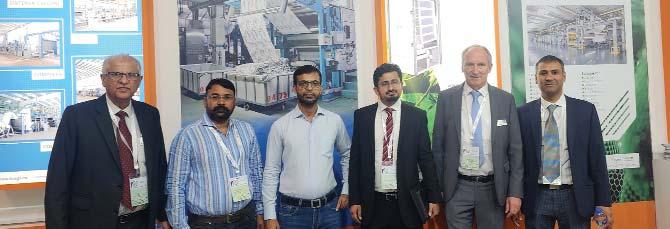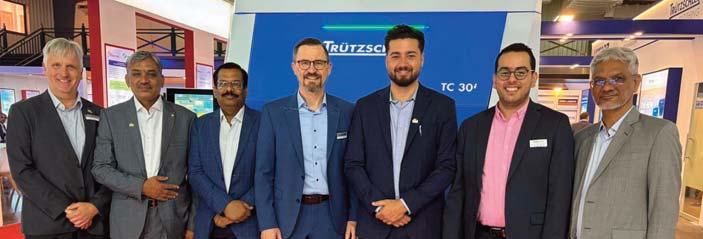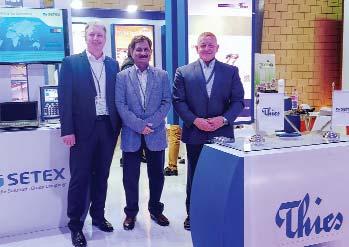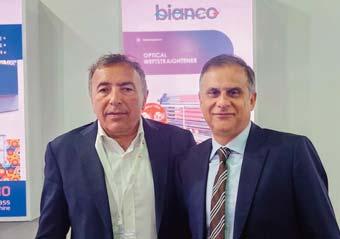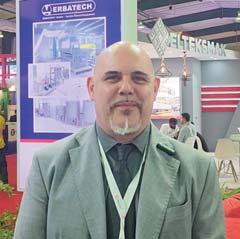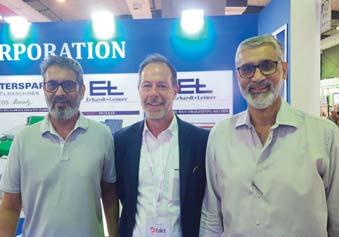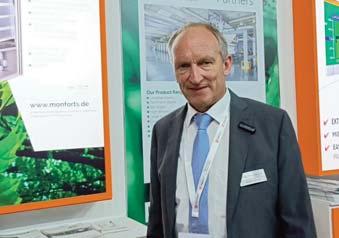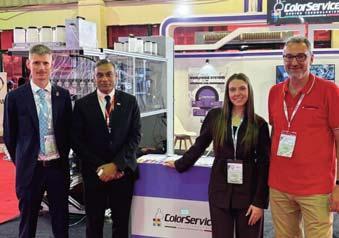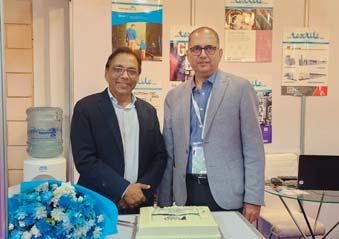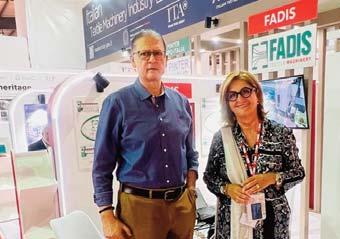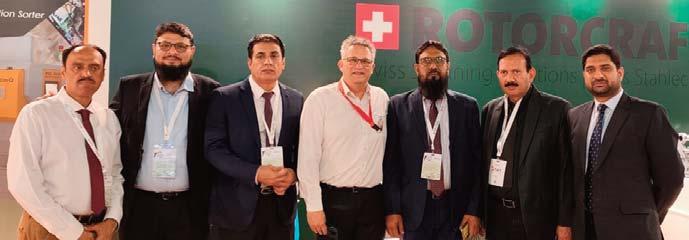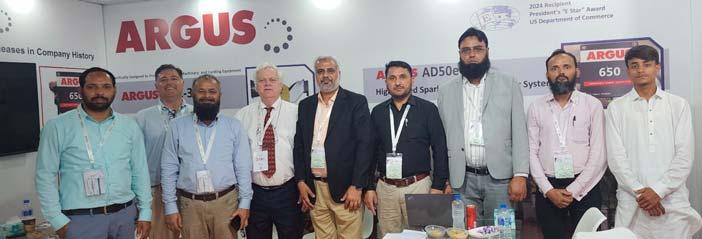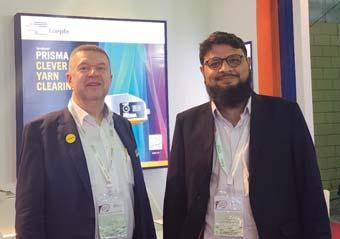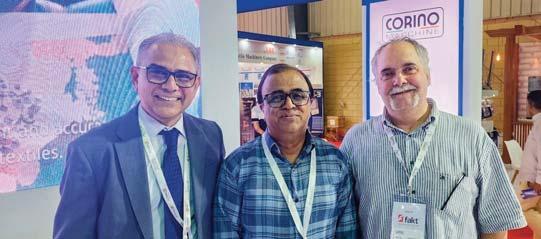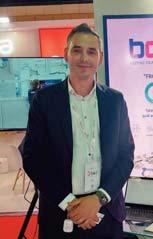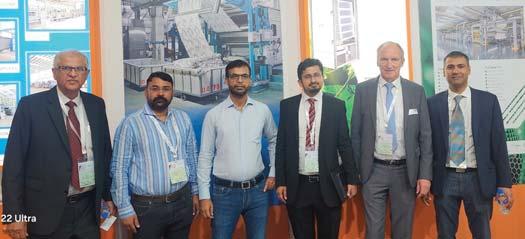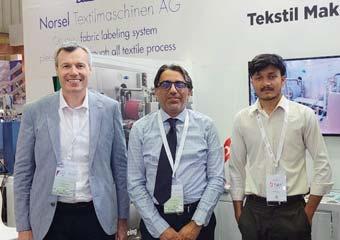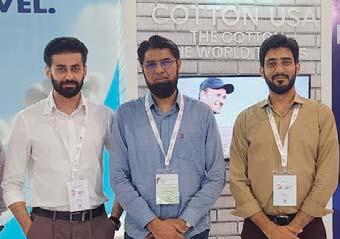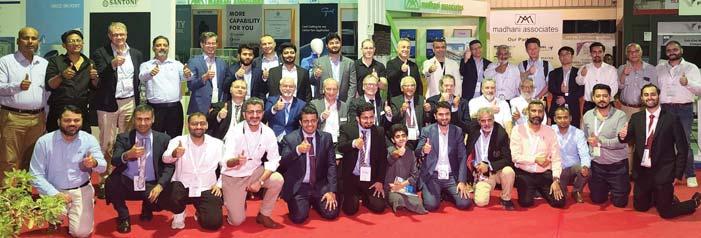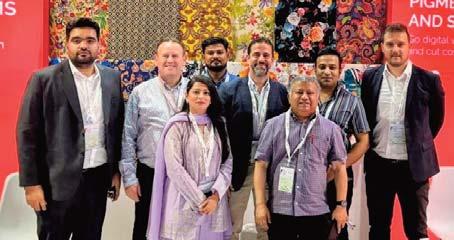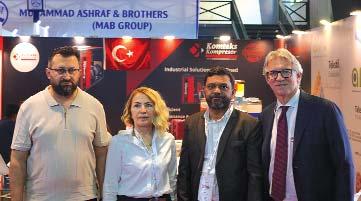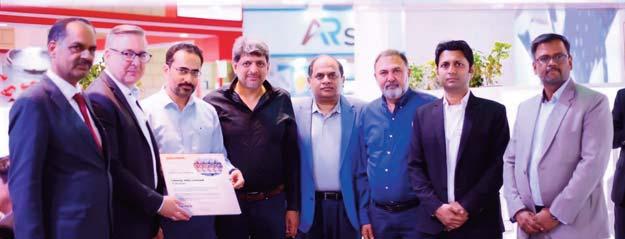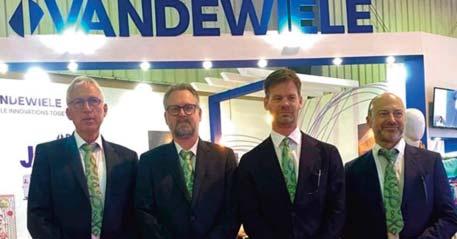
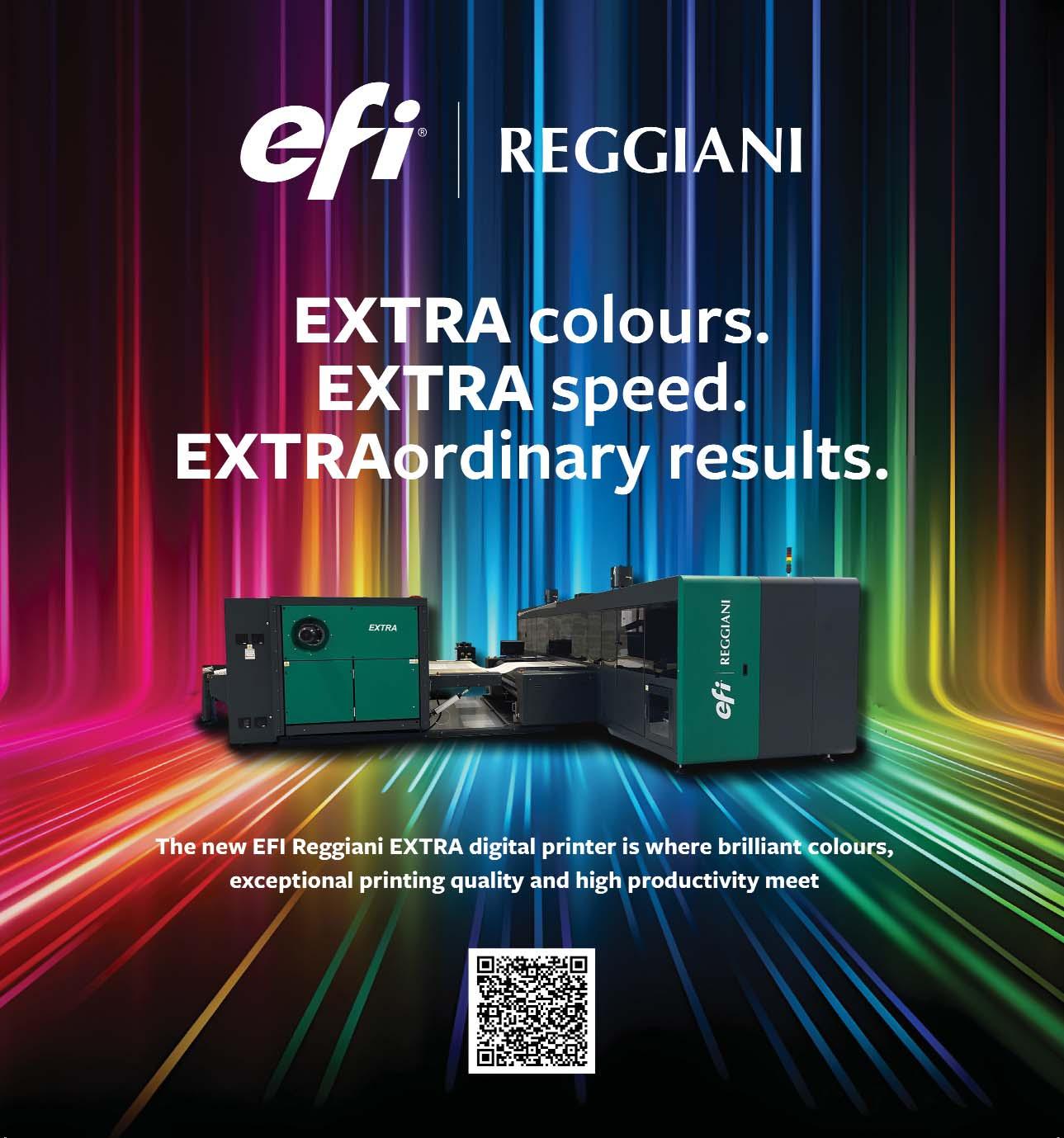








DPS World Pakistan 2025
Dates: July 25th to 27th 2025.
Venue: Lahore Expo Centre.
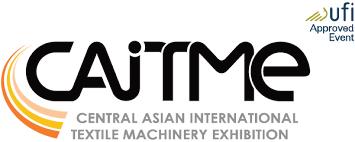
CAITME 2025
Dates: September 9th to 11th, 2025.
Venue: Tashkent, Uzbekistan.

Apparel Sourcing Paris Autumn
Dates: September 15th to 17th 2025.
Venue: Paris

ITMA ASIA + CITME, Singapore 2025
Dates: October 28th to 31st, 2025.
Venue: Expo Centre Singapore.

ShanghaiTex 2025
Dates: November 16th to 19th 2025.
Venue: SNIEC, Shanghai, China.

Textile Asia 2025, Lahore
Dates: November 22nd to 24th 2025.
Venue: Lahore Expo Centre. Textile Asia 2026, Karachi
Dates: December 05th to 07th 2026. Venue: Expo Centre, Karachi.

Heimtextil 2026, Frankfurt
Dates: January 13th to 16th, 2026
Venue: Frankfurt am Main.

FESPA Middle East 2026
Dates: January 13th to 15th 2026.
Venue: Dubai Exhibition Centre.

DOMOTEX Hannover 2026
Dates: January 19th to 22nd 2026.
Venue: Hannover, Germany.

IGATEX Pakistan 2026, Lahore
Dates: April 08th to 11th 2026.
Venue: Expo Centre, Lahore
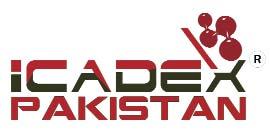
iCADEX Pakistan 2026, Lahore
Dates: April 08th to 11th 2026.
Venue: Expo Centre, Lahorei. PAKISTAN

Techtextil and Texprocess 2026
Dates: April 21st to 24th, 2026
Venue: Frankfurt, Germany.
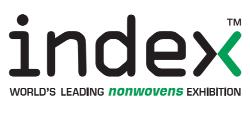
Index 2026
Dates: May 19th to 22nd, 2026. Venue: Palexpo, Geneva, Switzerland.
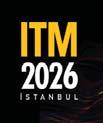
ITM 2026
Dates: June 9th to 13th, 2026. Venue: Istanbul, Turkey.

HIGHTEX 2026
Dates: June 9th to 13th, 2026. Venue: Istanbul, Turkey.

ITMA ASIA + CITME 2026
Dates: October 20th to 24th, 2026. Venue: NECC, Shanghai, China.

DOMOTEX asiaCHINAFLOOR 2026
Dates: May 27th to 29th 2026.
Venue: NECC, Shanghai, China.

ITMA 2027
Dates: September 16th to 22nd, 2027. Venue: Hanover, Germany.


Founded in 1951 by Mazhar Yusuf (1924-2009)
Publisher
Nadeem Mazhar
Editor in Chief Amina Baqai
Associate Editor
Nimrah Nadeem
Production Manager
Mazhar Ali
Layout & Design
Noor M. Jaan
Website / Social Media
Minhaj Ali
Hony-Editorial Board
Dr. Hafizur Rehman Sheikh Ph.D (UK) F.T.I. (UK)
Syed Mahfooz Qutab
C.TEX, F.T.I (U.K), B.Sc. Fellow I.C.T.T Atlanta, GA; (USA)
Dr. Zubair Bandukda PhD (Textiles), CText ATI
Engr. Naeem Ilyas Khanani
Editorial & Advertising Office
B-4, 2nd Floor, 64/21, M.A.C.H, Miran M. Shah Road, Karachi - Pakistan
Tel: +92-21-34311674-5
Fax: +92-21-34533616
Email: info@ptj.com.pk URL: http://www.ptj.com.pk
PTJ Europe Ltd.
Registered Office: Dairy House, Money Row Green, Holyport, Maidenhead, Berkshire, SL6 2ND, United Kingdom.
Registered no. 09141989
Tel: +44 792 2228 721
Available on Gale and Factiva affiliated international databases through Asianet Pakistan
Printed at: Color Plus Korangi, Karachi.
Published by Nadeem Mazhar from D-16, K.D.A. Scheme No.1. Karachi.




















Cotton Incorporated hosts global dialogue in Hong Kong to lead cotton forward . .18 Big Rock Candy Mountaineering first to market with eVent Fabrics’ high performance, PFAS-free alpineST
Register now for The Textile Institute World Conference (TIWC) 2025
.20 YKK makes the switch to 100% low-carbon aluminum for use in aluminum alloy zippers

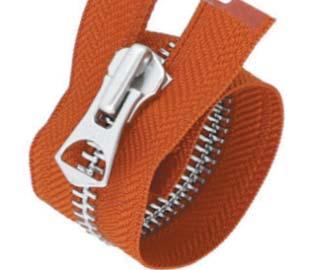
DyStar receives top honors at 2025 P2K3 Awards for Excellence in Workplace Safety and Health
Heimtextil expands mattress area with strong German brands - ‘Sleep & Meet’ area to be launched in 2026



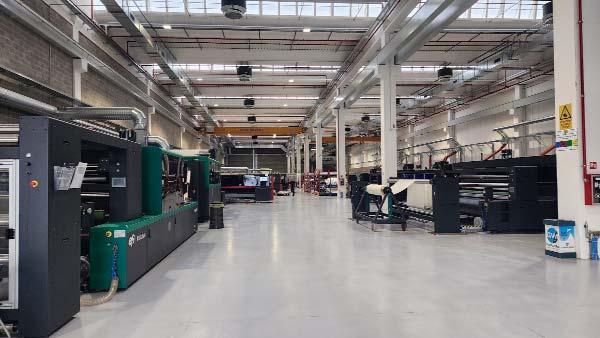
Rieter to acquire Barmag from OC Oerlikon to accelerate its growth strategy and become a market leader in natural and manmade fibers
Growing with a vision: BRÜCKNER opens branch office in India
Trützschler India relocates to ultra-modern manufacturing plant in Sanand . . .35
All-new Uster AFIS 6 – The indispensable process control instrument
Uster Technologies introduces its new fiber process control system iTextiles® exclusively brings ARAWIN® by Toray to Pakistan
High-Performance Meta-Aramid for Advanced Protective and Industrial Textiles
Trust Protocol achieves sixth year of record growth in enrolled acres and growers, despite challenging growing conditions
Inside EFI Reggiani’s Bergamo Innovation Centre: A firsthand look at sustainable, scalable printing
By Nadeem Mazhar, Pakistan Textile Journal
Ken Hanulec, VP, WW Marketing, EFI talks about ecoTERRA and the future of digital textile printing
Vincenzo Marino, VP, General Manager, EFI discusses EFI’s leadership in sustainable digital textile printing
FESPA 2025 gathers leading visionaries from across the speciality print industry in Berlin .
FESPA 2025 participation report – Spotlight on leading exhibitors
FESPA Foundation: Empowering communities through print
VDMA Joint Industry Meeting 2025: From Fibre to Fashion
Pakistan continues to shine in the global denim market
by Nadeem Mazhar, Managing Editor, Pakistan Textile Journal.
Picanol Group opens new headquarters in Ieper - Prime Minister Bart De Wever in attendance
Stäubli weaving solutions for innovative home textiles and garment fabrics


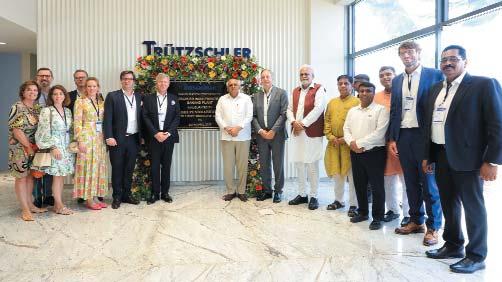

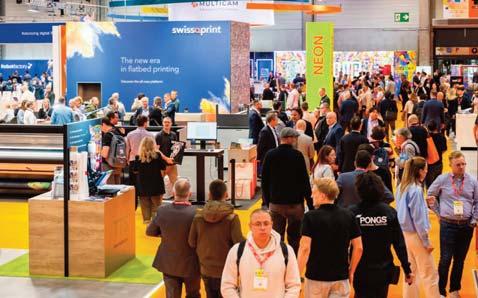
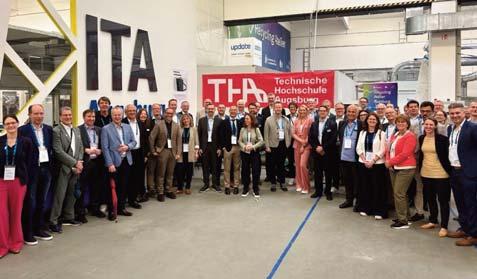
Saurer:
Jeanologia: The global
Picanol:


EDITOR’S PAGE
The June 2025 issue of Pakistan Textile Journal arrives at a time when Pakistan’s textile sector is regaining its footing while contending with global volatility, shifting policy frameworks, and intense regional competition. Encouragingly, April's export earnings of $1.44 billion marked an 11% increase year-on-year, a sign of underlying resilience and strategic repositioning by key players.
This month’s Cover Story takes readers inside EFI Reggiani’s groundbreaking Innovation Centre in Bergamo, Italy. With advanced solutions like the high-speed BOLT XS and the sustainable ecoTERRA pigment platform, EFI is reshaping the future of textile printing. Their approach—combining waterless processing, workflow integration, and high scalability—offers a blueprint for Pakistani manufacturers striving to modernize responsibly and compete globally. Our exclusive interviews with EFI leadership offer deep insight into why speed, sustainability, and digitization are now essential pillars of textile success.
This theme is further amplified through our coverage of FESPA Global Print Expo 2025, held in Berlin. From breakthroughs in pigment and DTF printing to smart automation and personalized production, FESPA made clear that the industry is accelerating toward low-waste, data-driven solutions. For Pakistan, the message is clear: future competitiveness will depend not just on pricing, but on capability, compliance, and climate readiness.
On the home front, IGATEX Pakistan 2025 drew strong participation across the value chain—from machinery suppliers and automation leaders to dyeing and finishing specialists. The exhibition confirmed a renewed appetite for investment in technology, even amid broader fiscal constraints. Of particular note was the strong Italian presence, with renowned brands in weaving, finishing, printing, and technical textiles showcasing their latest advancements. This growing partnership underscores the increasing synergy between Italian innovation and Pakistan’s evolving manufacturing base.
To celebrate this momentum, our July 2025 issue will feature a special Italian Review, highlighting the contributions of Italian machinery makers to Pakistan’s valueadded growth.
However, as stakeholders across the sector continue to emphasize, innovation alone will not be enough. Calls for urgent policy reform—from reinstating the Final Tax Regime to simplifying the Export Facilitation Scheme and ensuring competitive energy pricing— remain central to export-led recovery. Without structural support, many SMEs will find it increasingly difficult to compete in global markets.
Also in this issue, we explore Pakistan’s rising strength in denim exports, cover developments in fiber processing and smart manufacturing, and report on investment trends in Bangladesh, Egypt, and Vietnam—all of whom are making strategic policy choices to boost their global footprint.
Pakistan’s textile industry has shown its ability to adapt, compete, and lead. But this moment demands bold action, shared vision, and sustained commitment from both the private and public sectors. Only then can we convert promise into performance—locally, regionally, and globally.



1Pakistan’s textile industry continued its upward trajectory in April 2025, reporting export earnings of $1.44 billion, an 11.1% increase over the $1.3 billion recorded in the same month last year, as per the latest figures from the State Bank of Pakistan (SBP). The sector also edged slightly higher on a monthly basis, posting a marginal gain of 0.042% over March’s $1.443 billion.For the July–April period of the current fiscal year (10MFY25), cumulative textile shipments amounted to $14.48 billion, representing a 6.8% rise compared to the $13.56 billion logged during the same period last year.

2
Earlier this month, the federal government informed the National Assembly that the United States has introduced a 30% reciprocal tariff on imports from Pakistan, though the measure is currently under a 90-day suspension. The announcement has drawn a mixed response from the business community.
3
Pakistan’s textile sector has the potential to add an immediate $3–4 billionto annual export revenues,provided the government creates a more supportive policy environment, accordingto the Pakistan Textile Council (PTC).
1Australia’s cotton industry has reported a robust upswing in production for the 2024–25 fiscal year, with output of cotton lint projected to hit 1.2 million tonnes—an increase of 12% over the previous year. This growth is underpinned by an expansion in planted area and exceptional crop yields, according to the latest quarterly Australian Crop Report published in June 2025 by the Australian Bureau of Agricultural and Resource Economics and Sciences (ABARES).
2
Bangladesh has allocated TK 4.8 billion (approximately $56 million) for the Ministry of Jute and Textile in the
4
Kamran Arshad, Chairperson of the All-Pakistan Textile Mills Association (APTMA), has welcomed the government's recent move to impose an 18% sales tax on imported cotton yarn, calling it a much-needed correction in the country’s textile taxation regime. The measure, he noted, addresses a long-standing imbalance in the market and marks an important step in aligning the Export Facilitation Scheme (EFS) with equitable trade principles.
5The Pakistan Readymade Garments Manufacturers and Exporters Association (PRGMEA) has called on the federal government to introduce targeted policy
reforms in the upcoming national budget to address urgent issues hampering the country’s value-added textile export sector. Representing a $4.9 billion export segment, PRGMEA has submitted detailed proposals to Prime Minister Shehbaz Sharif and Haroon Akhtar Khan, Special Assistant to the Prime Minister on Industries and Production. PRGMEA also recommended the reinstatement of the Final Tax Regime (FTR) to simplify tax filing, eliminate redundant audits, and create a more business-friendly environment—particularly for small and mid-sized exporters.

upcoming fiscal year 2025–26, as revealed by Finance Adviser Salehuddin Ahmed during the national budget announcement earlier this month. Of the total sum, TK 2.32 billion is set aside for operating costs, while TK 2.48 billion will fund development initiatives.
3
Cambodia's garment industry posted robust growth in the first four months of 2025, with clothing exports soaring to $3.14 billion—up 21 per cent compared to the same period last year. This segment alone contributed more than a third (34.4 per cent) of the country’s overall export revenue, which climbed to $9.14 billion, according to figures
released by the General Department of Customs and Excise (GDCE).
4
A delegation representing 25 Chinese textile and apparel companies recently concluded a visit to Egypt as part of efforts to identify strategic investment and collaboration opportunities within the country’s burgeoning textile industry. The group held talks with Minister of Public Business Sector Mohamed Shimy, who outlined Egypt’s robust industrial infrastructure and its appeal as an investment destination.
5
Egypt’s textile and apparel sector is undergoing a dynamic transformation, fuelled by

strategic funding, operational cost advantages, and a government-backed push to enhance industrial infrastructure. Industry experts point to shifting global economic conditions and a sharp rise in foreign direct investment as key catalysts for the sector’s rapid development.
6
Vietnam’s textile and garment industry has maintained impressive momentum in the face of global economic headwinds, achieving over $17.58 billion in export revenue during the first five months of 2025—a 9% increase compared to the same period last year.

Pakistan’s textile industry continued its upward trajectory in April 2025, reporting export earnings of $1.44 billion, an 11.1% increase over the $1.3 billion recorded in the same month last year, as per the latest figures from the State Bank of Pakistan (SBP). The sector also edged slightly higher on a monthly basis, posting a marginal gain of 0.042% over March’s $1.443 billion.
This strong performance comes at a time when other export sectors are grappling with stagnation, further reinforcing the textile sector’s role as the cornerstone of the country’s export economy. In April alone, textile products accounted for more than half—55.3%— of Pakistan’s total exports.
For the July–April period of the current fiscal year (10MFY25), cumulative textile shipments amounted to $14.48 billion, representing a 6.8% rise compared to the $13.56 billion logged during the same period last year.
April’s breakdown by category presents a varied picture. Knitwear maintained its lead in terms of value, generating $360 million, but saw a 5.3% year-on-year decline—suggesting waning demand or intensified price competition in core markets like the EU and the United States.
In contrast, exports of readymade garments climbed to $350 million, a 5.6% increase from the previous year. Industry insiders attribute the growth to the launch of new collections and
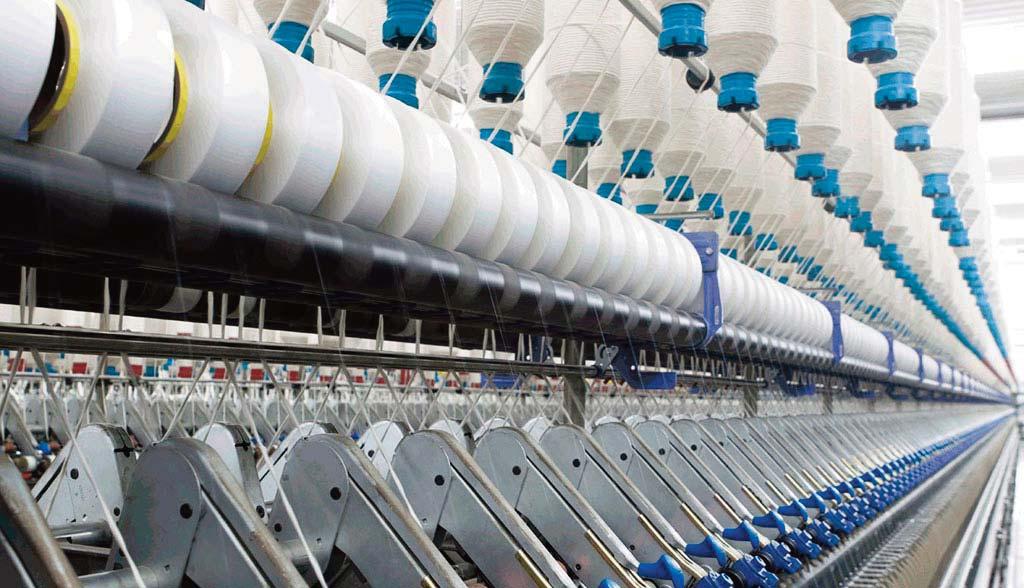
stronger buyer interest, particularly from European retailers.
Home textiles also registered significant growth. Bed linen exports surged by 13.4% year-on-year to $270 million, a trend likely driven by seasonal inventory restocking in Western markets. While detailed figures were not disclosed for towels, cotton fabrics, and other highvalue segments, these too were reported to have made positive contributions.
Multiple factors are supporting the textile sector’s rebound. Macroeconomic conditions have shown signs of stabilization, the rupee has firmed up, and international freight rates have dropped. At the same time, falling cotton prices globally have eased input cost pressures for manufacturers.
Textile exporters have welcomed consistent power supplies and faster sales tax refunds, both of which have historically posed major operational hurdles. Despite these gains, industry

leaders continue to call for competitive energy pricing to maintain momentum, particularly against rivals in South and Southeast Asia.
Looking toward the end of the fiscal year, exporters remain cautiously optimistic. With just two months remaining, the sector is aiming to push total exports closer to—or beyond—the $17 billion mark. Anticipated pre-holiday orders from Western buyers and ongoing government policy support could help realize that target.
Nevertheless, the path forward is not without challenges. Exporters remain wary of a potential slowdown in global demand, intensifying competition from countries like Bangladesh and Vietnam, and the possibility of reduced domestic subsidies due to fiscal tightening.
Earlier this month, the federal government informed the National Assembly that the United States has introduced a 30% reciprocal tariff on imports from Pakistan, though the measure is currently under a 90-day suspension. The announcement has drawn a mixed response from the business community.
While many Pakistani exporters view the tariff as a hurdle to market access, others see a potential silver lining. Some believe that higher duties on competing countries may open up space for Pakistan to strengthen its export position in the US market.


Commerce Minister Jam Kamal, in a written statement responding to a query from lawmaker Mirza Ikhtiar Baig, confirmed the temporary suspension of the US tariff and acknowledged industry concerns. To address the situation, the prime minister has established a Steering Committee and a dedicated working group to evaluate the economic impact and formulate a strategic policy response. The Ministry of Commerce is actively consulting with stakeholders across government departments and the export sector to frame a coordinated approach for dialogue with Washington.
Data presented in the Assembly highlighted that Pakistan enjoyed a trade surplus with the US in the last fiscal year.
In FY 2023–24, Pakistan exported $5.3 billion worth of goods to the US, while imports stood at $2.2 billion, resulting in a $3.1 billion surplus. From July 2024 through March 2025, exports totalled $4.4 billion against imports of $1.9 billion. Key exports included garments, medical instruments, and PET-grade plastics, whereas major imports from the US consisted of cotton, steel scrap, petroleum products, computers, soybeans, and almonds.
Separately, during the session, Parliamentary Secretary for Commerce Zulfiqar Ali Khan responded to a question from Sharmila Faroqui by announcing that a new textile policy is on the horizon. Expected to be revealed within the next few months, the policy may propose an exemption from the current 11% sales tax on domestically produced cotton—a move aimed at stimulating local production and supporting the textile value chain.
Khan further noted that exports of value-added textile products have climbed by 35% over the past five years, reflecting growth in the country’s textile manufacturing and export capabilities.
Pakistan’s textile sector has the potential to add an immediate $3–4 billion to annual export revenues, provided the government creates a more supportive policy environment, according to the Pakistan Textile Council (PTC).
The statement was made by PTC Chairman Fawad Anwar during a recent meeting with Federal Minister for Commerce Jam Kamal Khan. Anwar was accompanied by Asif Tata, Chairman of the Naveena Group, and PTC CEO Muhammad H. Shafqaat. The discussion centered on key enablers for the growth of textiles and apparel exports, including tax and tariff adjustments, energy pricing reforms, and incentives for green investments.
Commerce Minister Jam Kamal reaffirmed the government’s commitment to bolstering export-oriented industries in the upcoming federal budget. He noted that efforts were underway to achieve tariff parity with regional competitors.
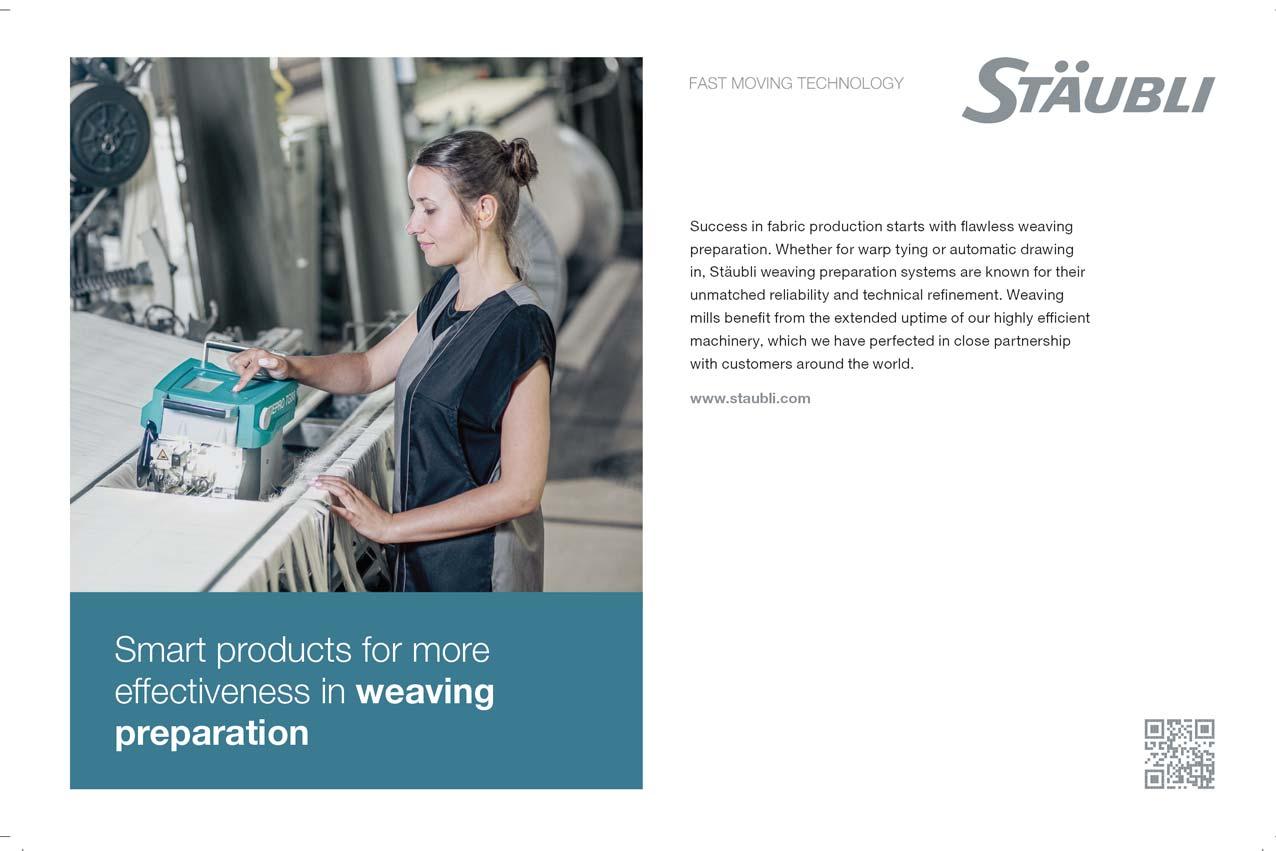
“A framework for long-term tariff rationalisation is already in motion, with a dedicated committee led by Finance Minister Muhammad Aurangzeb,” he said.
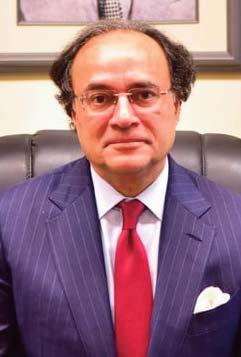
He further acknowledged the need for gradual adjustments, adding, “While reductions will take time, our goal is clear—supporting industrial growth remains a top priority.”
Key issues raised during the meeting included the need for regionally competitive energy rates, the effective deployment of the Export Development Fund, and the swift disbursement of outstanding claims under various government incentive schemes.
The PTC also advocated for the introduction of Green Credit Schemes, aimed at helping textile manufacturers meet evolving global sustainability benchmarks and accelerate progress on industrial decarbonization. The delegation highlighted the sector’s ongoing transition to renewable energy sources such as solar, biomass, and wind, stressing that continued government backing is essential to sustaining this shift.
Minister Kamal reiterated the administration’s intention to tailor economic policies to meet the needs of the export sector. “We must empower the formal industry to grow, invest, and drive industrial expansion—that’s the key to sustainable economic progress,” he remarked.
Kamran Arshad, Chairperson of the All-Pakistan Textile Mills Association (APTMA), has welcomed the government's recent move to impose an 18% sales tax on imported cotton yarn, calling it a much-needed correction in the country’s textile taxation regime. The measure, he noted, addresses a longstanding imbalance in the market and marks an important step in aligning the Export Facilitation Scheme (EFS) with

equitable trade principles.
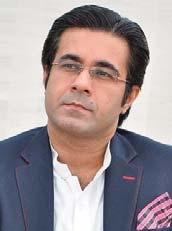
“This is a positive signal that the government is serious about fostering a fairer domestic supply chain,” Arshad said, emphasizing the association’s support for the initiative. However, he cautioned that while the adjustment is a step in the right direction, it falls short of addressing deeper structural issues threatening the sustainability of the textile value chain. Arshad highlighted that the spinning sector has already endured significant setbacks due to past policy misalignments, and now the ripple effects are threatening to destabilize downstream sectors such as weaving.
Under the current EFS framework, imported raw materials for export are zero-rated, while domestically produced inputs continue to carry an 18% sales tax — a disparity that disadvantages local producers. APTMA has called on the government to close this gap by applying the 18% sales tax uniformly across all yarns and fabrics — whether cotton or polyester — imported under the EFS.
The association has also proposed that these imports be added to the EFS Negative List, thereby subjecting them to a 5% customs duty on yarn and an 11% duty on fabric. Such a step, it argues, would restore competitive neutrality and stimulate domestic production capacity rather than discouraging it.
Particularly alarming, Arshad pointed out, is the case of polycotton and polyester yarns, which already cost around 35% more to produce locally.
Granting tax-free status to their imported counterparts, while continuing to tax domestic production, undermines investment confidence and derails the goal of industrial self-reliance.
APTMA further urged the government to eliminate the 18% sales tax currently levied on cottonseed and cottonseed cake — essential byproducts used predominantly in livestock feed. These items are exempt from sales tax in virtually all major cotton-producing nations. The present tax structure, the association warned, is financially unsustainable for farmers and risks prompting a shift toward water-intensive crops, aggravating both environmental and economic vulnerabilities.
While APTMA acknowledged and appreciated the government’s broader economic stabilization efforts — including reductions in energy tariffs to around 11 cents per kWh, a significant drop in interest rates from 22% to 11%, and notable progress in taming inflation — the association stressed that more comprehensive policy alignment is urgently required.
The Pakistan Readymade Garments Manufacturers and Exporters Association (PRGMEA) has called on the federal government to introduce targeted policy reforms in the upcoming national budget to address urgent issues hampering the country’s value-added textile export sector. Representing a $4.9 billion export segment, PRGMEA has submitted detailed proposals to Prime Minister Shehbaz Sharif and Haroon Akhtar Khan, Special Assistant to the Prime Minister on Industries and Production.
In a letter shared on behalf of the association, former PRGMEA Chairman Ijaz A. Khokhar outlined six priority areas requiring immediate attention: the reinstatement of the Export Facilitation Scheme (EFS) and Final Tax Regime (FTR), engagement with U.S. trade authorities over high tariffs, resolution of refund backlogs, preparation for the upcoming GSP+ review, and the initiation of a nationwide “Made in Pakistan” branding campaign.

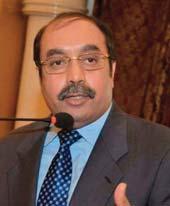
Khokhar stressed that Pakistan’s value-added textile sector is facing critical headwinds just as global buyers are actively diversifying supply chains beyond traditional sourcing destinations. He warned that without swift, focused action, the country risks missing a window of opportunity to expand its global market share. Policy continuity, SMEcentric incentives, and reduced business costs are vital to achieving Prime Minister Shehbaz Sharif’s vision of reaching $100 billion in exports, he added.
A key concern raised by PRGMEA is the dilution of the original EFS framework, which exporters say has become overly restrictive, especially for SMEs operating on Just-inTime (JIT) and Never-Out-of-Stock (NOS) models. Khokhar argued that recent changes have hindered flexibility and increased compliance burdens. He urged the government to restore the EFS in its original form to ensure it remains a facilitative tool rather than a barrier.
He also cautioned against imposing any form of sales tax within the EFS mechanism, noting that it could lead to duplicate taxation and financial strain for exporters already navigating thin margins and high operating costs.
Addressing recent demands from certain textile subsectors to remove fabric and yarn from EFS coverage, Khokhar pointed out that such materials are often not manufactured domestically to international specifications. Many exporters are required by international buyers to source specific technical fabrics and yarns from approved suppliers abroad. Any restrictions on these inputs would severely limit Pakistan’s ability to meet global quality benchmarks, he said.
PRGMEA also recommended the reinstatement of the Final Tax Regime (FTR) to simplify tax filing, eliminate redundant audits, and create a more business-friendly environment—particularly for small and mid-sized exporters.
The association further called for the implementation of a fully automated and time-bound refund mechanism. Khokhar noted that chronic delays in the disbursement of sales tax refunds and customs rebates continue to disrupt cash flows and operations, especially for SMEs.
To support long-term growth and improve global visibility, PRGMEA proposed a robust “Made in Pakistan” marketing initiative under the Ministry of Commerce. The campaign would include participation in international trade shows, B2B matchmaking, and digital promotion through Pakistani embassies abroad.
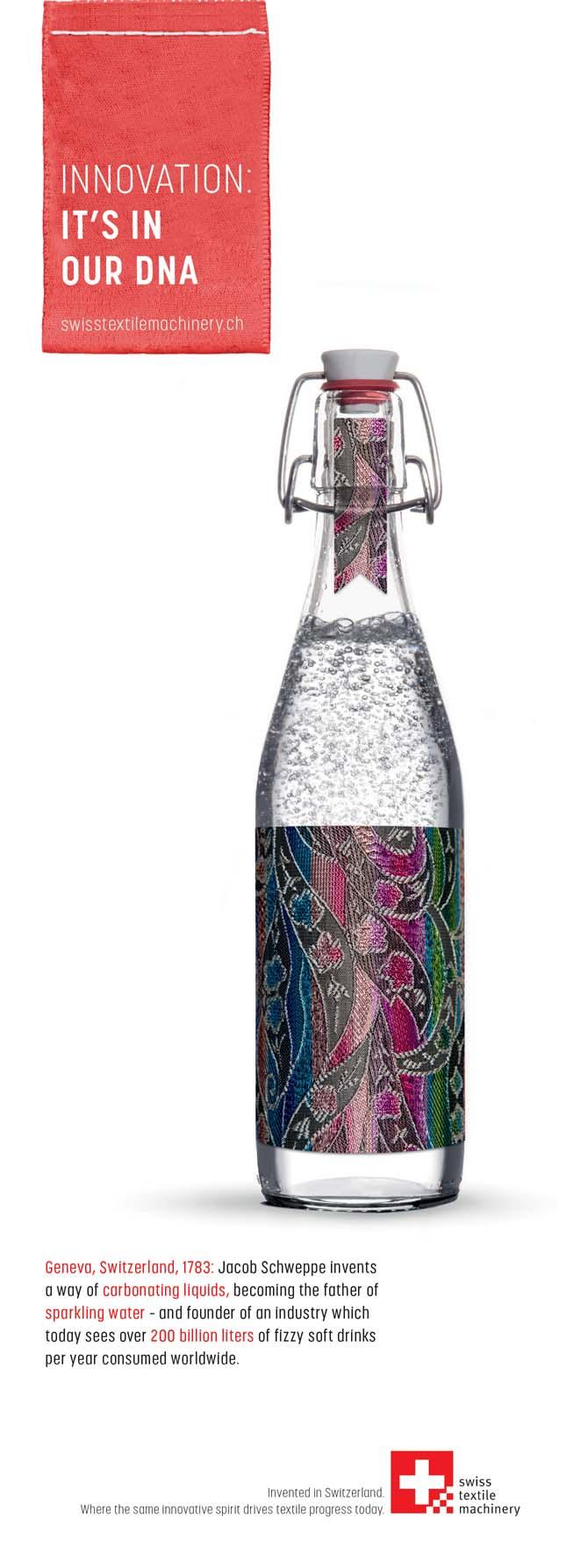

Australia’s cotton industry has reported a remarkable upswing in production for the 2024–25 fiscal year, with output of cotton lint projected to hit 1.2 million tonnes—an increase of 12% over the previous year. This growth is underpinned by an expansion in planted area and exceptional crop yields, according to the latest quarterly Australian Crop Report published in June 2025 by the Australian Bureau of Agricultural and Resource Economics and Sciences (ABARES).
The total area dedicated to cotton cultivation has expanded by an estimated 10%, reaching 519,000 hectares. This marks a 30% increase compared to the decade-long average up to 2023–24, with Queensland driving much of this rise. A combination of abundant water resources and higher-than-usual rainfall across eastern Australia has led to yield levels well above historical averages— bringing overall production figures to 54% above the 10-year benchmark.
In Queensland, summer cotton yields are expected to be among the highest ever recorded, despite some setbacks caused by intense rainfall in certain regions. These weather patterns supported a notable rise in planted area, which jumped 33% to approximately

162,000 hectares. As a result, Queensland’s lint production is forecast to climb by 40% year-on-year to reach 410,000 tonnes.
Meanwhile, cotton output in New South Wales has remained relatively stable at an estimated 782,000 tonnes, maintaining a strong position at 51% above the 10-year average. The area under cultivation in the state stands at 336,000 hectares—largely unchanged from the previous year, yet still significantly higher than historical trends.
The state's production benefitted from favourable growing conditions, with irrigated cotton supported by ample water supplies and dryland cotton receiving timely spring rainfall and good soil moisture levels. These optimal

environmental factors have helped both Queensland and New South Wales consolidate their roles as Australia’s primary cotton-producing regions during the fiscal year.

Bangladesh has allocated TK 4.8 billion (approximately $56 million) for the Ministry of Jute and Textile in the upcoming fiscal year 2025–26, as revealed by Finance Adviser Salehuddin Ahmed during the national budget announcement earlier this month. Of the total sum, TK 2.32 billion is set aside for operating costs, while TK 2.48 billion will fund development initiatives.
In comparison, the revised budget for the current fiscal year (FY25) had earmarked TK 4.98 billion for the ministry.
The Bangladesh Garment Manufacturers and Exporters Association (BGMEA) welcomed key elements of the new budget, particularly the government’s move to maintain the current export source tax and industry corporate tax rates. The association highlighted this as a timely support measure amid mounting pressures on the country’s readymade garment (RMG) industry.
Challenges such as the imposition of retaliatory tariffs by the US, halted transhipments from India, elevated bank lending rates, rising labour costs, and frequent hikes in utility prices have all strained the sector. The BGMEA noted that the decision to maintain existing tax levels will offer some relief.
The proposed budget also outlines a 10 per cent reduction in the cost of electricity generation, aiming to lower government subsidies in the power sector over time. Importantly, the authorities have opted against increasing electricity prices in the near term to help curb inflation—a move the BGMEA considers highly favourable for industrial sustainability.

Cambodia's garment industry posted robust growth in the first four months of 2025, with clothing exports soaring to $3.14 billion—up 21 per cent compared to the same period last year. This segment alone contributed more than a third (34.4 per cent) of the country’s overall export revenue, which climbed to $9.14 billion, according to figures released by the General Department of Customs and Excise (GDCE).
From January to April 2025, the shipment of knitted garments and related accessories generated $1.95 billion in revenue, reflecting a growth of nearly 20 per cent. At the same time, exports of woven garments and accessories surged by 22.9 per cent to reach $1.19 billion.
April 2025 figures reinforce the upward trend. Knitted apparel exports grew by 31.3 per cent to $486 million, compared to $370 million in April 2024. Woven garments also saw a notable rise, increasing by 27 per cent to $223 million during the month.
On the import side, Cambodia brought in $1.08 billion worth of knitted or crocheted fabric between January and April 2025, marking a 20.9 per cent increase from the same period last year. Purchases of man-made fibres stood at $486 million, up 12.4 per cent, while imports of cotton and cotton yarn reached $259 million— an 11.2 per cent rise.
For context, Cambodia’s apparel exports totalled nearly $9.8 billion in 2024—an impressive 24.4 per cent jump from the previous year. That total included $6.64 billion from knitted garments and $3.15 billion from woven ones. Meanwhile, imports that year amounted to $3.08 billion for knitted fabric, $1.35 billion for synthetic fibres, and $766 million for cotton and yarn.
In contrast, 2023 had seen a downturn in garment exports, which dipped by 12.9 per cent to $7.87 billion, following a strong 12.7 per cent growth in 2022 when the industry reached $9.04 billion in total export earnings.


A delegation representing 25 Chinese textile and apparel companies recently concluded a visit to Egypt as part of efforts to identify strategic investment and collaboration opportunities within the country’s burgeoning textile industry. The group held talks with Minister of Public Business Sector Mohamed Shimy, who outlined Egypt’s robust industrial infrastructure and its appeal as an investment destination.
During the visit, the delegation was introduced to a wide range of premium textile products manufactured by Egypt’s Cotton, Spinning, Weaving, and Garments Holding Company. These included yarns, fabrics, ready-made garments, home textiles, and specialized medical textiles. The discussions reflected a shared interest in strengthening ties between Chinese manufacturers and Egyptian state-owned enterprises.
The engagement is part of Egypt’s broader push to rejuvenate its textile sector through infrastructure upgrades and strategic partnerships. A key component of this strategy involves the development of two comprehensive textile hubs in Minya and Fayyoum. These industrial cities are being designed to house the full value chain—from raw material processing to finished garments—under one roof.
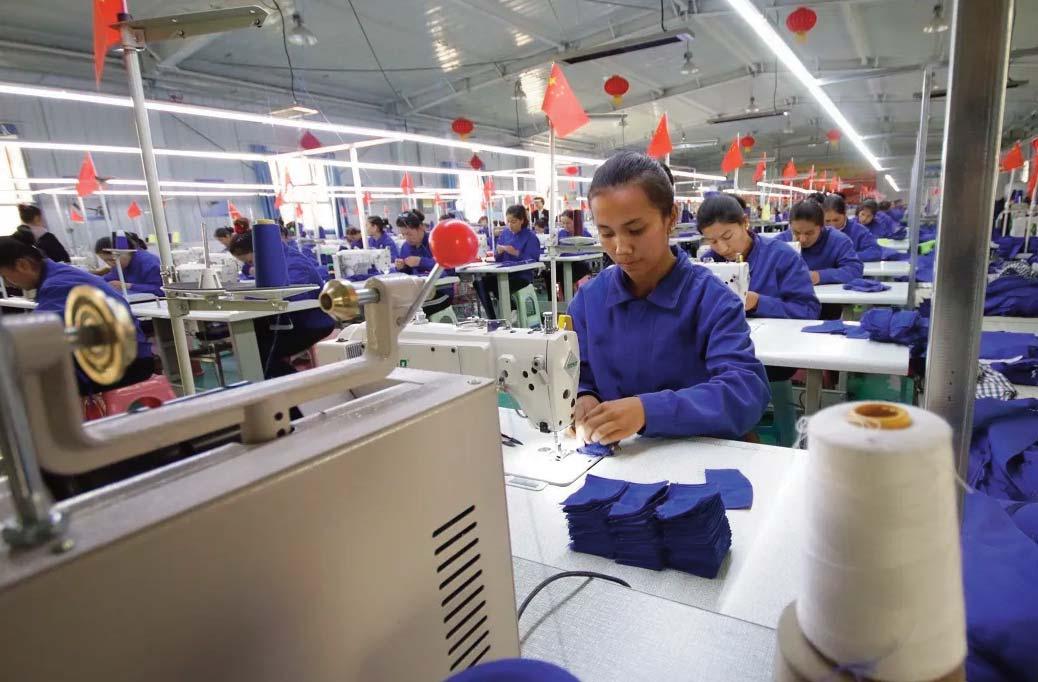
Among the most ambitious projects is a $9 billion textile and apparel manufacturing complex being established by Chinese firm Ningxia Mankai. Spanning more than 3 million square meters, the mega-site is expected to accommodate around 600 factories, significantly enhancing Egypt’s manufacturing capacity and creating thousands of jobs.
Egypt’s ongoing efforts to modernize its production ecosystem, improve logistics, and maintain cost-effective labour have positioned the country as a competitive alternative for global textile production. The deepening engagement with Chinese stakeholders is poised to accelerate technological advancement, expand export output, and reaffirm Egypt’s role as a textile powerhouse in the Middle East and Africa.


Egypt’s textile and apparel sector is undergoing a dynamic transformation, fuelled by strategic funding, operational cost advantages, and a governmentbacked push to enhance industrial infrastructure. Industry experts point to shifting global economic conditions and a sharp rise in foreign direct investment as key catalysts for the sector’s rapid development.
Affordable utility costs are playing a significant role in attracting international textile firms. Electricity rates stand at an average of $0.07 per kilowatt-hour, while water prices range from $0.30 to $0.50 per cubic meter. Construction expenses remain highly competitive, further strengthening Egypt’s appeal as a manufacturing destination.
Major global brands are capitalizing on these benefits, either launching new operations or scaling up existing production in the country.
Government support has been instrumental in this industrial upswing. The launch of ten dedicated textile zones, covering more than six million square meters, is expected to host around 1,250 factories and generate employment for an estimated 1.5 million workers. Foreign investment in the sector has surged,
reaching $5 billion—a strong indicator of international confidence in Egypt’s manufacturing capabilities.
In terms of trade ambitions, Egypt is targeting a rise in textile and garment exports to $1.4 billion by 2025, up from $1.2 billion in 2023. This vision was on full display at the Destination Africa 2024 exhibition in Cairo, where 30 Egyptian manufacturers engaged with more than 250 overseas buyers, underscoring the country’s expanding role on the global textile stage.

Vietnam’s Textile Sector Defies Global Headwinds, Notches $17.58 Billion in Export Revenues
Vietnam’s textile and garment industry has maintained impressive momentum in the face of global economic headwinds, achieving over $17.58 billion in export revenue during the first five months of 2025—a 9% increase compared to the same period last year. Despite persistent market
uncertainties and a slow rebound in global demand, the sector posted a healthy trade surplus of $6.95 billion, with imports totalling $10.63 billion, according to data from the Vietnam Textile and Apparel Association (VITAS).
Trương Văn Căm, vice chairman and general secretary of VITAS, emphasized the industry's ongoing resilience, noting that many companies have adapted to challenges such as geopolitical tensions and fluctuating consumer demand by refining their operations, boosting productivity, and targeting specialized market segments to generate new revenue streams.
Căm also highlighted the evolving U.S. tariff landscape as a double-edged sword, posing risks but also presenting openings for Vietnamese exporters. To hedge against these shifts, he urged local firms to broaden their export horizons and focus on emerging markets with untapped potential.
Drawing on a recent comparative analysis of textile sectors in regional economies—including Bangladesh, Cambodia, Laos, Nepal, China, and Vietnam—Căm pointed out that Vietnamese textile products
outperformed in most categories, trailing behind China only in select areas. He interpreted this as evidence of Vietnam’s increasing influence in the mid- to highend segments of the global textile and apparel value chain.
Still, structural issues persist. Chief among them is the industry’s reliance on imported raw materials, which not only complicates supply chain traceability—a critical factor for qualifying for preferential trade agreements—but also hampers product development and innovation. This dependency, Căm warned, may undermine Vietnam’s competitive edge over time.
Meanwhile, Vietnamese Ambassador to Russia, Đặng Minh Khôi, spotlighted the country’s growing export potential in the Russian market. Describing Russia as the fourth-largest economy in terms of purchasing power parity and a receptive market for Vietnamese garments, Khôi encouraged domestic producers to intensify their presence and engagement in the region.
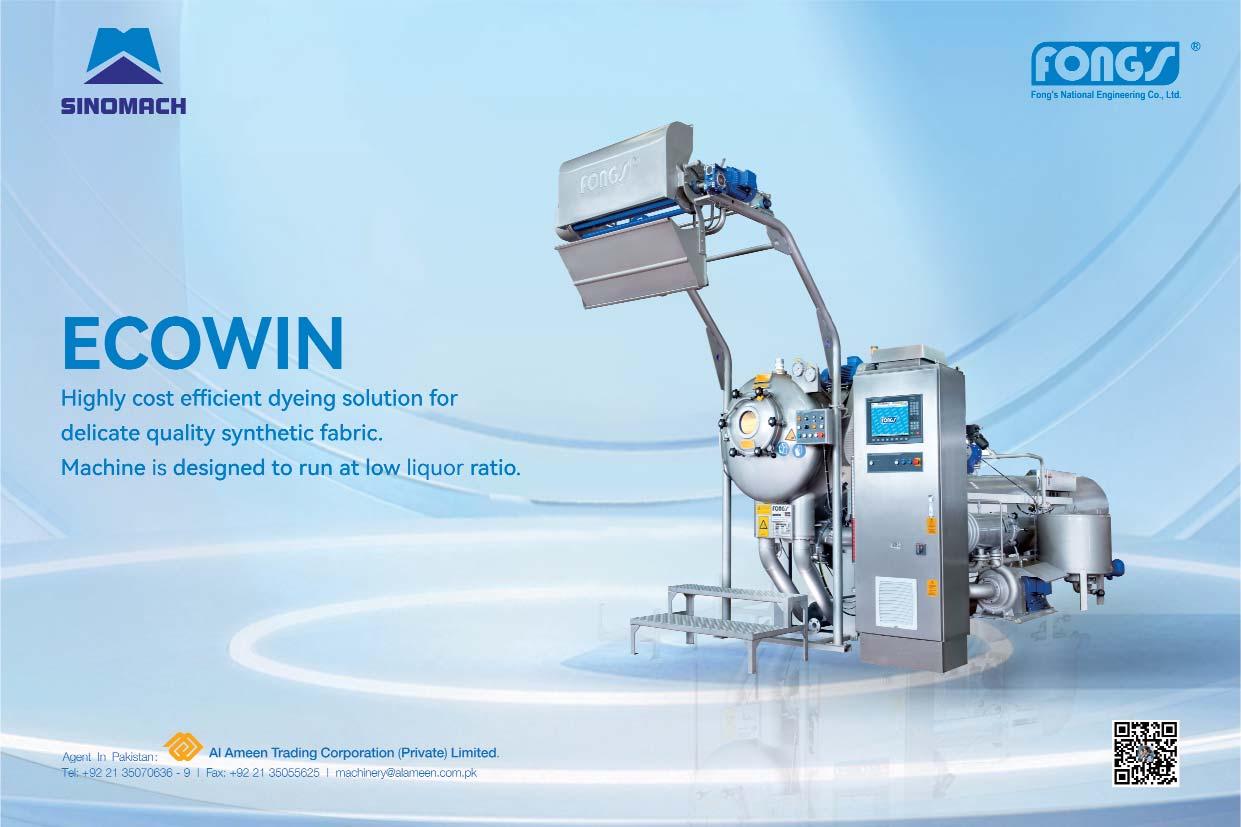
More than 250 industry leaders convene for insight, collaboration, and business ideas.
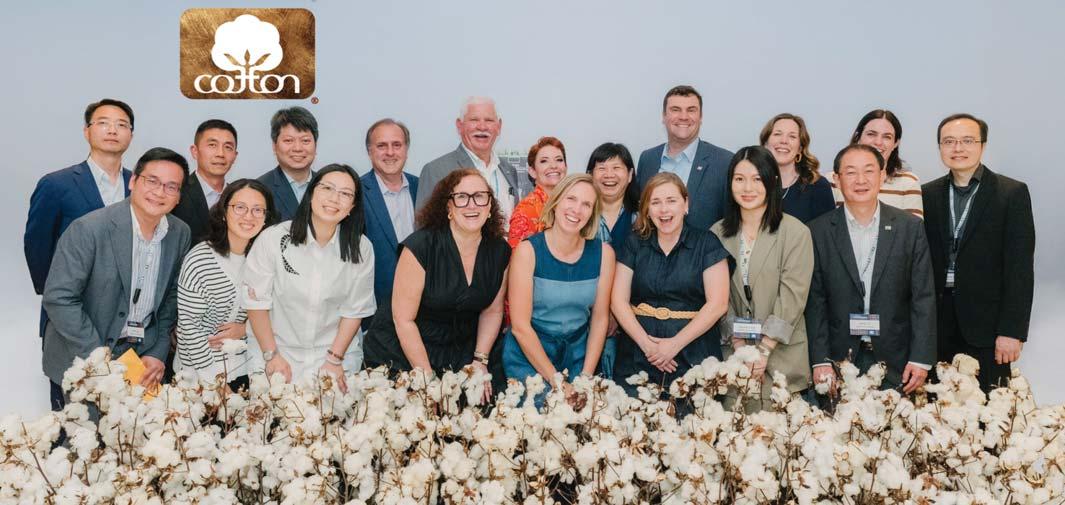
In a powerful display of global collaboration, more than 255 industry leaders from 124 companies including over 41 top global brands and sourcing organizations gathered in Hong Kong on May 15 for Cotton ConneXions: Where Innovation Meets Opportunity, a oneday summit hosted by Cotton Incorporated.
The event united the global cotton supply chain to discover innovations, recognize industry contributions, generate business orders, network, and address the challenges and opportunities shaping the fiber’s future amid regulatory shifts and evolving market dynamics.
“Through the Cotton ConneXions event, Cotton Incorporated serves as a convenor of global decision-makers, especially within the dynamic Asian region. We recognize that meaningful progress in the supply chain happens through collaboration. Events like this allow us to bridge innovation and opportunity, while reinforcing our commitment to advancing cotton’s role in a more sustainable, transparent, and
high-performing textile future,” notes William Kimbrell, president & CEO of Cotton Incorporated.
The agenda included forward-looking insights, beginning with opening remarks from President and CEO William Kimbrell, and Chairman of the Board, Marvin Arthur Beyer, Jr. A global market outlook from Mark Messura, senior vice president of Global Supply Chain Marketing at Cotton Incorporated, highlighted the economic and trade shifts impacting cotton’s role in the supply chain. An insightful presentation by Heidi van den Hul, founder of fabriCreation, focused on global compliance impacts. Presentations included a look at Fall/Winter 2026/2027 cotton trends, highlighting preferences among consumers for durable, longlasting fashion.
Next generation dyeing and finishing technologies, strategies for reducing the environmental impact of textile production, and cotton’s role in lowcarbon, plastic-free future were addressed by conference speakers. The event showcased the newly updated Cottonworks.com website, the most
extensive resource for cotton available to the industry.
“Cotton ConneXions is where ideas become action. Whether those ideas come from Cotton Incorporated or our many industry partners, we are proud to serve as a source of inspiration and practical ideas for helping manufacturers, brands, and retailers improve and expand their cotton business,” stated Mark Messura, senior vice president of Global Supply Chain Marketing.
Cotton Incorporated is the research and promotion company for Upland cotton. Funded by U.S. cotton growers and importers of Upland cottoncontaining products, the not-for-profit organization’s mission is to increase the demand for and profitability of cotton. As a resource for the cotton industry, Cotton Incorporated conducts or oversees more than 450 research and educational projects in an average year. Research areas range from the development of agricultural and textile innovations to analyses of commodity and market data.
Made with 100% recycled fabric, a PFAS-free membrane, and C0 DWR, eVent’s alpineST delivers high tech and
eVent® Fabrics, a global leader in breathable waterproof, weatherproof, and windproof fabric laminates, is proud to announce partner brand Big Rock Candy Mountaineering (BRCM) is first-to-market with their high performance, low impact alpineST laminate.
Blending modern materials with inspiration from the early American alpinists, mountaineers, and gear innovators who defined the outdoor style of the 1950s, 60s, and 70s, BRCM’s Dawn Wall Jacket sets the standard for style and performance. Critical to the jacket’s stormproofing, eVent’s alpineST laminate is made with durable recycled materials, a PFAS-free membrane, and C0 DWR finish, proving that brands can embrace cleaner technologies while enhancing performance.
"Our partnership with Big Rock Candy Mountaineering highlights several key trends shaping the future of outdoor apparel,” said Chad Kelly, President of eVent Fabrics. “First, we’re seeing a strong shift toward more sustainable solutions, like our high-performance, lower-impact laminates. Second, there’s a growing movement toward outdoor apparel that draws inspiration from heritage aesthetics and a time when quality, utility, and craftsmanship were paramount. It’s innovative boutique brands like BRCM that are looking both forward and backward to redefine what the next generation of outdoor gear can be.”
The team at BRCM chose alpineST for the Dawn Wall Jacket as this fabric is the first three-layer fabric delivering superior durable waterproof protection with high moisture vapor transfer rate (MVTR) that lasts season after season.
“Our overall brand mission is to take the timeless styles of the golden age of climbing and update them to fit well and last a lifetime. Part of accomplishing this comes with using the latest technical, planet-positive materials where we can, to create performance pieces that look as good as they perform,” said Samuel Hardeman, Founder of Big Rock Candy Mountaineering. “eVent is a natural fit, as they have succeeded where others have failed by blending cleaner tech with first-rate performance. As a result, together we have created a jacket that is perfectly vintage in style and futuristic in fabrication.”
In addition to the expedition-grade, PFAS-free alpineST laminate, the Dawn Wall Jacket features 100% recycled nylon face fabric for added abrasion resistance and a 100% recycled polyester baker fabric for comfort, and increased breathability, two top and side entry pockets, two chest pockets, waterproof zipper, and drawstring hem and hood.
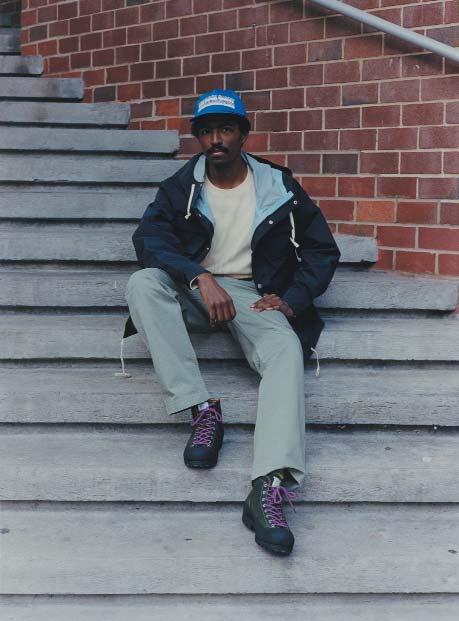
eVent® Fabrics, founded in 1999, revolutionized the industry with the first air-permeable 100% waterproof membrane and continues to innovate high-performance textiles with sustainability in mind. The company is globally recognized for its breathable waterproof solutions and commitment to reliable, high-performance laminates that help users defy the elements™. Trusted by leading brands, eVent® Fabrics sets the standard for performance and striving for sustainability in outerwear, footwear, and accessories.
About Big Rock Candy Mountaineering
Big Rock Candy Mountaineering designs outdoor clothing based on early American alpinists, mountaineers, and gear innovators who defined the outdoor style of the 1950s, 60s, and 70s.
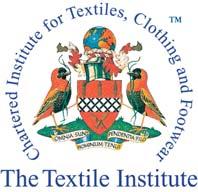
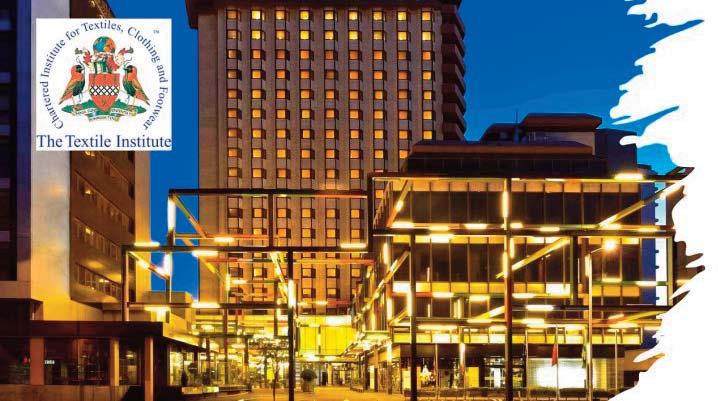
Join global textile professionals in the stunning city of Porto, Portugal, for the 93rd Textile Institute World Conference, held from 7–10 October 2025 at the Porto Palácio Congress Hotel and Spa –a five-star venue in the vibrant Boavista district. Hosted by AQUITEX, this worldclass event promises insight, innovation, and international collaboration.
With the theme “Fibre to Future –Transforming Fashion and Textiles through Sustainability and Digitalisation”, this year’s conference offers a rich programme of keynote lectures, technical sessions, exhibitions, networking events, and an exclusive technical visit to CITEVE – Portugal’s national centre for textile innovation and technology. Delegates will gain insight into pioneering sustainable practices and emerging technologies shaping the industry.
Porto is not just the host city – it’s part of the experience. With its mix of old-world charm and modern flair, Porto
offers a culturally rich and visually captivating setting for TIWC 2025: UNESCO-listed historic centre with winding alleyways, baroque churches, and tiled façades
Douro River cruises with scenic views of hillside vineyards and iconic bridges
World-famous Port wine cellars and tastings along the riverside in Vila Nova de Gaia
A bustling design and textile scene, from traditional craftsmanship to modern fashion studios
A vibrant culinary scene boasting Michelin-starred restaurants, traditional Portuguese taverns, and contemporary eateries showcasing the best of local and international flavours
Excellent connectivity, safety, and a welcoming atmosphere
Conference Venue: Porto Palácio
Congress Hotel and Spa
This five-star hotel is centrally located and offers luxury accommodation, a fullservice spa, rooftop bar, gourmet dining, and direct access to the conference centre. It’s an ideal base to connect, learn, and unwind.
Be part of the global conversation on the future of textiles – in one of Europe’s most beautiful and inspiring cities.
The Textile Institute is the professional body for people and organisations working in the textile, clothing and footwear associated industries worldwide. For more than 110 years, the Institute has been bringing together professionals from all over the world for the exchange of ideas, and a social community promoting friendship among members. It is an international organisation governed by a Council representing members globally.
The Textile Institute is run democratically by and for its members all over the world by the Trustees of the Institute, and representatives from Sections, Special Interest Groups and internal committees.
As a registered Charity with a Royal Charter the role of the Institute is to advance the general interests of the textile industry worldwide, more particularly in relation to the acquisition and application of knowledge for the benefit of mankind.

YKK Corporation (Headquarters: Chiyoda-ku, Tokyo; President: Koichi Matsushima; hereafter, YKK) will begin using only low-carbon aluminum (*1) as the source for all aluminum alloy wire procured for zippers, as part of its initiative to convert all aluminum alloy zipper items to sustainable products.
YKK, together with aluminum material manufacturers Sumitomo Electric Industries, Ltd. (Headquarters: Chuo-ku, Osaka; President: Osamu Inoue), and Sumitomo Electric Toyama Co., Ltd. (Headquarters: Imizu City, Toyama; President Representative Director: Yasuo Yamamoto) agreed to a contract pertaining to the use of low-carbon aluminum. Beginning in FY2024, YKK began purchasing low-carbon aluminum alloy wires for use as materials in aluminum alloy zippers and gradually expanded their application.
YKK has adopted the YKK Sustainability Vision 2050, which sets the sustainability goals for realizing climate neutrality by 2050. The company has
established targets in connection to five themes— climate change, material resources, water resources, chemical management, and respect people—and is working on initiatives to achieve 10 SDGs related to each of these themes. In the key area of climate change, YKK is promoting initiatives to slash its greenhouse gas (GHG) emissions within the company and throughout its supply chain—by 90% for Scope 1 and 2 emissions and by 90% for Scope 3 emissions, compared to FY2018 levels—by 2050, based on the net-zero target outlined by the Science Based Targets (SBT) initiative (*2). Adopting low-carbon aluminum as material for zippers is one of YKK’s initiatives to achieve the reduction target for Scope 3 emissions.

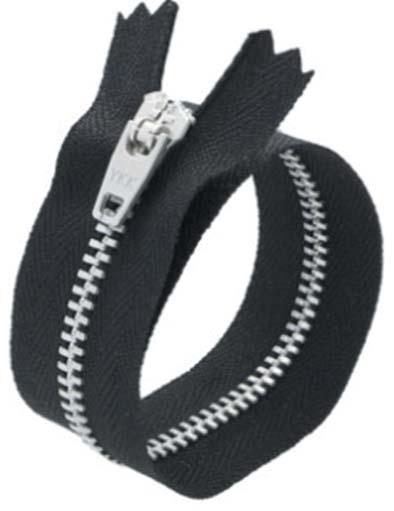
YKK will continue to work with its customers and suppliers to accelerate efforts to reduce GHG emissions by developing and expanding sales of sustainable products and technologies, thereby contributing to the realization of a sustainable society.
Comment from Terry Tsukumo, Vice President, Product Strategy Division, Global Sales Headquarters, YKK Corporation
“YKK has been promoting efforts to use recycled materials and plant-based materials in textile materials for zippers and to increase the ratio of such materials. In addition to these efforts, we will promote the use of low-carbon aluminum made from renewable energy sources,
such as hydropower. Through these efforts, we aim to reduce greenhouse gas emissions and contribute to climate change mitigation by revamping our product lineup, while taking advantage of aluminum's features—its light weight and silver color that is nickel-free and platingfree—and focus on developing products which can be widely used in apparel and luggage applications.”
*1: The aluminum smelting process requires a large quantity of electricity and emits different amounts of carbon dioxide depending on the power source used. The emissions of the low-carbon aluminum to be used for this initiative will be less than 4 metric tons of CO2 per ton of aluminum ingots produced, as it uses renewable energy as the power source. This significantly reduces CO2 emissions compared to using electricity generated from fossil fuels such as thermal power.
*2: The remaining 10% of emissions in the net-zero target must be reduced to zero through carbon absorption and removal, etc.
Dye and processing innovations to be showcased at two of the world’s most influential denim fairs: Denim Première Vision Milan and Denimsandjeans Vietnam
Archroma, a global leader in specialty chemicals, is set to showcase key innovations in denim color and processing to the global denim community at Denim Première Vision Milan on May 21 and 22 and Denimsandjeans Vietnam on June 25 and 26.
Denim has remained a staple in both mainstream and high-end fashion, but traditional manufacturing methods are under increasing scrutiny for their intensive use of water, energy and chemicals.
“With a broad portfolio of textile dyes and chemicals backed by decades of advanced research, Archroma is rewriting the rules for those who love denim. From timeless indigo to trend-driven finishes, we are evolving denim with processing solutions that preserve the fabric’s iconic appeal while minimizing its impact,” Dhirendra Gautam, VP Global Marketing and Strategy, Archroma, said.
Archroma will demonstrate an array of denim innovations at Denim Première Vision Milan and Denimsandjeans Vietnam, headed by DENIM HALO – a unique pretreatment and dyeing process developed to empower mills to produce highly sought-after distressed denim looks with a significantly reduced environmental footprint.
DENIM HALO combines DIRSOL® RD p, a new product for a special/specific yarn pretreatment, with Archroma’s indigo, sulfur or biosynthetic dyes to produce laser-friendly denim with outstanding contrast on intense black and indigo shades – without modifying standard dye recipes or set up. Additionally, the solution reduces yarn shrinkage and improves garment tensile strength, while also saving water and energy, avoiding the use of potassium permanganate, and reducing the need for caustic soda in sulfur dyeing.
Archroma will also be showcasing a brand-new capsule collection at the shows. The collection will present Black
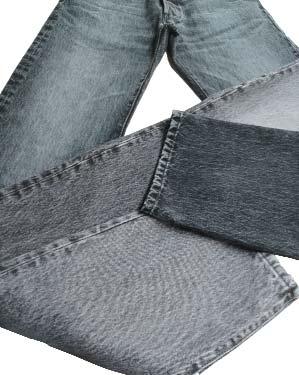

that utilizes Archroma’s DENIM HALO and DIRESUL® EVOLUTION
BLACK and made with premium fabric from Kipas Denim and finished using Jeanologia’s innovative washing technology. The result is a refined, modern take on black denim—combining elevated design with responsible production practices. With DENIM HALO, trade show visitors will explore breakthrough dyestuffs such as DIRESUL® EVOLUTION BLACK, DENISOL® PURE INDIGO 30 and EarthColors®
DIRESUL® EVOLUTION BLACK is Archroma’s cleanest sulfur black dyestuff. Manufactured using fewer resources, it has an overall impact reduction of 57% during dye synthesis compared to standard Sulfur Black 1 liquid.*
DENISOL® PURE INDIGO 30 LIQ is an aniline-free** pre-reduced indigo that creates authentic denim colors with the same performance and efficiency as conventional indigo dye, but in a way that can reduce the risk of pollution. Furthermore, it is produced in an aniline-free** process to help enable cleaner denim production. EarthColors® is a patented Archroma technology that creates high-performance biowaste-based dyes from


non-edible food and agricultural waste, leaving the edible part available for consumption. EarthColors® dyes help reduce the industry’s overall impact on the water footprint. Since they upcycle waste from other industries, they also help contribute to a circular economy.
Meet Archroma denim experts at Denim Première Vision Milan 2025
Held twice a year, Denim Première Vision is a celebration of denim trends, markets and culture. The May 2025 event will present the latest innovations and Autumn-Winter 2026-2027 collections from leading manufacturers and suppliers.
Meet Archroma denim experts at Denimsandjeans Vietnam 2025
Now in its seventh year, Denimsandjeans Vietnam attracts large denim producers from Vietnam and other leading textile manufacturing hubs. The show is organized by Denimsandjeans.com, a website dedicated to the global denim industry since 2007.
* Ecotarrae lifecycle analysis
** Below limits of detection according to industry standard test methods
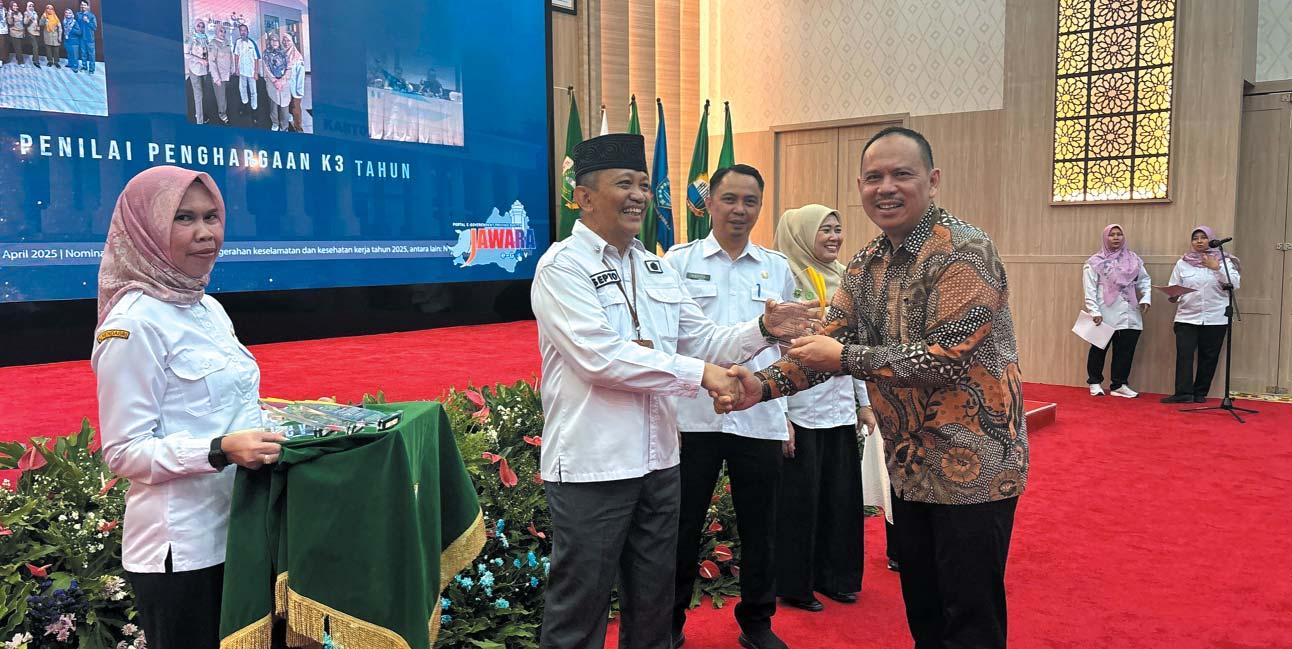
DyStar, a leading specialty chemical company with a heritage of more than a century in product development and innovation, has been honored with three prestigious awards at the 2025 Provincial Occupational Safety and Health (P2K3) Awards, recognizing its exceptional performance in workplace safety and employee well-being.
The awards were presented by the Banten Provincial Government to PT. DyStar Colours Indonesia – Gabus Plant, the company’s largest manufacturing plant in Indonesia. DyStar received the following accolades:
Platinum Award for Zero Accidents (2018–2024)
Gold Award from the Committee of Occupational Safety & Health Development (P2K3)
Silver Award for HIV & AIDS Prevention Program
Mr. Clement Yang, Vice President of DyStar Global Manufacturing, said, “DyStar is honored to be recognized for our collective commitment to health and safety. This achievement is a testament to
the unwavering dedication of our employees in upholding the highest safety standards as we pursue manufacturing excellence in a safe and responsible environment. Safety is a core value embedded in our global culture— one we consistently uphold across all our operations.”
Mr. Sunarto Djuardi, Regional Vice President for DyStar Southeast Asia, said, “Health and safety have been our highest priority since we commenced production at Gabus in 1997. These awards underscore DyStar’s ongoing commitment to fostering a proactive safety culture, adopting innovative risk management strategies, and maintaining consistent compliance with the highest occupational health and safety standards.”
The Platinum Award was granted in recognition of DyStar’s outstanding achievement of 3.1 million work hours assessed between 2018 and 2024 without a single accident. This remarkable record reflects the company’s disciplined safety culture and its dedication to protecting both employees and contractors.
The Gold Award, presented by the Committee of Occupational Safety & Health Development (P2K3), acknowledges DyStar’s success in maintaining an effective internal safety and health committee at the Gabus Plant, in compliance with national OHS regulations.
DyStar also received the Silver Award for its extraordinary efforts in promoting HIV/AIDS prevention programs in the workplace, reinforcing its commitment to creating not only a safe and pleasant working environment but also one that is inclusive and free from health-related discrimination.
As a company at the forefront of sustainability initiatives, these awards further highlight DyStar’s ongoing investment in employee well-being and strengthen its leadership in the global chemical manufacturing sector.
For further information on DyStar’s global health and safety efforts, please refer to DyStar’s Annual Sustainability Reports.
On the evening of May 31st, 2025, the Beach Luxury Hotel in Karachi transformed into a vibrant arena of creative exploration as MiTE-TMUC hosted its flagship annual fashion and arts event, Vogue Night 2025 – Regalia Reclaimed. This immersive experience celebrated emerging talent at the intersection of fashion, identity, technology, and global consciousness.
MiTE’s transnational education partner, The Millennium Universal Colleges (TMUC), curated the evening in collaboration with leading international academic institutions including the University for the Creative Arts (UCA). The event marked a significant milestone in TMUC’s ongoing commitment to fostering industry-relevant, globally competitive creative education in Pakistan.
This year’s theme, Regalia Reclaimed, invited students to reinterpret symbols of identity, memory, and cultural legacy through creative storytelling. The show combined fashion, performance, film, and digital art to present a layered, multisensory narrative underscoring the evolving role of fashion as a medium of purpose and activism.
The show unfolded across six distinct segments, showcasing over 65 garments designed by graduating students from the 2024–2025 cohorts. Styling and makeup were executed by TRIO, part of the renowned Nabila’s team, ensuring a polished runway presentation. Event



management was led by OHStar, the same agency that successfully managed the 2023 edition.
A total of 21 models walked the runway, including six MiTE students from the Fashion and other departments, reflecting a strong culture of crossdisciplinary collaboration. The remaining 15 professional models were provided by TRIO, including three prominent faces from Pakistan’s fashion industry, adding star power and visibility to the event.
The event opened with a capsule showcase by current students of the Pearson Higher National Diploma (HND) in Art & Design. Their collections addressed pressing global themes,

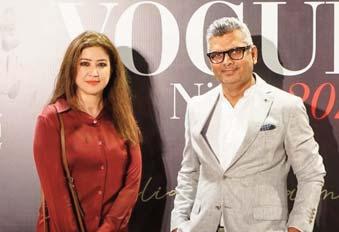
sustainable design, textile innovation, and cultural reinterpretation demonstrating a mature, research-led design process. Each presentation reflected a commitment to ethical practices and material consciousness, signalling a shift in how the next generation of designers perceive their role in the ecosystem.
The graduating cohort from the University for the Creative Arts (UCA) then took center stage with their final major collections. These works were introspective, emotionally resonant, and technically advanced. From garments inspired by childhood memories and trauma healing to those influenced by botanical ecosystems and celestial phenomena, each collection served as a visual narrative evoking empathy, curiosity, and critical reflection.
The event seamlessly transitioned into the realm of visual storytelling with the screening of “JADU,” a short film by UCA Film & Digital Art student Laiba
Shakeel. Deeply poetic and symbolically rich, the film bridged digital aesthetics with thematic undercurrents of mysticism, displacement, and feminine agency. It offered a contemplative pause, allowing the audience to engage with fashion as an extension of the self—both seen and unseen.
One of the evening’s most moving segments was a tribute performance by student artist Rafeh Sheikh, who seamlessly wove together fashion, performance, sound, and multimedia to honor the enduring resilience of the Palestinian people. The presentation featured garments exclusively designed and printed with motifs inspired by Palestinian architecture and cultural symbolism, transforming the runway into a powerful space of artistic resistance. Met with emotional applause, the performance underscored fashion’s profound capacity to serve as a medium for activism, empathy, and global solidarity.
Amjad – Performed by Kulsoom Aftab
Adding a literary dimension, Ms. Kulsoom Aftab delivered a powerful theatrical tribute to the late Amjad Islam Amjad. Her performance, layered with poetry and dramatic intensity, brought to life the emotional and intellectual legacy of one of Pakistan’s most revered literary icons. It was a moment of cultural introspection and reverence woven seamlessly into the evening’s theme of reclamation.
The final segment featured the University for the Creative Arts Class of 2025, presenting collections under the theme “Designing the Future: Consciousness, Change & Creativity.” Over 27 original looks were unveiled, showcasing avant-garde silhouettes, responsive textiles, and provocative social commentary. The designs ranged from experimental to couture, each contributing to a dialogue on where fashion is headed in a digitized, postpandemic, and environmentally fragile world.
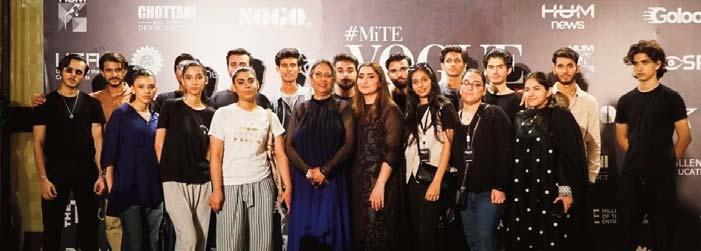

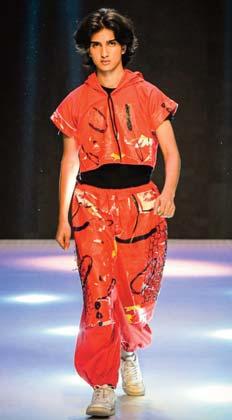
The event was graced by the presence of Madam Sultana Siddiqui, President of HUM TV Network, as Chief Guest. A pioneering figure in Pakistan’s media and entertainment landscape, she praised the students’ work, stating, “The collections we saw tonight speak volumes about the future of fashion in Pakistan, one rooted in culture, yet boldly global in vision.”
Other notable attendees included:
Nadra Panjwani, Chairperson, Karachi Council on Foreign Relations (KCFR) Panutat Yodkaew, Deputy Consul General, Thailand
Nasreen Jalil, Former Senator Madam Shahnaz Wazir Ali, President, SZABIST
Mr. Farooq Sattar, Senior Political Leader
Mr. Amir Chottani, CEO, Chottani Industries & Chairman PRGMEA
Mr. Nadeem Chishti, Head External Affairs & CSR, PARCO Designers and creative icons such as Yousuf Bashir Qureshi (YBQ), Adnan Pardesi, and Zohra Alam Tech and education leaders including Jehan Ara, Dr. Maqsood Ahmed (DIG, Security), Tehmina Khalid (Take II PR)
The event was also attended by senior members of Gul Ahmed and other fashion

brands, the TMUC team, and a host of celebrated individuals from across Pakistan’s creative and industrial ecosystem.
In her closing remarks, Dr. Huma Baqai, Rector of MiTE, highlighted the institution’s strategic vision to merge academic excellence with industry engagement. “Regalia Reclaimed is not just an event it’s a statement of purpose. We believe in empowering students to lead with creativity, consciousness, and courage.”
The event was exclusively covered by HUM News, with additional media presence from Suno TV and 365 News. MiTE and TMUC extended sincere gratitude to all partners and supporters whose presence helped amplify the platform’s mission.
Vogue Night 2025 was not just a fashion showcase, it was a celebration of vision, voice, and values. A space where creativity meets conscience, and where the next generation reclaims regalia not just in style but in substance.
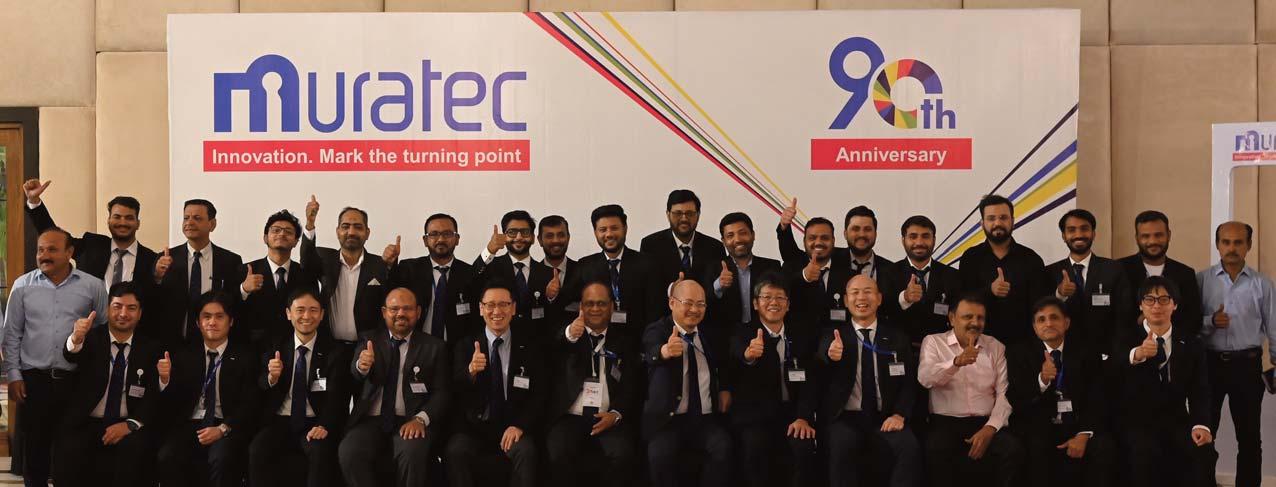
Picture a textile mill where machines work smarter, not harder—saving time, energy, and costs while producing topquality yarn. This vision came to life on April 25, 2025, at the Pearl Continental Hotel in Karachi, where Murata Machinery, Ltd. hosted over 300 industry professionals for a gamechanging seminar.
Setting the Stage
Mr. Syed Abdullah, CEO of Spintex, kicked off the event with heartfelt thanks after a Quran recitation. He celebrated the crowd’s enthusiasm and Murata’s steadfast support for Pakistan’s textile sector, shining a light on how innovation can overcome tough times.
The Stars of the Show
Murata unveiled technologies that promise to transform textile production:
AIcone: The Future of Winding
The AIcone auto winder isn’t just a machine—it’s a partner. With its simple
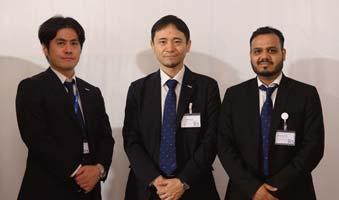

controls, easy upkeep, and eco-friendly design, it winds yarn at high speeds without breaking a sweat. Paired with Murata’s data system, it keeps mills running smoothly and profitably.
MVS 870EX: Yarn Made Simple
The MVS 870EX vortex spinner turns complexity into opportunity. It cuts production steps, delivering smooth, durable yarns that stand out in the market. Its flexibility and small footprint mean big savings for manufacturers.
MSS: The Power of Insight
The Murata Smart Support system acts like a mill’s brain, offering live data to spot problems, plan maintenance, and save energy. It’s the tool every manager needs to stay ahead.
Mr. Nomura, Murata’s Chief Operation Officer, wrapped up the day with gratitude and optimism. He saluted Pakistan’s textile leaders for their grit and

pledged Murata’s ongoing support through Spintex’s expertise.
The night ended with flair—gifts of MVS yarn shirts, a lively lucky draw, and a delicious dinner that brought everyone together.
Conclusion
More than just a seminar, this was a peek into the future of textiles. With presentations in Urdu and warm hospitality, Murata proved it’s not only about machines—it’s about building a stronger, smarter industry for Pakistan.

Strong new partnerships and optimized participation formats resonate with the industry
Preparations for DOMOTEX 2026 are in full swing, and the positive response to the new concept confirms the relevance of the world’s leading trade fair for carpets, flooring and interior finishing. The newly introduced participation formats, in particular, have been well received by the market. In addition, strong partners such as DECOR-UNION and MEGA have reaffirmed their cooperation with DOMOTEX.
Retailers Park: Successful concept to be expanded
The proven Retailers Park format, which already served as a central meeting point for retailers and craftsmen last year, will be further developed in 2026. With DECOR-UNION and MEGA once again on board, two strong partners will offer a unique platform for networking and industry exchange. A new, craftsmanoriented area called “The Work Shop” will showcase products, techniques, and innovations from Retailers Park exhibitors on a daily basis.
Strong partnerships as a key success factor
One of DOMOTEX’s key success factors is its extensive partner network. By working closely with national and international multipliers, the trade fair continues to expand its global visitor outreach. Several new partnerships have recently been formed, including with the European DIY Retail Association (EDRA), the German DIY, Building and Garden Trade Association (BHB), the Federal Association of Wholesale, Home & Colour (GHF), and the Manufacturers Association for Home & Garden. These collaborations offer exhibitors greater visibility and extend the reach for showcasing innovations and new solutions.
Flexible participation options for every budget
Especially in economically challenging times, many companies need to carefully plan their trade fair participation.


DOMOTEX therefore offers costoptimized participation options for almost all special formats. Whether it's the Wall & Colour Park, Architects Space, DIY Boulevard, or Retailers Park – these formats allow exhibitors to make a strong impression even with smaller, more focused presentations.
“We understand that investments in trade fair participation must be considered carefully. That’s why we’ve developed flexible participation models that make it possible for any company to be part of DOMOTEX – regardless of budget or stand concept. DOMOTEX provides a platform for all those who want to actively shape the future of the market,” says Sonia Wedell-Castellano, Global Director DOMOTEX. She adds: “This makes it all the more important that DOMOTEX delivers compelling, relevant content – topics that matter to the
industry and offer concrete answers to today’s challenges.”
One such topic is the integration of privacy and sun protection systems, which will be a core element of the DOMOTEX 2026 concept. In addition to design aspects, the increasing importance of energy-efficient solutions is coming to the forefront. Modern systems such as blinds, shutters, and smart shading solutions play a key role in optimizing indoor climates by reducing energy consumption for heating and cooling. Given the growing demand for sustainability and energy efficiency, this segment is becoming an essential part of holistic living and working space solutions – a development that DOMOTEX 2026 actively reflects.
With such forward-looking content and a clear thematic focus, DOMOTEX continues to strengthen its role as a trendsetter and source of inspiration for the industry. Thanks to its strategically aligned concept, strong partners, and wide international reach, DOMOTEX maintains its leading market position –and promises to deliver a unique trade fair experience once again in 2026.

Heimtextil, the leading international trade fair for home and contract textiles and textile design, is strategically expanding the Smart Bedding segment. A new exhibitor area will be created for the January 2026 edition: Sleep & Meet. This newly designed format will take up around a quarter of Hall 4.0. Numerous well-known brands from the mattress sector have already registered to take part. With a clear structure and a highquality environment, Sleep & Meet offers bedding retailers, hospitality and volume buyers direct access to relevant companies and industry participants, new product range perspectives and valuable business contacts.
Numerous strong German brands from the mattress sector will be exhibiting at Heimtextil 2026. Wellknown companies such as Auping Germany, Bettwaren Stendebach, Erich Werkmeister, ergomed, Femira,
Rummel and Schwarzwald Schlafsysteme are celebrating their premiere at Heimtextil 2026 and have already registered. The EuroComfort Group with Badenia, Brinkhaus, Lück and fan frankenstolz are setting a special example: both companies are significantly expanding their space at Heimtextil 2026.
‘Heimtextil brings the bedding retailers, hospitality and volume buyers together with relevant brands and high-quality products - and offers the ideal framework for establishing new business relationships, recognising trends at an early stage and gaining fresh inspiration for the product range’, says Olaf Schmidt, Vice President Textiles & Textile Technologies at Messe Frankfurt. ‘We are delighted to be able to provide visitors with a strong and customized offer.’
Trade association Matratzen-Industrie e.V. will be present again
The trade association MatratzenIndustrie is also sending out a strong signal: the association will once again have its own stand at Heimtextil 2026. ‘Heimtextil offers the ideal platform to showcase the innovative strength and diversity of German mattress manufacturers internationally’, explains Martin Auerbach, Managing Director of the trade association MatratzenIndustrie. ‘Our presence is a clear commitment to this platform.’
With the new Sleep & Meet area, the presence of leading German brands and the participation of the trade association MatratzenIndustrie, Heimtextil is strengthening its role as the central platform for the mattress and sleep industry.
Poised to become a global showcase for the garment and ready-to-wear industry, Garment Tech Istanbul Exhibition is set to bring together leading brands that shape the sector under one roof. With its diversity of exhibitors, high-profile visitor portfolio, and substantial business potential, the exhibition promises a unique experience. It will serve as a pulse-check for the industry's ongoing transformation.
Taking place from June 25–28 at the Istanbul Expo Center (IFM), the Garment Tech Istanbul Exhibition for Garment, Embroidery Machinery, Spare Parts, and Sub-Industry will unite the key players of an industry that holds a significant share in Turkiye's exports. Organized under the motto “Innovative Touch to Fashion”, the exhibition will showcase technologies spanning the entire garment production chain—from sewing to cutting, ironing systems to packaging, embroidery to denim.
With its advanced production infrastructure, strong design capabilities, and dynamic workforce, Turkiye’s garment industry will step confidently onto the global stage through the Garment Tech Istanbul Exhibition. Bringing together all stakeholders from across the sector, the exhibition will host existing companies and attract international investors, business partners, and industry professionals.
Garment Tech Istanbul is more than just a product exhibition—it is a platform where new business collaborations will be initiated. Over the course of four days, international investors, manufacturers, suppliers, and brand representatives will engage in face-to-face meetings to establish long-term business connections.
The exhibition offers exhibiting companies the chance to achieve both short-term sales targets and make significant progress in long-term business
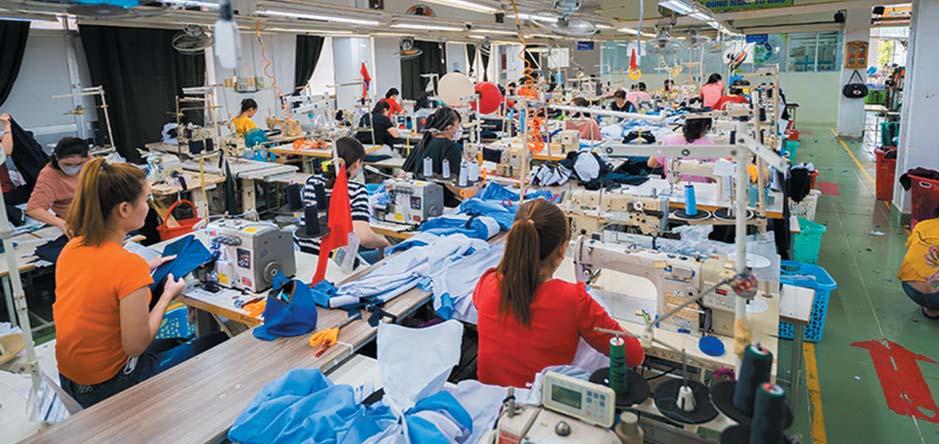
development strategies. Decision-makers in the business world will invest in innovations, establish new supply chain partnerships, redefine their production strategies, and explore fresh positioning opportunities in regional markets.
The Garment Tech Istanbul Exhibition will also serve as a stage for innovative machines, automation systems, and sustainable production solutions. Visitors will have the chance to explore the latest advancements in the industry and discover ways to improve operational efficiency. They’ll get hands-on with cutting-edge sewing and embroidery machines, digital automation systems, pressing technologies, cutting automation solutions, and eco-friendly sustainable machinery.
These technologies will enhance production efficiency, reduce energy consumption, and help companies meet sustainability standards more easily. Machines equipped with innovative applications such as artificial intelligence, Internet of Things (IoT), and data analytics will introduce industry professionals to not only today’s but also tomorrow’s manufacturing models. Investors, tech developers, suppliers, manufacturers, and buyers will gain fresh insights that will help steer the direction of the global textile industry.
The Garment Tech Istanbul Exhibition also stands out due to its strategic geographic location. As a bridge between Europe and Asia, Istanbul is highly accessible for global visitors. Its modern transportation infrastructure, worldwide air connections, and visa waiver agreements with many countries significantly ease international participation. Professionals from around the world are already applying online to receive their invitations and join the event to discover the latest technologies and form new business partnerships. Thousands of visitors from over 60 countries—including India, China, Pakistan, Tunisia, Iran, Sierra Leone, Ghana, Germany, Italy, the UK, and Hong Kong—have completed their online registrations. Expected to attract thousands of professional visitors, this event will once again position Istanbul as the epicenter of global garment and ready-to-wear trade.
This vibrant interaction will lead to a better understanding of regional market needs and lay the groundwork for more targeted collaborations. Moreover, participants will enjoy the rich cultural and historical heritage of Istanbul, turning their business trip into a memorable journey. From the stunning Bosphorus view and historic peninsula to world-class cuisine and much more, visitors will complement their professional experience with cultural enrichment.
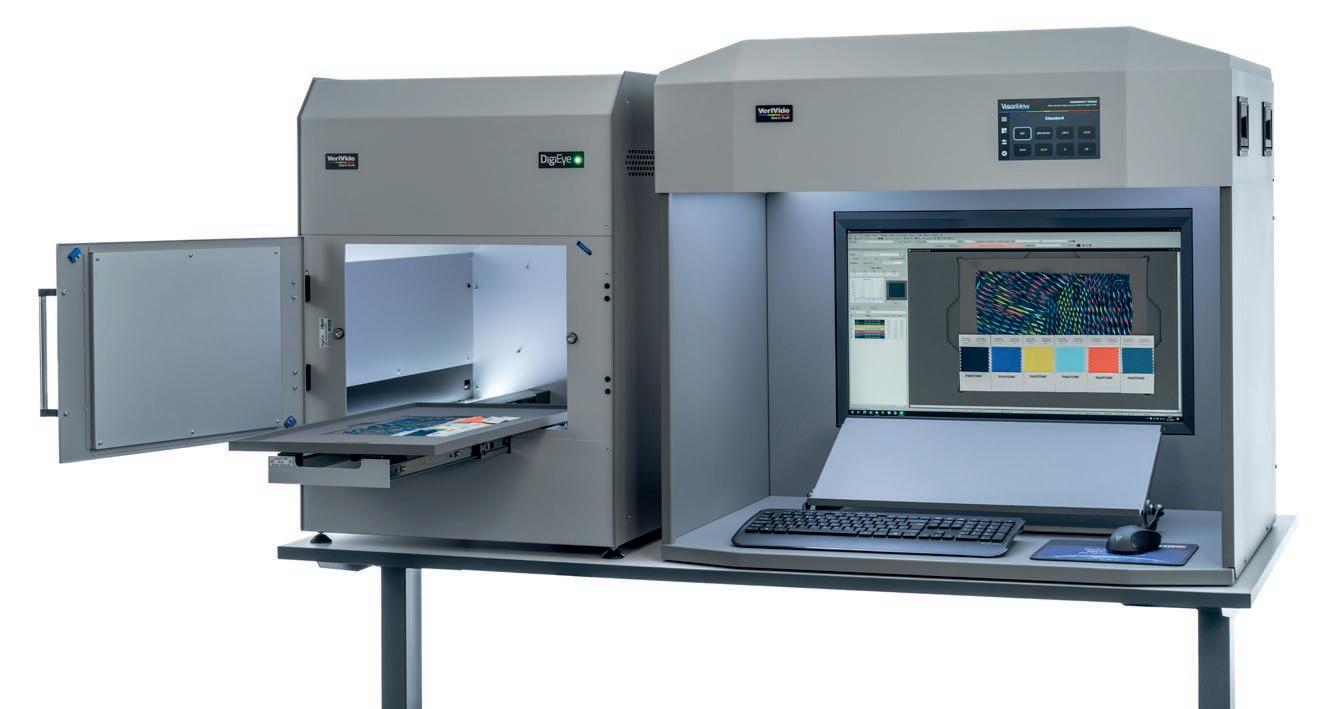
Portugal
City
Hotel
Join us at the 93rd Textile Institute World Conference (TIWC) 2025, hosted by AQUITEX with industry leaders. This marks the first time a company hosts the event, emphasising collaboration between industry and academia. The theme, “Fibre to Future – Transforming Fashion and Textiles through Sustainability and Digitalisation,” explores how sustainability and digital innovation are reshaping the industry.
This year’s conference will explore cutting-edge approaches to addressing sustainability challenges, from the environmental impact of textile production to the development of circular economies. It will showcase innovative digital technologies that enhance efficiency, transparency, and sustainability across the entire supply chain—from fibre production and manufacturing to consumer use and end-of-life solutions
Invitation letters for visa applications will be provided after registration and payment are completed. Request your invitation letter as soon as you register. For more information, contact Robyn Ingham, senior events coordinator at ringham@textileinst.org.uk
Start making your plans now for TIWC 2025 to ensure you don’t miss out...
Host organisation
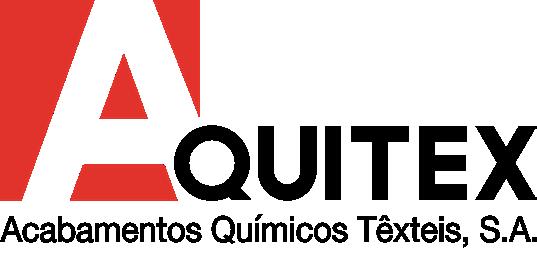

Sponsorship Packages
Please visit textileinstitute.org/events/tiwc for more information.
7-10
Early Bird Fees
Non TI Member: EUR €660 (approx. GBP£550.00)
TI Member: EUR €515 (approx. GBP£430.00) These rates are available until 15 June 2025.
Standard Fees
Non TI Member: EUR €800 (approx. GBP£670.00)
TI Member: EUR €660 (approx. GBP£550.00)
Other Fees
TI Representative: EUR €480 (approx. GBP£400.00)
Student: EUR €240 (approx. GBP£200.00)
Day Rate: EUR €300 (approx. GBP£250.00)
Accompanying Person: EUR €240 (approx. GBP£200.00)
*Accompanying person criteria: Lunch and social events only.
For group bookings of 3 delegates or more, please email bookings.tiwc25@aquitex.pt to secure a 10% discount
All bookings need to be made in a single transaction.

Rieter has signed a definitive agreement to acquire Barmag from OC Oerlikon for an upfront equity purchase price of CHF 713 million. The acquisition will create a globally leading player in natural and manmade fibers, headquartered in Winterthur, Switzerland, and is highly complementary to Rieter’s short-staple fiber business.
Barmag is a provider of filament spinning systems used for manufacturing manmade fibers, texturing machines, BCF1) systems, staple fiber spinning and nonwovens solutions and – as an engineering services provider – offers solutions along the textile value chain. In the financial year 2024, the company generated sales of CHF 734 million with around 2,600 employees.
Barmag comprises the established product brands Oerlikon Barmag, Oerlikon Neumag and Oerlikon Nonwoven. The main markets for the Barmag product portfolio are China, India, Türkiye and the United States of
America. The innovative and technologically advanced products are developed in Remscheid and Neumünster (Germany) as well as Suzhou and Wuxi (China).
As fiber consumption is projected to rise, most of the growth is expected to come from manmade fibers. The increase of natural fibers such as cotton and linen is limited due to natural boundaries. Manmade fibers will help to meet expanding demand for clothing, technical and home textiles. The strategic acquisition of Barmag will transform Rieter into a leading supplier for converting natural and manmade fibers into yarn.
The transaction is fully in-line with Rieter’s strategy and follows previous acquisitions, where Rieter complemented its portfolio in short-staple fiber machinery and expanded its footprint in components and machinery for manmade fiber production. The combined platform allows to leverage the recovery of global filament and short staple fiber spinning markets and to reduce cyclicality due to
diversification of end-markets. The acquisition will further enhance Rieter’s position in the important Asia-Pacific region and provide access to Barmag’s filament expertise, which will help to further scale Rieter’s own capabilities and improve digitization solutions and product sustainability.
Thomas Oetterli, CEO of Rieter: “We are very proud to welcome Oerlikon Barmag, Oerlikon Neumag and Oerlikon Nonwoven to Rieter. We are convinced that this combination will form a market leader in the textile industry which will create value for our shareholders, customers and employees.”
Georg Stausberg, CEO of Barmag: “With this solution, we will have the best new ownership possible, as we will benefit from each other as textile companies from market understanding, technology expertise and complementary offering for our global customer base.”
The enterprise value of CHF 850 million represents a through-the-cycle EV/EBITDA2) of 6.3x (excluding
synergies). If certain financial criteria are achieved by 2028, an earn-out component will be paid to the seller. The acquisition is expected to enhance Rieter’s financial performance given Barmag’s structurally higher through-thecycle profitability and margin resilience in market downturn.
The acquisition financing is secured by a bridge loan facility. Refinancing of the bridge facility will happen through a fully underwritten CHF 400 million rights issue with tradable subscription rights, a CHF 77 million non-pre-emptive private placement which is fully committed and subscribed by Rieter’s two largest shareholders and a bank financing.
Rieter’s largest shareholder, Peter Spuhler (c. 33% shareholding) is supportive of the transaction and committed to participating in the rightsissue pro-rata by exercising its subscription rights as well as investing additional capital through the non-preemptive capital raise. After the capital increase, PCS Holding AG is expected to retain a shareholding of c. 33%.
Additionally, Rieter’s second-largest shareholder, Martin Haefner (c. 10%),

also supports the transaction and has committed to participating pro-rata in the rights-issue by exercising its subscription rights and investing additional capital through the non-pre-emptive capital raise.
Rieter remains committed to strong balance sheet stability and expects to delever quickly from a pro forma combined leverage per end of 2024 of c. 3x post the CHF 477 million equity capital increase driven by cash generation of the combined entity. An extraordinary General Meeting (“EGM”) is expected to be convened in the third or fourth quarter of 2025 to obtain shareholder approval for the capital increase in connection with

the rights issue and the private placement. The definite terms of the rights issue are expected to be determined and communicated on or around the date of the EGM. The acquisition of Barmag is subject to customary closing conditions, including regulatory approvals. Rieter is confident it will obtain all regulatory clearances. The closing of the acquisition is targeted for Q4 2025.
Alantra is acting as exclusive financial advisor and Lenz & Staehelin as legal advisor to Rieter. UBS underwrites the bridge loan facility and acts as Sole Global Coordinator, Sole Bookrunner and Sole Manager of the capital increase.
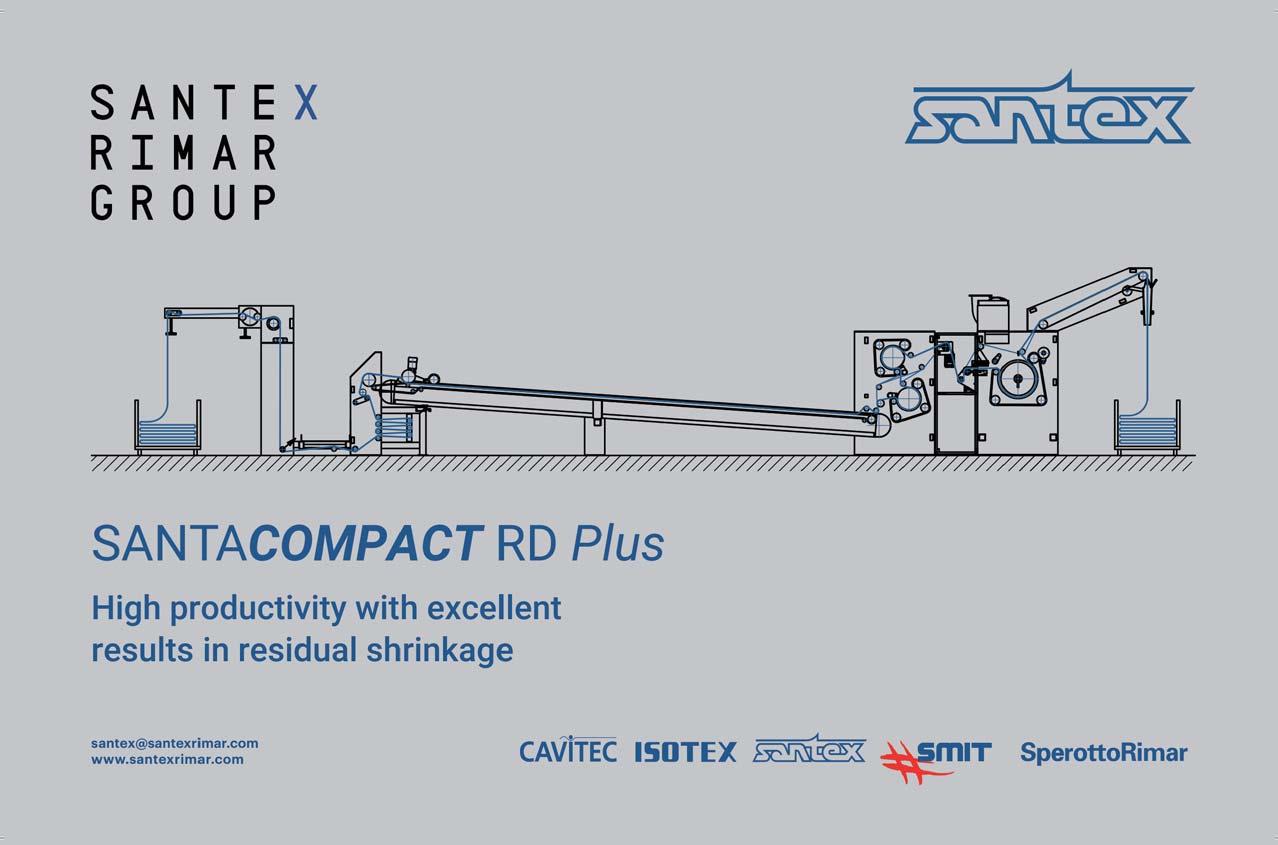
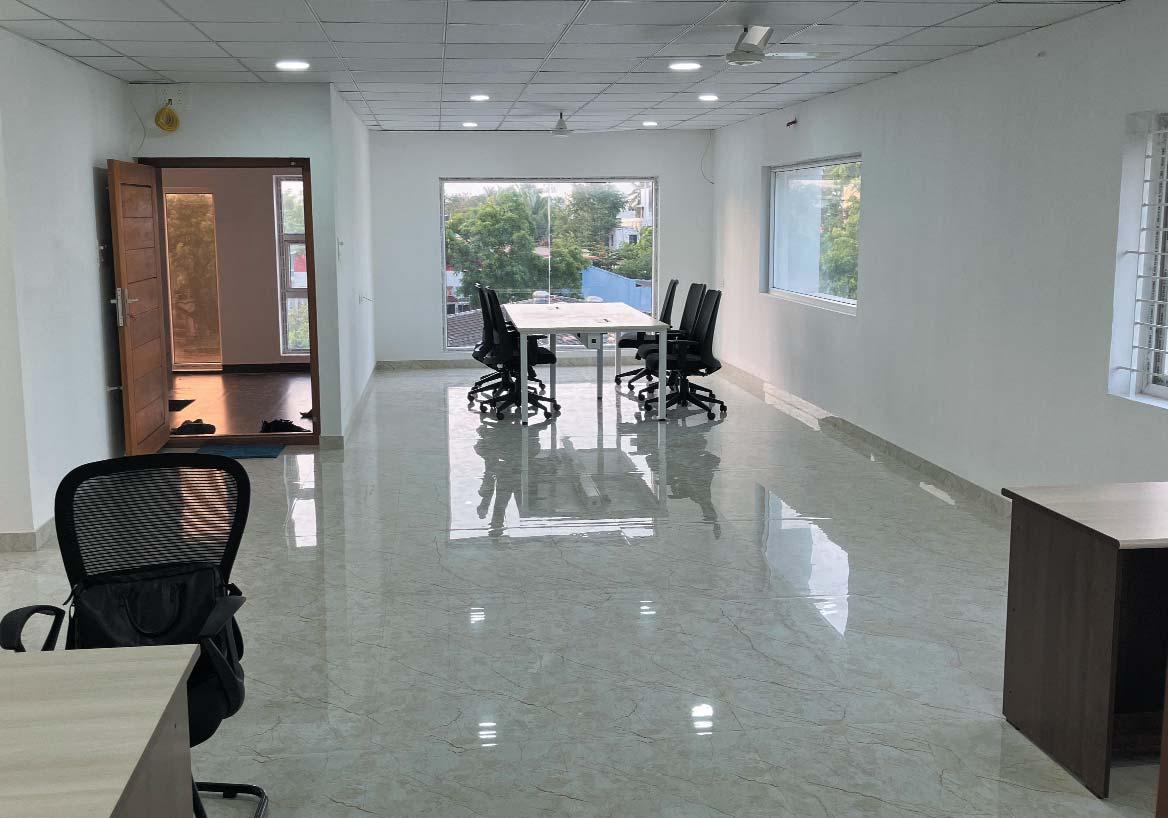
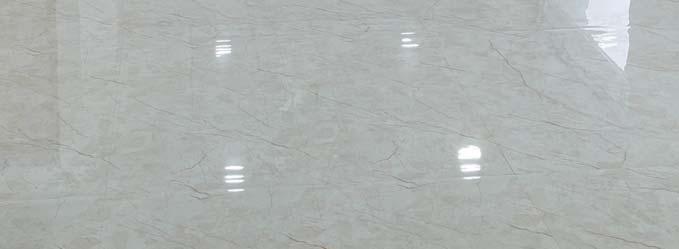
The worldwide leading textile machinery manufacturer BRÜCKNER is opening its own subsidiary in India on June 1st, 2025. With this strategic step, the German family-owned company further strengthens its global presence and expands into the Indian market, which is so important for the textile industry. Since 2007 BRÜCKNER has been represented in India by Universal MEP Projects & Engineering Services Ltd, formerly VOLTAS. With the outstanding expertise and support of Universal over the years, the BRÜCKNER brand has been firmly established and the Indian customer base was expanded considerably.
“We could not have imagined a better partner in the Indian market and are very grateful to Universal for their support and constant guidance over nearly 20 successful years,” says Regina Brückner, owner and CEO of the Brückner Group. “India is a key market for the textile industry and offers many opportunities for us, firstly due to the growing local demand for textiles and secondly due to the enormous potential for innovation. The new branch enables us to be even closer to our customers,”
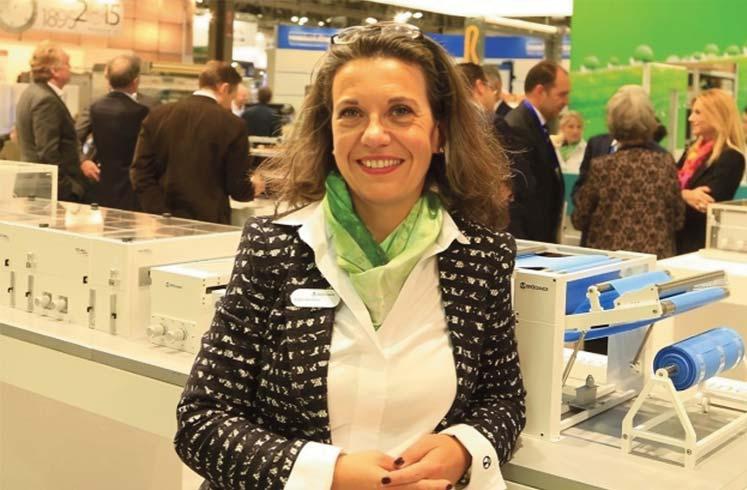
Regina Brückner, Owner and CEO of the Brückner Group
continues Regina Brückner. After the many sales successes in India in recent years, the move to set up its own branch was only a matter of time and a logical consequence. Brückner Textile India Private Limited is looking forward to the coming years with its customers in India.
Brückner is a worldwide acting and leading family-run machine engineering
company with a lot of experience and a long tradition. Since the foundation of the company in 1949 the company develops, builds, sells and installs machines and complete lines for the finishing of textiles, technical textiles, nonwovens and, floor coverings. All our machines are reliable and efficient highquality products made in Germany.
Trützschler India proudly celebrated the grand opening of its state-of-the-art manufacturing plant in Sanand, near Ahmedabad, Gujarat. This strategic relocation from the previous Ahmedabad site to the new facility is set to enhance operational efficiency, sustainability, and innovation.
The Trützschler and Schürenkrämer families and the Trützschler Group management team, alongside Trützschler India CEO Joseph Thomson, warmly welcomed a distinguished group of guests, including Shri Bhupendra Bhai Patel, Chief Minister of Gujarat, Achim Fabig, Consulate General of Germany in India and Shri Parshottam Ji Rupala, Member of Parliament. In addition, many of Trützschler’s valued customers, longtime partners and dedicated colleagues joined the celebration for a day of inspiring speeches, networking and a lively cultural program.
The new Sanand facility spans 164,000 square meters, with a built-up area of 72,000 square meters, and employs over 1,000 people. This pioneering plant is designed to serve both Indian and global markets, driving continued growth and innovation in the production of spinning preparation machines, card clothing, and nonwoven equipment. Built with a focus on sustainability, the facility adheres to high environmental standards, including ISO 9001:2008, ISO 14001:2015, and ISO 50001:2018 certifications. It also aims to achieve a gold rating from the Indian

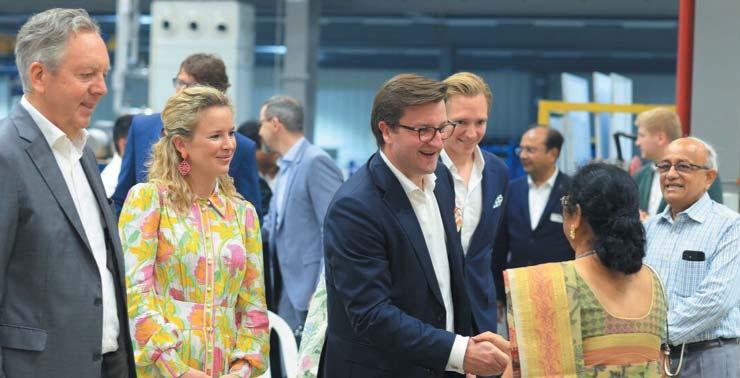
Green Building Council. Key features of the plant include solar energy systems, rainwater collection, electric vehicle charging points, and AI-powered process optimization.
Additionally, the new facility houses a modern Customer Training Center and an expanded Trützschler Training Academy, supporting knowledge sharing and skill development in alignment with the Skill India Mission.

Joseph Thomson, CEO of Trützschler India, remarked, “The new Sanand plant strengthens our ability to meet the rising demand from India and global markets with technologies, processes, and sustainable standards that truly set us apart. We extend our heartfelt gratitude to everyone who contributed to realizing this vision and to all those who joined us in celebrating this milestone.”
Cover picture shows from left to right: Edda Schürenkrämer, Shareholder, Alexander Stampfer, CSO, Caroline Lange, Shareholder, Florian Rück, CFO, Charlotte Fontaine, Shareholder and member of the Supervisory Board, Florian Schürenkrämer, Shareholder and member of the Supervisory Board, Dr. Michael Schürenkrämer, Shareholder, Shri Bhupendra Bhai Patel, Chief Minister of Gujarat, Heinrich Trützschler, Shareholder, Shri Parshottam Ji Rupala, Member of Parliament, Shri. Kanubhai Patel, Member of Gujrat Legislative Assembly, Heinrich Krull, COO, and Joseph Thomson, CEO Trützschler India.
Uster Technologies introduces its new fiber process control system
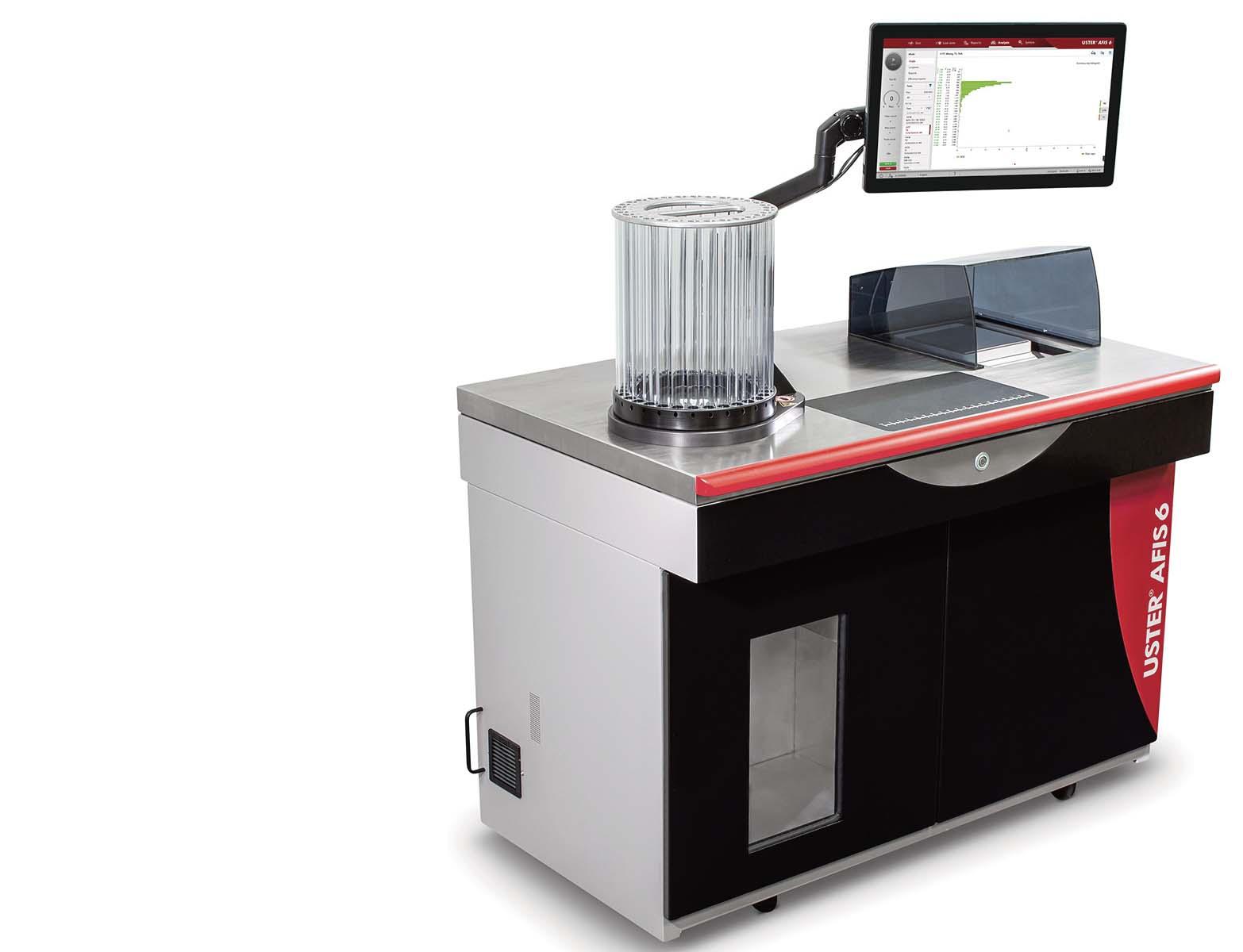
Fiber quality measurement in spinning preparation is crucial for optimizing waste and meeting yarn quality specifications. The brand-new Uster AFIS 6 –the next-generation laboratory instrument from Uster Technologies –uniquely tests man-made fiber properties in addition to cotton. It provides critical data to optimize fiber process control for cotton, man-made fibers, and blended yarns.
Spinners always strive to preserve the quality of valuable incoming fiber throughout the manufacturing process. Uster AFIS 6 achieves this by testing the material at each stage of preparation, from bale to roving and, in its latest version, AFIS can now measure 100% synthetic fibers and fiber blends commonly used in short-staple spinning, in the same unit as cotton.
fiber quality monitoring
Several different fiber characteristics affect quality and performance through pre-spinning operations – opening, cleaning, carding, combing, roving – so testing needs to take account of the impact of each. AFIS (short for Advanced
Fiber Information System) achieves this by measuring the various parameters for the length, fineness, maturity, neps, seed coat neps, trash, and dust in a particular test specimen of fiber.
This intensive monitoring is the only way to detect fiber quality issues before they get into the yarn and lead to a quality claim from the customer. Only industry-leading Uster AFIS 6 can deliver these advantages to give mills better overall control of costs, reduced raw material waste and less off-quality yarn.
AFIS 6 also makes things easier for the spinner, applying the same intuitive new user interface as the famous Uster Tester 6 and other Uster yarn testing instruments, featuring 11 languages. The improved reporting package simplifies data analysis.
Neps in yarn can be seriously disturbing if they show up in finished fabrics and garments. Uster AFIS 6 makes the important distinction between fiber neps and seed coat neps – important because seed coat neps are more difficult to remove. In addition to the number of
neps, the size of the neps is measured. With the critical neps size report, spinners get an estimate of how many neps are in the yarn.
For the spinning process, it is essential to know about fiber length and short fiber content. AFIS 6 measures the single fiber length, per number and per weight. Next to the length, the maturity and immature fiber count are measured. With its advanced opto-electronic sensors to measure single fiber quality, AFIS 6 proves it can optimize short staple spinning.
An optional sensor also measures dust and trash particles, which can cause serious problems in subsequent fabric manufacturing processes. Knowing the number of trash and dust particles helps the spinner and results in less downtime in weaving, while knitting needles last longer, and cleaning efficiency in the open-end spin box is enhanced.
Managing synthetics the same way
Synthetic fibers are growing in importance, so it’s essential to measure them. The cut length and fiber fineness are particularly relevant, as both are

crucial for the spinning process. Uster AFIS 6 can measure the synthetic fibers most commonly used in short staple spinning. As well as length and fineness, fiber neps are determined. New test parameters are also introduced, such as cut length and denier. They are critical for incoming raw material inspection and selection.
Short-staple yarns today include more and more cotton/synthetic blends and 100% synthetics. Cotton can be blended with fibers such as polyester, micro-
polyester, viscose, modal, micro-modal, lyocell, micro-lyocell, and acrylic.
Carding and combing are the two fiber processes in the spinning mill which most influence yarn quality. The carding process is the heart of every spinning mill. Poor performance here cannot be recovered in subsequent processes. The combing process reduces the short fiber content and is the last removal stage for neps, trash and dust. Only with Uster
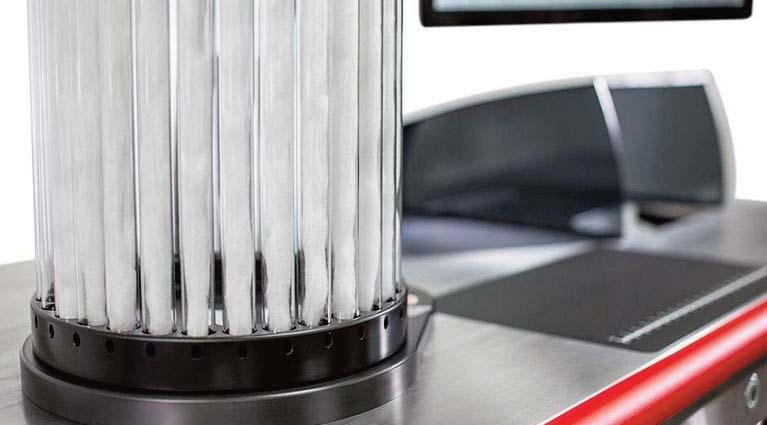
AFIS 6 measurements can spinners optimize these processes and save money.
Uster AFIS 6 can be connected to Quality Expert, hosted in Uster Tester 6. Full control from fiber to yarn in a single inline system illustrates the entire mill operation, with key quality parameters in the right format at the right time. Mill analyses with meaningful quality comparisons, integrated application knowledge and focused management reports are leveraged for even more profound and informed decision-making.
Last but not least, Uster Statistics is already integrated within AFIS 6, making global benchmark comparisons quick and easy. The new AFIS provides two Uster Statistics interactions: one for the whole process and one for each process step. Comparisons to Uster Statistics throughout the process show any unexpected spinning faults.
Spinners have it in their own hands! The latest Uster fiber process control system puts them in control of spinning preparation – and the end-product’s success.



iTextiles® is proud to introduce ARAWIN®, a high-performance metaaramid fiber developed by Toray Advanced Materials Korea (TAK), to the Pakistani market — now available exclusively through iTextiles®
Engineered for applications where flame resistance, thermal stability, and mechanical durability are non-negotiable, ARAWIN® sets a new standard for protective and industrial textile solutions. Unlike conventional aramids, ARAWIN® is produced using a dry spinning process, resulting in fibers with a dog-bone crosssection, smooth surface, and void-free internal structure. These attributes
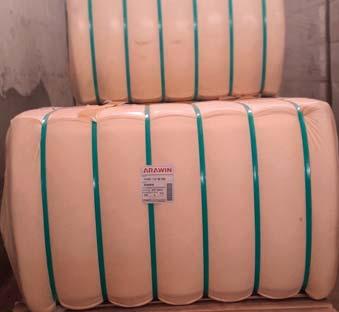
improve spinnability, physical strength, whiteness, and dyeability - making it ideal for converting into performance textiles.
At its core, ARAWIN® is a poly (metaphenylene isophtalamide) fiber - a meta-type aramid with a flexible molecular chain structure. Its inherent flame retardancy (without the need for chemical treatments) and a thermal decomposition point exceeding 400°C make it particularly well-suited for:
Firefighting suits and flame-resistant workwear
Military and law enforcement uniforms
Racing gear and industrial protective apparel
Automotive hoses and composite reinforcements
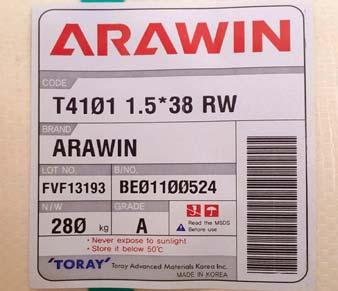
Available in both staple fiber and filament yarn, ARAWIN® adapts to a variety of textile manufacturing processes while maintaining its integrity under high-stress, high-heat environments. Its easy dyeability and consistent quality make it a preferred solution for manufacturers looking to meet both technical standards and aesthetic requirements in performance wear.
While its insulating paper variant also finds use in electrical components like motors and transformers, the core strength of ARAWIN® lies in its ability to enhance textile-based safety applications.
The first official shipment of ARAWIN® has now been successfully executed in Pakistan by iTextiles®, enabling local manufacturers to gain direct access to one of the world’s most advanced heat- and flame-resistant materials.
With the exclusive distribution of ARAWIN® in Pakistan, iTextiles® reinforces its commitment to delivering innovative and globally trusted materials to local industries — supporting a safer, higher-performing future for Pakistan’s textile sector.
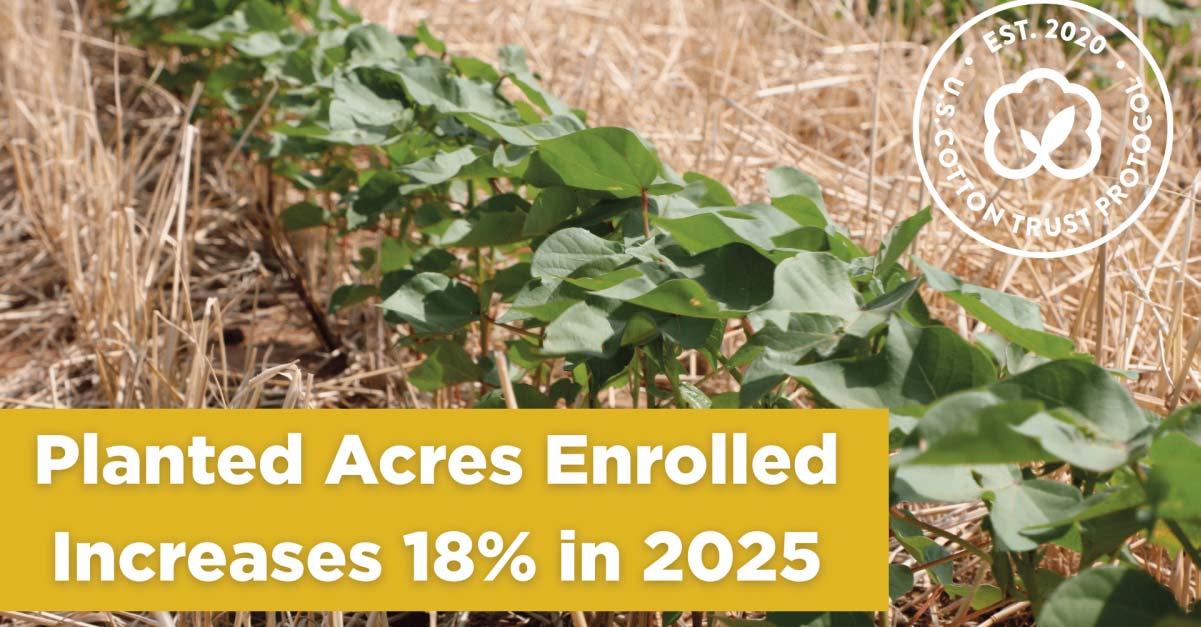
Acreage Expansion: Planted acres enrolled for the 2025 crop year reach 2.58 million acres, an 18% increase from the previous year
Sustained Growth: Grower enrollment now represents 1,512 U.S. cotton growers, a 14% increase from 2024
The U.S. Cotton Trust Protocol has announced its sixth consecutive year of growth, marking an expansion in both planted acres and enrolled growers. The program now represents 2.58 million planted acres, an 18% increase from the previous year, planted by 1,512 participating growers – a 14% rise compared to 2024. This growth underscores the program’s increasing value to U.S. cotton farmers, particularly in today’s challenging environment with fluctuating input costs, changing weather, and evolving market conditions.
By participating in the Trust Protocol, growers receive actionable data-driven insights that help them understand their
environmental footprint, optimize farming practices, and improve overall efficiency. This allows them to demonstrate their commitment to responsible practices through measurement and verification.
“We are proud of the continued increase in grower participation in the Trust Protocol, the voluntary sustainability program for U.S. Cotton, which means greater sourcing opportunities for brands and retailers around the world, including increased access to U.S. Cotton and Protocol Cotton,” said Daren Abney, Executive Director of the Trust Protocol. “This consistent increase highlights the value growers find in our program as they look for opportunities to enhance resilience in the face of current economic and environmental pressures.”
The Trust Protocol provides a transparent and verifiable system for tracking U.S. Cotton and Protocol Cotton to finished product, giving brands and
retailers the assurance they need to help meet their sourcing goals and reporting requirements. The Trust Protocol currently has over 2,500 mill and manufacturer members around the world, and more than 45 global brands, including Ralph Lauren, Gap, Levi’s, Carhartt, J.Crew, and Urban Outfitters.
The U.S. Cotton Trust Protocol is the voluntary sustainability program for U.S. cotton growers and traceability platform for all U.S. Cotton. It brings quantifiable and verifiable goals and measurement to responsible cotton production and drives continuous improvement in six key sustainability areas; land use, soil health, water management, greenhouse gas emissions, energy use, and fiber quality. The Trust Protocol underpins and verifies U.S. cotton’s sustainability progress through sophisticated data collection and independent third-party verification.
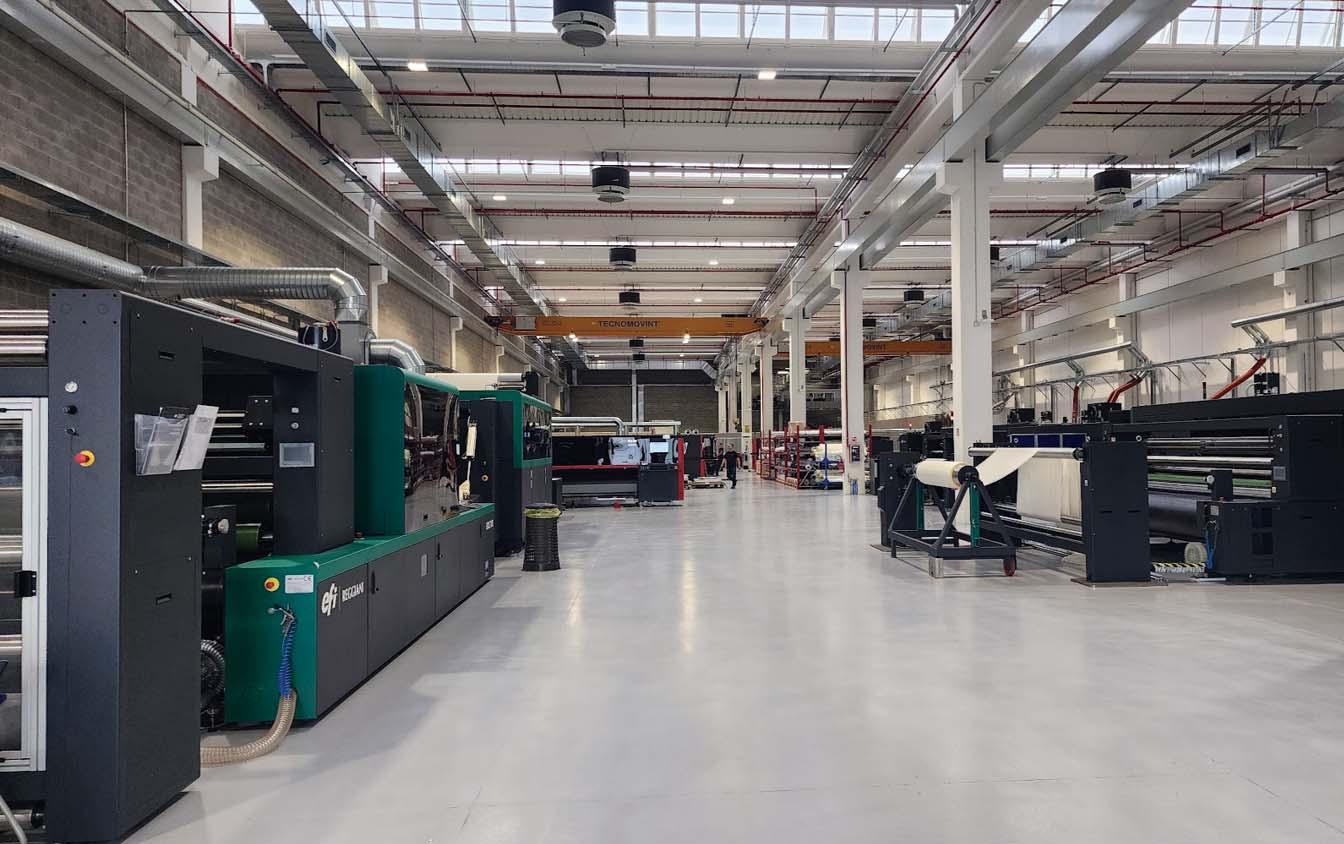

By Nadeem Mazhar, Pakistan Textile Journal
EFI Reggiani’s state-of-the-art Innovation Centre in Comun Nuovo, Bergamo, officially opened in 2023 as a flagship for sustainable and scalable textile and industrial printing solutions. A recent visit in 2025 provided an up-close look at how this facility continues to redefine the future of digital printing, combining cutting-edge technology, environmental responsibility, and customer-centric innovation under one roof.
Spanning a total of 20,000 square metres, the eco-campus was built to serve not only as a demonstration space but also as a collaborative platform where clients can explore complete, real-world workflows. At the heart of the facility is a
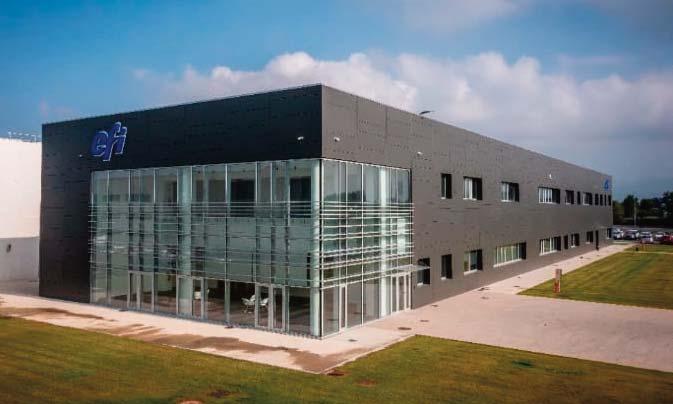
dedicated 3,000 m² demo centre, showcasing EFI Reggiani’s full suite of solutions across textiles, large-format, and packaging segments.
A Landmark for Textile Innovation
The demo centre is purpose-built for live production testing and real-time
client interaction, offering nearly twice the space of EFI’s previous Italian facilities. On display are flagship textile printers such as the EFI Reggiani ecoTERRA, HYPER, POWER, EXTRA, and NEXT Plus, each optimized for specific sectors ranging from high fashion to home textiles.
Also featured is the high-speed EFI Reggiani BOLT XS, a single-pass printer capable of up to 100 metres per minute, designed for short lead times and largevolume production — particularly relevant for industrial printing mills and on-demand textile workflows.
Sustainability is not treated as a marketing tagline at EFI Reggiani — it is embedded into every aspect of the Bergamo campus. The facility is equipped with 400 kW of solar panels, covering approximately 60% of its energy needs. Other green features include advanced thermal insulation, natural daylight optimization, and energy-efficient LED lighting.
Supporting the human side of operations, the campus includes green outdoor areas, a modern canteen, wellness and gym spaces, and EV charging stations, reinforcing a holistic approach to environmental and employee well-being.
While EFI Reggiani is internationally known for textile solutions, the Bergamo demo centre also demonstrates EFI’s strength in industrial inkjet and wideformat printing. Equipment for signage and display graphics was featured during the visit, reinforcing the versatility and
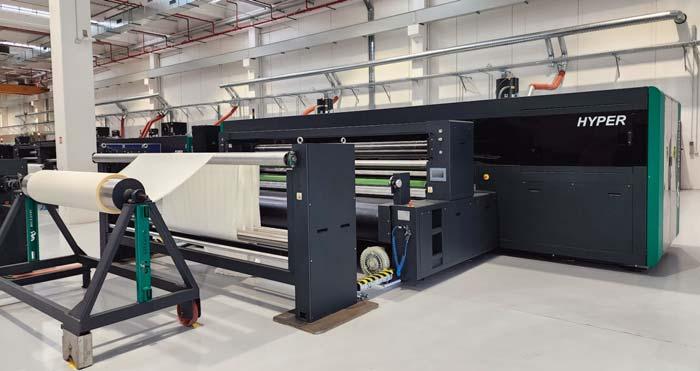
cross-sector relevance of EFI’s technologies.
This includes advanced UV and LED roll-to-roll and hybrid printers, ideal for outdoor advertising, backlit displays, and retail branding. For textile manufacturers in Pakistan considering diversification into packaging or digital signage, these solutions present new revenue opportunities with proven EFI quality and durability.
Since opening, the centre has hosted numerous global clients, partners, and media events — including the ecoTERRA Live Show, which brought together over 50 international attendees. These sessions focus on complete workflow integration, covering design file preparation using Inèdit software suite, through to printing and finishing.
EFI Reggiani’s approach emphasizes collaborative development, encouraging customers to fine-tune their

production strategies and test applications in a real-world environment. This emphasis on co-creation and partnership positions the centre as more than a demo facility — it is a global ecosystem for applied innovation.
Now approaching its second anniversary, the EFI Reggiani Innovation Centre in Bergamo remains a reference point for high-performance, environmentally conscious digital printing. For manufacturers in Pakistan and beyond, the technologies showcased — from water-saving pigment systems to ultra-fast single-pass printers and industrial diversification tools — offer a clear path toward more agile, profitable, and sustainable production.

PTJ: Mr. Hanulec, EFI has a broad presence in several verticals. Could you start by sharing more about your focus within the textile segment?
Ken Hanulec: In the textile space, EFI has built a deep and expansive portfolio, including some legacy analogue solutions. However, today our focus is fully directed toward what we call “blue ocean” markets—areas of opportunity driven by innovation rather than competition. We're leading with new digital enablement technologies specifically designed for industrial textiles. Sustainability is at the heart of everything we’re doing, and that’s where our ecoTERRA platform comes in.
PTJ: What are some of the primary application areas for ecoTERRA?
Ken Hanulec: ecoTERRA has a very wide application range. It's not just about fashion—though that’s certainly a part of it—but it also covers interior décor, apparel, and various accessory items. The versatility of the platform stems from our advanced printer and ink technology, which together help accelerate the shift from analogue to digital production across these segments.
PTJ: What makes ecoTERRA a sustainable solution?
Ken Hanulec: Great question. ecoTERRA is a revolutionary pigment printing solution that consolidates multiple traditionally resource-intensive textile production steps—such as preparation, steaming, washing, and stentering—into a single all-in-one process. It’s a compact, patent-pending system that uses significantly less water and energy and eliminates the need for many harmful chemicals. On top of that, it dramatically reduces the footprint required for operations. It’s efficient, clean, and environmentally responsible.

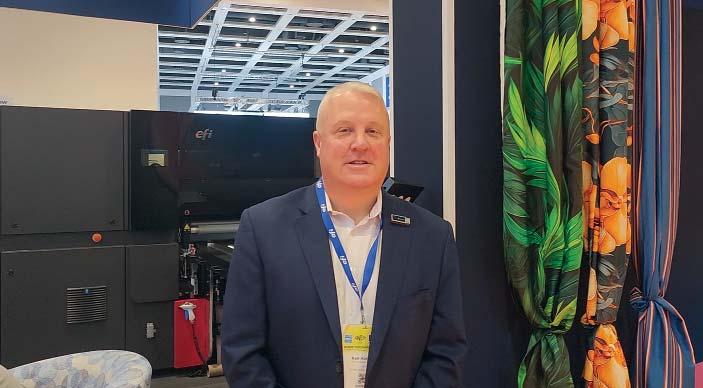
PTJ: Can you speak to the scalability of this technology?
Ken Hanulec: Absolutely. We currently offer three models of ecoTERRA printers and other three will be released soon, all of which leverage this innovative technology. These systems offer worldclass total cost of ownership (TCO) and return on investment (ROI). We're just beginning to tell this story, but we believe ecoTERRA has the potential to be a true game-changer in the digital textile space.
PTJ: How does the software side integrate with ecoTERRA?
Ken Hanulec: Our printers are driven by EFI’s Inèdit workflow solution, a worldclass system that allows designers and manufacturers to manage patterns, adjust colour variations, and simulate outcomes using avatars or digital environments. This is all powered by our advanced RIP technology, providing a streamlined and intuitive user experience from design to print.
PTJ: Are there any customer success stories that highlight the impact of ecoTERRA?
Ken Hanulec: Yes, one great example is Colourama in Poland. They use ecoTERRA for printing on interior décor items, apparel, and accessories. By

Ken Hanulec, Vice President, Worldwide Marketing, EFI
moving to our single-step direct-to-fabric printing process, they’ve reduced the need for operators and are seeing their business grow steadily—quarter after quarter.
PTJ: EFI made a big splash at FESPA. What innovations did you showcase there?
Ken Hanulec: FESPA was an exciting event for us. We had a very busy booth and showcased several of our latest printers. This included the VUTEk Q3H hybrid printer and the European debut of the VUTEk X3R, our fastest roll-to-roll printer, which comes in 3.2 and 5-meter widths. We also displayed the Pro 30F flatbed printer with simultaneous white and clear ink printing capabilities, and the VUTEk M3H Hybrid, our GS-series replacement. Alongside those, we had a kiosk dedicated to ecoTERRA, with videos and live-printed samples for attendees to see and feel.
PTJ: Any final thoughts on the future of digital textile printing?
Ken Hanulec: The future is bright. We’re just getting started with ecoTERRA, and we truly believe it will play a central role in enabling a sustainable and fully digitized textile industry. As demands for efficiency, customization, and environmental responsibility increase, EFI will continue to lead through innovation.
PTJ: Please introduce yourself to our readers Mr. Marino.
Vincenzo Marino: Hi, I'm Vincenzo Marino, and I lead the textile business at EFI. I've been in this role for one year and have been part of EFI for five years. Prior to my current position, I led the Service department and then moved on to oversee Field Operations.
PTJ: What makes EFI Reggiani a trusted name in textile printing?
Vincenzo Marino: EFI Reggiani is one of the leading global players in the textile printingmachinery industry. With a legacy spanning several decades, we are proud to deliver cutting-edge printing technologies to customers around the world. In fact, more than 90% of our production is exported internationally.
Over the years, we’ve continuously expanded and integrated our offerings. Our printer portfolio now includes not only state-of-the-art equipment but also a complete range of inks, service solutions, and software technologies—enhanced significantly through our acquisition of Inèdit. Today, we offer one of the most comprehensive and advanced solution suites available in the printing industry.
PTJ: Please tell us about EFI presence at the recent FESPA exhibition.
Vincenzo Marino: At the recent FESPA exhibition, EFI Reggiani showcased its strong commitment to ecosustainable solutions. The centrepiece of our presence was the ecoTERRA range—our sustainable pigment printing solution. Now on the market for two years, ecoTERRA is delivering strong commercial results, particularly in Europe, North America, and South America.
Looking ahead, we see significant potential for ecoTERRA, we aim of
expanding our presence by adding this environmentally friendly line to our established product portfolio. Designed for textile companies seeking high productivity while minimizing operational costs and environmental impact, ecoTERRA reduces water and electricity consumption by up to 10% and simplifies the overall pigment printing process.
PTJ: Recently, EFI unveiled its newly reorganised sales structure, please tell us about that.
Vincenzo Marino: We recently reorganized our sales structure to better meet the unique demands of diverse global markets. Recognizing that each region requires distinct strategies, we introduced two primary segments in our offering: Value Solutions and High Productivity Markets.
In high productivity markets, we lead with our EFI ReggianiHYPER and EXTRA printers—currently among the most productive step-and-scan solutions available. These printers have gained remarkable traction in Pakistan, where customers prioritize high speed, high quality, and cost efficiency. The EFI Reggiani HYPER(72 printheads) and EXTRA (40 printheads) strike the ideal balance between performance and reliability.
Despite fierce competition—especially from Chinese suppliers in the Asian market—we continue to grow in Pakistan. Our success is rooted in understanding local needs and consistently delivering dependable, high-quality machinery.

One of the hallmarks of EFI Reggiani equipment is longevity. Our machines are designed to last for decades, providing an outstanding return on investment and low total cost of ownership. In fact, many of our rotary printers built 20–25 years ago are still in operation, alongside early digital printers that remain productive thanks to ongoing upgrades and support.
PTJ: How has your experience been so far with your agent in Pakistan?
Vincenzo Marino: Our success in Pakistan would not be possible without our trusted partner, Acmatex, and the leadership of Mr. Rehmani. This collaboration is one of our most enduring and successful globally, built on years of mutual trust and shared achievements.
Acmatex acts as our local eyes and ears, offering excellent service capabilities and a deep understanding of customer needs. Their strong local presence allows us to respond quickly and effectively to the dynamic demands of the Pakistani market. Thanks to this partnership and our strong product offerings, we’re optimistic about continued success in 2025, 2026, and beyond. We are actively welcoming Pakistani customers to our Training and Application Centre, strengthening relationships and driving innovation together.
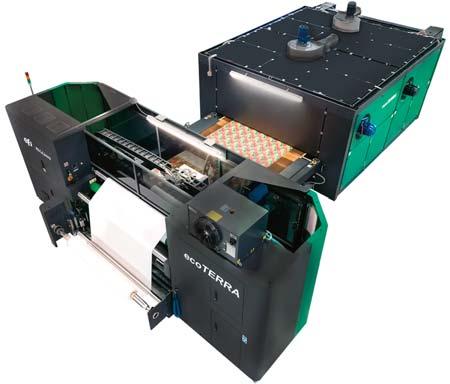
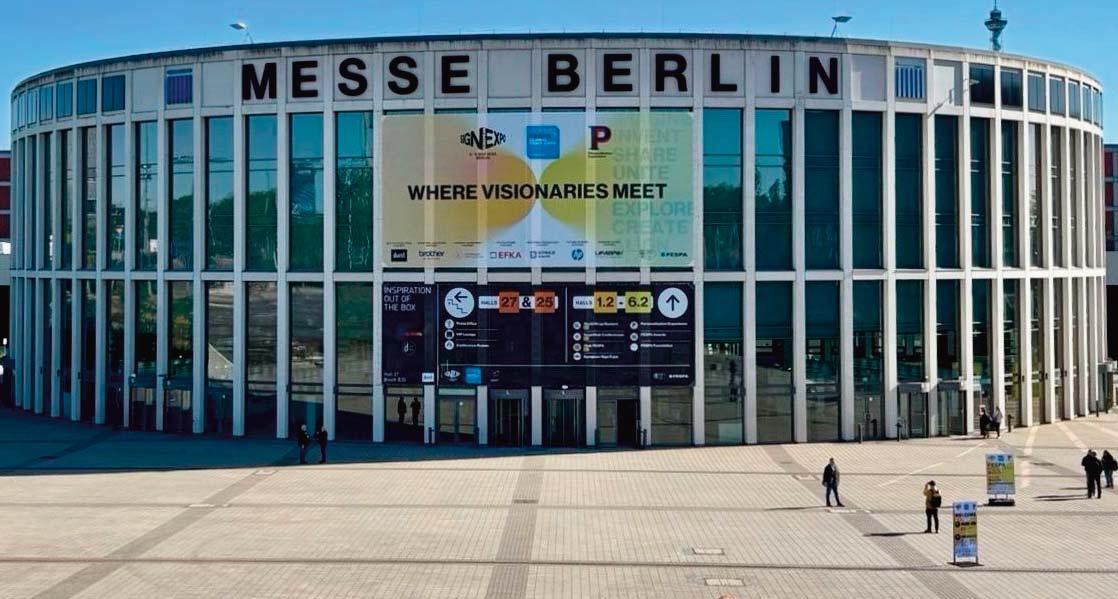

FESPA Global Print Expo 2025, European Sign Expo and Personalisation Experience (6 – 9 May 2025, Messe Berlin, Germany) welcomed Visionaries from across the speciality print industry to shape the future of print, develop forward-thinking business strategies, and explore innovative ways to translate emerging industry trends into tangible growth opportunities.
FESPA Global Print Expo 2025, European Sign Expo and Personalisation Experience (6 – 9 May 2025, Messe Berlin, Germany) welcomed Visionaries from across the speciality print industry to shape the future of print, develop forward-thinking business strategies, and explore innovative ways to translate emerging industry trends into tangible growth opportunities.
The event served as a dynamic platform for networking among key decision-makers, sparking collaborations and discovering the latest technologies driving the print, signage, and personalisation industries forward.
This year, the exhibition remained a pivotal platform for senior decision makers, with 87% of visitors holding decisionmaking positions and 71% being directors, CEOs, owners or managers. The collective median budget was 2.9 billion euros, with 40% of attendees planning to invest in solutions in the next year.
With total attendance hitting 23,061, it is clear that the breadth of exhibits and
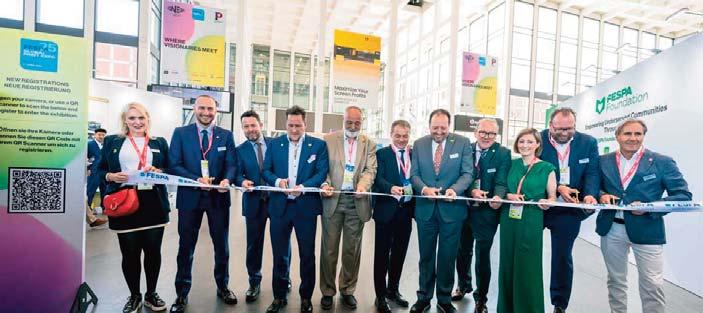
educational content is motivating two thirds of all visitors to allow more than one day to experience the event in full.
14,036 unique visitors attended this year’s events, surpassing 2024 figures by 10.5%. Visitors travelled from 126 countries, with the largest audiences coming from Germany, Poland, Italy, the UK, The Netherlands, Czech Republic, Spain, France, Switzerland and Austria.
Visitors said they particularly enjoyed the SmartHub Conference speaker sessions, the line up of features and the vast array of printing and signage technologies on display – all under one roof.
Narenda Dadid, Group Chairman, DCC Group, explains: “I come to FESPA to discover the latest opportunities and developments in the industry. The event is the ideal platform for uncovering what the future holds, expanding our knowledge and learning more about the industry from exhibitors across the world.”
Felix Hartz, Founder & CEO, Sygns, says: “My decision to visit European Sign Expo in particular stemmed from looking for new innovative suppliers of traditional and new signage. The event welcomes so many suppliers from across the globe with different goals and approaches.”
Michael Ryan, Head of FESPA Global Print Expo, comments: “The feedback we have received on our 2025 events has been phenomenal. From exhibitors and Awards winners, to conference speakers and visitors, it’s clear to see that FESPA Global Print Expo and its co-located events provided an exceptional platform for Visionaries to meet and explore opportunities. As a result of returning to Germany, we saw a 44% increase in German attendees and a 117% increase in Polish attendees in comparison to Munich 2023. In addition, there were well over 100 product and technology launches, networking – and so much more. Having the opportunity to connect with members of the print community
from across the world, supporting the growth and development of not only their business, but the wider industry, is what it’s all about. We’re excited to see what further innovations and opportunities the 2026 events in Barcelona will bring to our community.”
Folker Statchetzki, Head of Marketing, Brother, says: “FESPA is the place for us to really showcase our solutions to an interested and international audience. We’re able to converse with them, as they witness the machines in action, explore the final products and provide feedback. FESPA enables our customers to broaden their understanding of the latest innovations.”
Daniel Martinez, Senior Vice President of Large Format Printing and Construction Services, HP Inc. Spain, adds: “FESPA, for us, is the event – especially in Europe – that we attend year on year. It’s a great opportunity for our partners to showcase our solutions to their customers and throughout the event, we networked with hundreds of our own customers. Visitors can take advantage of exploring the latest and greatest solutions from HP, but also immerse themselves in the wider print industry. We’re delighted that the event will be held in Barcelona next year, our home ground, and are confident that it will also be successful!”
Flavio Rocca, Sales, NSELED, comments: “Every year, we see a growth in European

Sign Expo, so we’re pleased to be able to exhibit! It’s a great place to network with a large visitor scale, as well as many of our pre-existing customer base. So, for us it was a great show.”
Nathan David, Vice President of Client Success, Design Huddle, highlights: “This was our first time exhibiting at Personalisation Experience and it was great to witness just how many people want to create a unique experience for their customers.
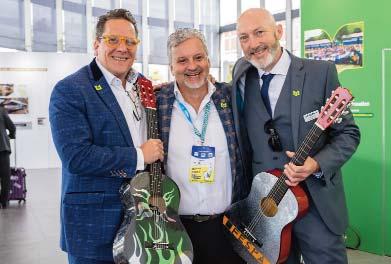
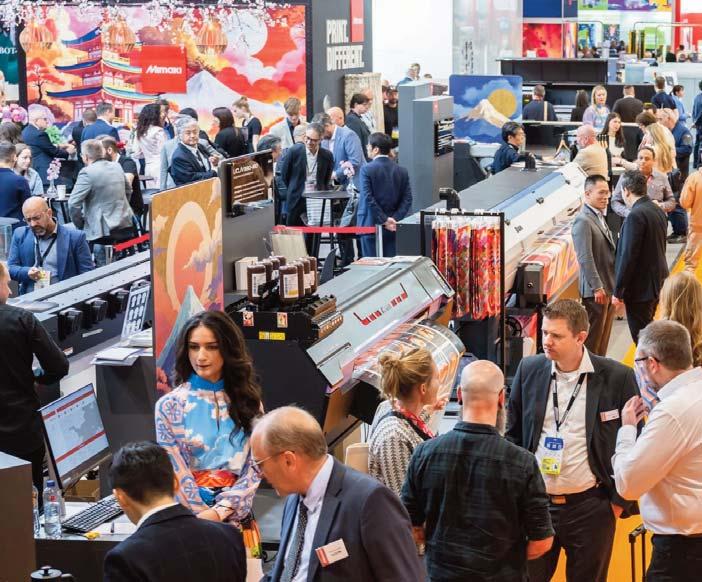
They’re moving away from traditional techniques and want to use technology to provide a top-level experience, efficiently and without compromising on quality. It was exciting to be able to have these conversations onsite!”
European Sign Expo 2025 welcomed its largest exhibitor line-up, and the third edition of Personalisation Experience introduced its all-new SmartHub feature. The co-located events and wider feature programme were a vital platform to convey imminent trends and business opportunities.
The SmartHub conference witnessed a line-up of thought leaders and industry experts providing actionable and informative advice on the latest advancements in digital technology, streamlined operations and sustainable practices when delivering customisation.
FESPA Global Print Expo, European Sign Expo, Personalisation Experience and the second edition of Sportswear Pro will take place at Fira de Barcelona, Spain from 19 – 22 May 2026.
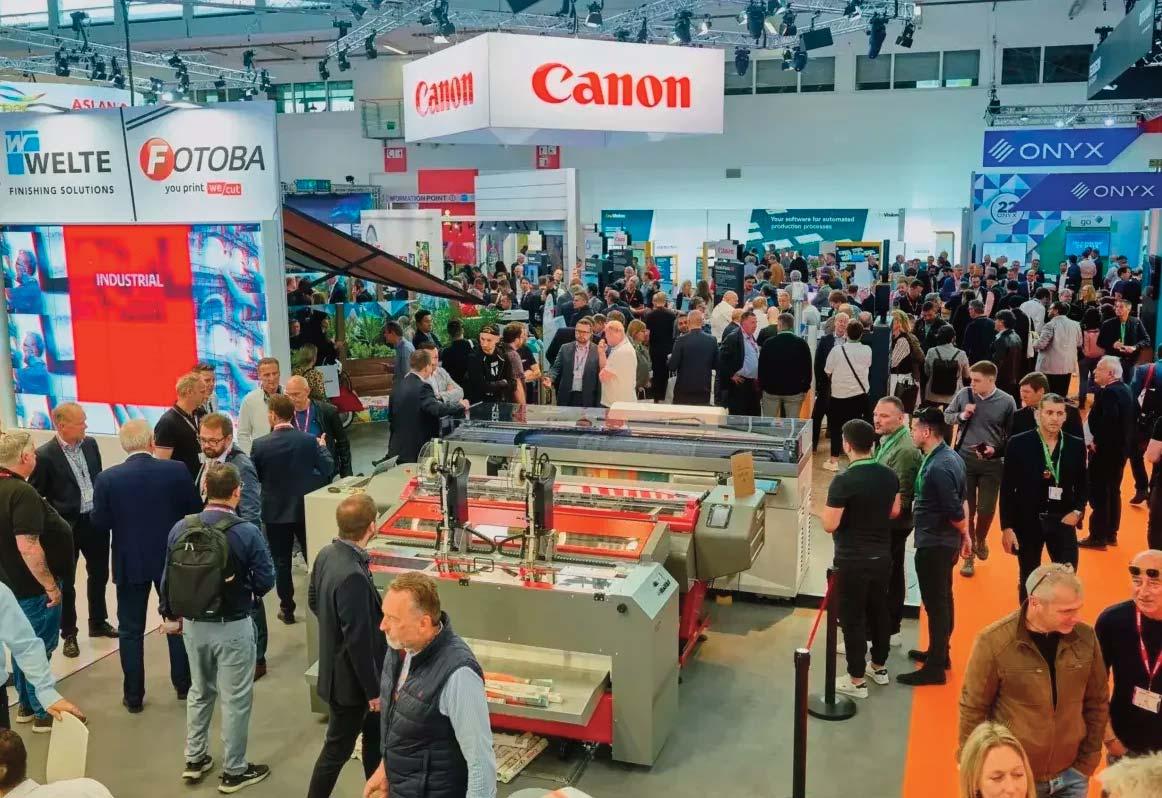

FESPA Global Print Expo 2025 in Berlin marked a significant resurgence in energy and participation from the global print and textile community. With cutting-edge innovations, sustainability solutions, and deep industry engagement, companies from around the world showcased how they are shaping the future of textile and specialty printing.
FESPA Insights – Global Growth, Digital Future
According to Duncan MacOwan, Head of Marketing & Events at FESPA, the event continues to grow as a platform for digital transformation in specialty print and textile decoration. This year’s show saw robust interest in DTF, pigment printing, and localized production.
“There’s a convergence toward digital, nearshoring, and just-in-time production. It’s about speed, personalization, and sustainability.”
FESPA remains a pivotal platform for innovation, collaboration, and futureready production strategies.

Durst Group – Advancing Sustainable Textile Printing
Durst debuted a new 3.4-meter printer co-developed by integrated R&D teams following the company's internal merger. The printer supports pigment inks and aligns with their mission to reduce water consumption and enhance sustainability—key in both home textiles and fashion.
Durst is also investing in a new textile hub in Como, Italy, to strengthen its presence in textile printing and extend its reach in pigment and reactive technologies—especially in markets like Pakistan.
“We aim to replace water-intensive reactive systems with sustainable, pigment-based alternatives.”

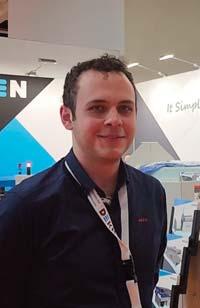
Dekken –Streamlining Textile Workflow with Automation
Belgiumbased Dekken Machinery highlighted its automated folding, packaging, and labeling systems that bring consistent quality and efficiency to textile production. The emphasis was on helping businesses scale operations with standardized workflows and minimal human error.
“Our solutions are designed to help customers grow with reliable, worry-free automation.”
Dekken’s family-run ethos and customer-centric innovation underline their position as trusted partners for operational optimization.

ROQ showcased the newly launched ROQ Impress, a fully automated Direct-to-Film (DTF) solution designed for superior print quality and efficient application. The machine integrates pressing, DTF placement, peeling, and final finishing— providing a seamless, high-end solution for garment decoration.
Already established in Pakistan since 2017 with multiple installations, ROQ aims to further strengthen its presence with the introduction of automated DTF technologies.
“We’re focused on delivering quality and consistency with every step of the DTF process.”
ColorJet – Driving the Pigment Printing Revolution
India’s ColorJet made a compelling case for digital pigment printing as the sustainable path forward. Under the leadership of industry veteran Michele Riva, the company showcased their rapid global expansion and significant R&D in pigment technologies.
They introduced a high-productivity 3.2-meter machine in China and unveiled a new 1.8-meter pigment printer at FESPA with inline preparation and white ink capability.
“Pigment is the future—no washing, no steaming. It’s green, efficient, and scalable.”
ColorJet’s stronghold in India and growing international presence highlight its ambition to become a global player in sustainable digital textile printing.
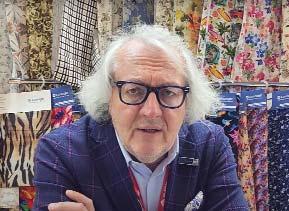
Mimaki Engineering marked its 50th anniversary at FESPA 2025 with a strong visual statement through its expansive and diverse booth. Their exhibition reflected the company’s journey from humble beginnings to a global innovator in digital printing technologies. Offering a wide portfolio spanning industrial inkjet printers, 3D printing, and textile solutions, Mimaki used this platform to demonstrate how customers can expand and diversify their offerings in today's dynamic market.

“FESPA this year is amazing... way busier than ever... feels like FESPA is back!”
Mimaki’s presence reaffirmed its commitment to delivering “Something New, Something Different” by providing end-to-end solutions for the sign graphics, industrial, and textile sectors.
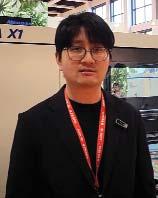
ATEXCO presented its comprehensive portfolio for pigment, sublimation, and paper printing. With a strong commitment to local service and global reach, ATEXCO underscored its position as a trusted provider of complete printing ecosystems, including inks, color profiling, and support.
With over 450 units already running in Pakistan, the company sees no need for aggressive marketing—letting its products speak for themselves.
“We are committed to serve our clients with cost-effective and highquality solutions globally.”
ZSK Stickmaschinen GmbH –Empowering Customization in Embroidery
ZSK highlighted its latest innovations in embroidery technology, including the Sprint 8 model with advanced "finger

head" design and a new one-knob adjustment system. A key attraction was their free-to-download terminal software designed to empower startups and small businesses—even those not using ZSK machines—with intuitive, ready-made design customization.
ZSK also emphasized the strength of the Pakistani embroidery market postIGATEX, reaffirming their intention to return with tailored solutions for the region.
“It’s a tool for everyone – not just ZSK users – to make embroidery more accessible.”
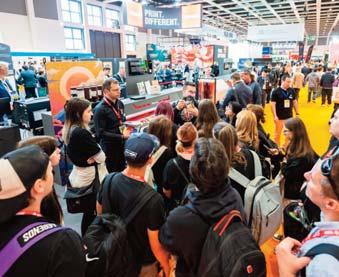
FESPA 2025 showcased a vibrant and forward-looking industry where automation, digital printing, and sustainability took center stage. From embroidery and packaging to pigment and DTF printing, participating companies demonstrated powerful innovations that cater to a rapidly evolving market. The strong interest from and relevance to Pakistan—highlighted repeatedly by exhibitors—underscores the country’s continued importance in the global textile supply chain.
In this exclusive interview, PTJ speaks with Neil Felton, CEO of FESPA, and Sara Horlock, Group Partnership Manager at FESPA about the newly established FESPA Foundation. In just over 200 days, the Foundation has already made a significant impact, with more ambitious plans underway.
PTJ: Please introduce yourselves and explain the mission behind the FESPA Foundation?
I'm Neil Felton, CEO of FESPA and I’m Sara Horlock, Group Partnership Manager at FESPA. Together, we lead the FESPA Foundation, which we launched just over 200 days ago. The Foundation was born out of our desire to extend the influence of FESPA beyond exhibitions— to give back to the global print community and use the power of print to make a tangible social impact.
PTJ: What are the Foundation’s core objectives?
Neil: The mission is built around three key pillars. First, we want to repurpose printed materials from our events and deliver them to communities—especially in regions where educational resources are limited. Second, sustainability is a priority. We’re committed to recycling materials from our trade shows to reduce waste and promote responsible practices in the print industry.Finally, we aim to empower young people around the world through education, creativity, and exposure to the possibilities that print can offer.
PTJ: What have you achieved so far?
Neil: One of our proudest milestones has been the transformation of Evane Intermediate School in KwaZulu-Natal, South Africa. It was the Foundation’s first major project. We didn’t just deliver print materials—we renovated parts of the school and helped create an environment far more suited to learning. What’s

remarkable is that the local government had been trying to make similar improvements for over five years. We managed to complete the work in just a few months. You can see the full story on the FESPA Foundation website, and now we’re expanding our work to four more schools.
PTJ: Sara, can you tell us more about this next phase?
Sara: Absolutely. We’ve identified four new schools in South Africa, thanks to the work of our colleague Steve on the ground. We’re now reaching out to our print industry partners to support this next stage—helping with structural repairs, rebranding, and visual transformation, just as we did with Evane. What’s particularly encouraging is how engaged the communities already are. But our aim goes further than one-off improvements—we want to build longterm partnerships where schools are ‘adopted’ and supported over time, so we can track their growth and development.
PTJ: How has the Foundation reshaped perceptions of FESPA as a brand?
Neil: For many, FESPA is known primarily as a trade exhibition organiser. But the truth is, we’re much more than that. We’re a federation of 37 national associations, representing over 14,000 printers worldwide. Since 2017, we’ve reinvested more than Euro 7 million back into the industry through education, research, and development. The Foundation adds a human dimension to
our work—it allows us to use the very products of our industry for social good. That’s what our tagline ‘Print for Good’ is all about.
Sara: What’s been really special is the response we've seen here at this show. Our partners have been incredible— generous with their time, materials, and support. But what surprised us was the reaction from visitors. We had people turning up with boxes of donated items this morning.
It’s brought the community together in a way we’ve never seen before. There’s a real sense of shared purpose, and we’re excited to build on that momentum.
PTJ: It certainly sounds like the FESPA Foundation is just getting started.
Neil: Absolutely. We've made a strong start, but there’s much more to come. The goal is to scale this model globally—wherever the print community exists, there’s an opportunity to do good.
About FESPA Foundation
Established in 2024, the FESPA Foundation is the charitable arm of FESPA, focused on using print as a force for good. With a mission to drive sustainable change through education, community engagement, and environmental responsibility, the Foundation supports impactful projects across underserved regions— transforming schools, empowering youth, and reducing waste by repurposing print from global exhibitions.

Co untr y Portugal
Porto -
Cit y 7 10
Venue Porto Palacio Hotel & Spa
Join us at the 93rd Textile Institute World Conference (TIWC) 2025 , hosted by AQUITEX with industry leaders. This marks the first time a company hosts the event, emphasising collaboration between industry and academia. The theme, "Fibre to Future- Transforming Fashion and Textiles through Sustainability and Digitalisation;' explores how sustainability and digital innovation are reshaping the industry.
This year's conference will explore cutting-edge approaches to addressing sustainability challenges, from the environmental impact of textile production to the development of circular economies. It will showcase innovative digital technologies that enhance efficiency, transparency, and sustainability across the entire supply chain-from fibre production and manufacturing to consumer use and end-of-life solutions
Invitation letters for visa applications will be provided after registration and payment are completed. Request your invitation letter as soon as you register. For more information, contact Robyn Ingham, senior events coordinator at ringham@textileinst.org.uk
Start making your plans now for TIWC 2025 to ensure you don't miss out ...
Host organisation
Sponsorship Packages
Please visit textileinstitute.org/events/tiwc for more information.
Early Bird Fees
Non Tl Member: EUR €660 (approx. GBP£550.00)
Tl Member: EUR €515 (approx. GBP£430.00)
These rates are available until 15 June 2025.
Standard Fees
Non Tl Member: EUR €800 (approx. GBP£670.00)
Tl Member: EUR €660 (approx. GBP£550.00)
Other Fees
Tl Representative: EUR €480 (approx. GBP£400.00)
Student: EUR €240 (approx. GBP£200.00)
Day Rate: EUR €300 (approx. GBP£250.00)
Accompanying Person: EUR €240 (approx. GBP£200.00)
*Accompanying person criteria: Lunch and social events only.
For group bookings of 3 delegates or more, please email booking s.tiwc25@aq u itex.pt to secure a 1Oo/o discount.
All bookings need to be made in a single transaction.
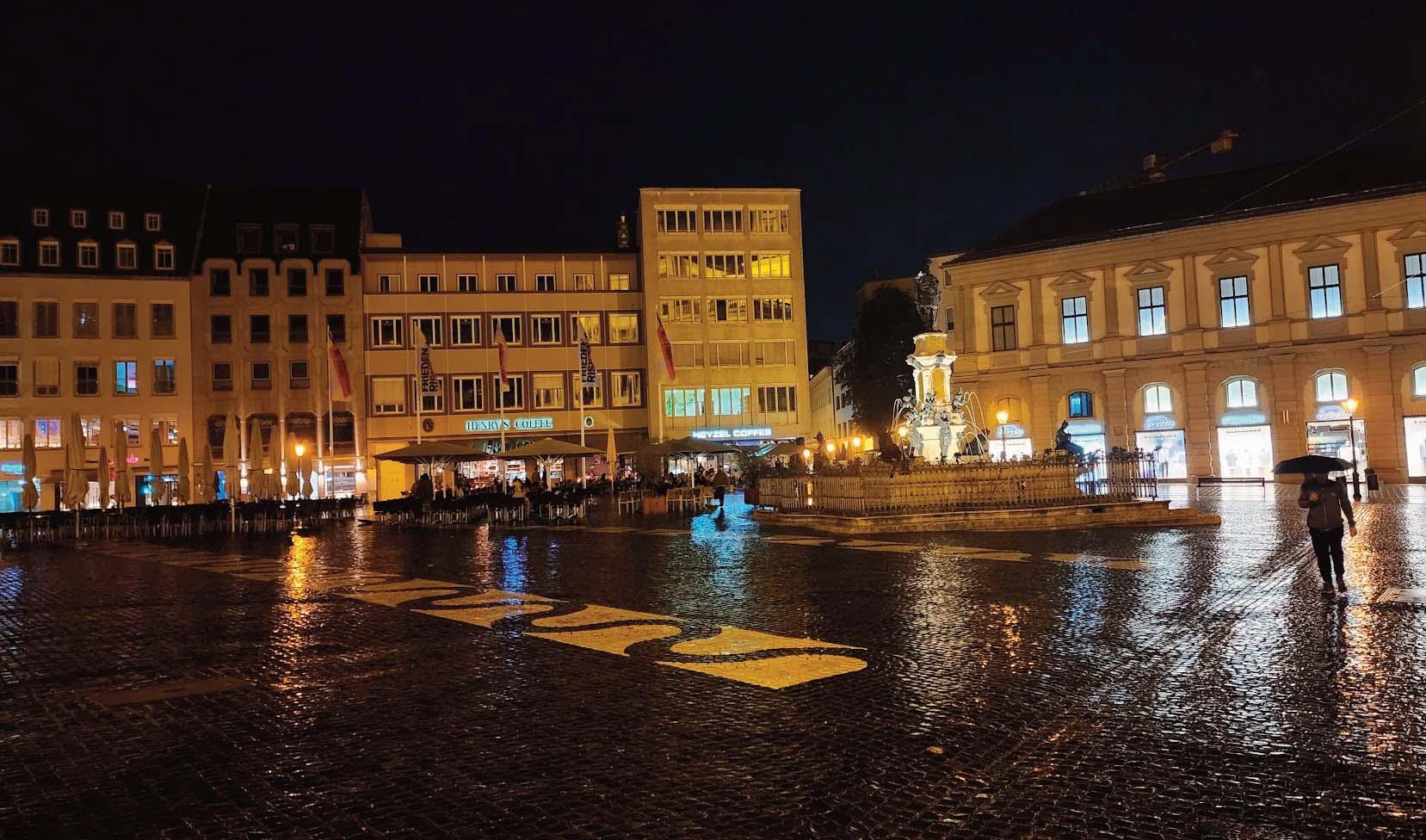

The VDMA Joint Industry Meeting, held on June 4–5, 2025, in Augsburg, brought together leaders from the Textile Machinery (TXM) and Textile Care, Fabric and Leather Technologies (TFL) sectors under the theme “From Fibre to Fashion.” This high-level event facilitated dialogue around sustainability, innovation, trade, and the circular economy.
Day one opened with internal board meetings, followed by a joint session where Dr. Harald Weber (VDMA TXM) and Elgar Straub (VDMA TFL) welcomed attendees and presented an overview of global economic and industry-specific developments. Oliver Richtberg, Head of VDMA Foreign Trade, addressed key international challenges, including supply chain instability, trade policy shifts, and rising energy costs. The opening session concluded with live audience polling on industry expectations.
During the TFL Industry Meeting, Dr. Matthias Schopp (Kannegiesser GmbH) was proposed for the board. The activity report highlighted VDMA TFL’s engagement in global trade fairs, regulatory monitoring, and sustainability initiatives. Olaf Schmidt from Messe Frankfurt offered a preview of Texprocess 2026, emphasizing strong exhibitor interest and new thematic areas, including “Econogy” and the Hosted Buyer Program.
The evening featured a visit to tim – the Textile and Industrial Museum Augsburg. Introduced by Günter Veit and Dr. Janpeter Horn, participants explored exhibitions on textile history and innovation. The visit underscored the sector’s heritage and its ongoing transformation. A networking dinner followed, allowing members to continue discussions in an informal setting.
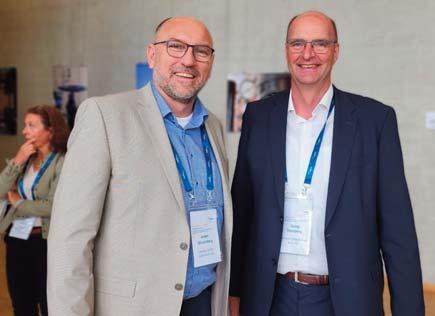
The second day began with a visit to the Institut für Textiltechnik Augsburg (ITA). Prof. Dr. Mesut Cetin guided participants through ITA’s research in textile recycling, including AI-assisted sorting systems (DETEX), inline color detection (ColoSens), and complete fiber-to-fiber recycling workflows. The Recycling Atelier showcased scalable systems for turning textile waste into high-quality yarn and nonwovens.
At the Technologiezentrum Augsburg (TZA), Prof. Dr. Thomas Gries (RWTH Aachen) delivered a keynote on the Textile Circular Economy. He introduced the “Fundamental Laws of Recycling,” explaining the physical and economic limits of fiber reuse, polymer recovery, and cost escalation. His call for coupling recycling with renewable energy and digital design was a key takeaway.
A panel discussion followed featuring Prof. Holger Erth, Hans-Peter Hiemer (ASSYST), and Verena Thies (THIES GmbH), moderated by Zackes Brustik. The discussion emphasized circular design strategies, lifecycle assessments, and new business models for textile production in transition.
The final stop was a visit to VEIT GmbH, where participants saw demonstrations of advanced pressing and finishing equipment. VEIT’s focus on energy efficiency, ergonomics, and quality showcased how machinery innovation supports both productivity and sustainability in garment processing.
The two-day event successfully combined strategic discussion, technical insight, and practical industry visits, reaffirming the vital role of collaboration in driving the future of textiles—from fibre to fashion.


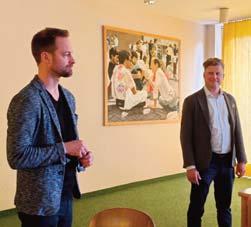
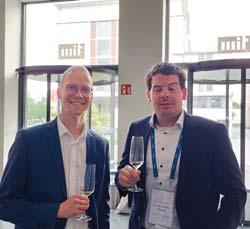

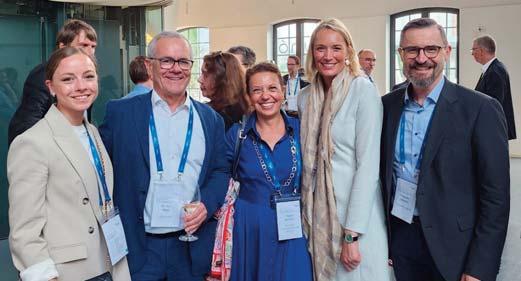
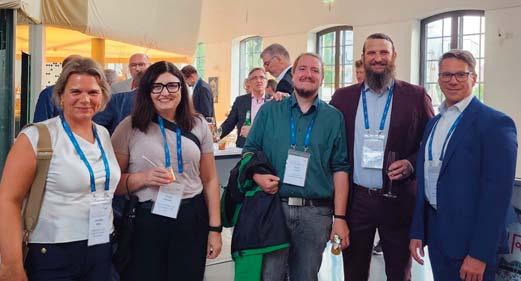
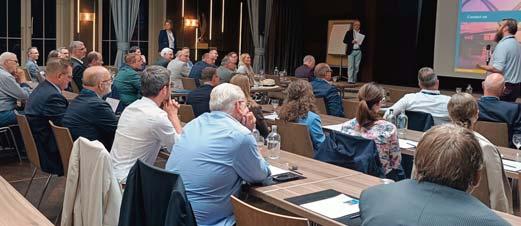





Pakistan has become a denim hub in the region in less than a decade and is considered one of the leading suppliers of quality denim fabric to the world's known brands for garments. The denim industry is contributing substantially towards exports and creating job in the denim sector. At present Pakistan is ranked among the top three denim manufacturers in Asia.
The global market value of denim fabric was US$17.1 billion in 2022 and is expected to increase to US$95 billion by 2030. Denim or blue jeans are by far the most valuable product in the denim industry, though there has been an increase in value for every type of denim clothing item.
Western wear, a style of clothing originating from the 19th century American old west region, uses a large amount of denim. As such, the market value of western wear was also projected to increase through 2025 to 2032, and reach a value of US$152 billion. At present, the major manufacturering countries of denim fabric are concentrated in China, India and Pakistan.
The major driving factors of global denim jeans market are rising disposable income among the individuals, surging ecommerce industry and increasing preference for wearing denim jeans.
by Nadeem
Manufacturers are adopting leading fibre technologies, which ha enabled them to offer denim jeans products for at leisure and activewear besides the workwear and casual wear. The major restraining factor of global denim jeans markets are changes in consumer lifestyle & preference and the introduction of yoga pants and other active wear.
The denim jeans are a specific type of trousers which are made of denim or dungaree cloth. The denim jeans are one of the most significant parts of the clothing and apparel industry.
Increasing demand for denim jeans products is further expected to impact the global market growth of denim jeans positively.
Denim is now one of the key apparel sectors and the driving force behind the apparel exports of the country. The United States were the major denim producer throughout the years, but now with the emergence of the countries like China, India, Pakistan and Bangladesh, it is evident that denim is not an American product anymore.
Pakistan has become denim hub in the region in less than a decade and is considered one of the leading suppliers of quality denim fabric to the world's known brands for the garments.
Table 1: Export of Cotton Woven Denim Fabrics
Source: Pakistan Bureau of Statistics
Denim fabric has been developed and over the last few years; there is rapid growth and expansion in its use and production capacity in Pakistan. There are about 40 major players in the denim industry of Pakistan. Some of them, like Artistic Fabric Mills, Pak Denim Limited, Al-Ameen Denim Mills Limited, S.M Denim Mills Ltd, Denim International, Classic Denim, Rajby Industries, Soorty, etc. are producing more than 50 million square metres of finished denim fabrics monthly.
Supply of denim fabric from Pakistan is a specialised textile product with its diversified increasing use in jeans, fancy and fashion apparel, curtain, bed sheets, canvas, uniforms, fire-resistant apparels for all seasons and all ages.
Export of cotton denim fabrics from Pakistan increased from 62 million square metres in 2022-23 to 97 million square metres in 2023-24, thus showing a significant increase of 57.15% and respectively in terms of value increased from PKR 100 billion to PKR 136 billions, thus showing positive increase of 36.77%, details in Table 1.
Bangladesh, Turkiye, Egypt, Sri Lanka and Italy are the major markets for denim fabrics exports from Pakistan. With about 48 million sq. meters of cotton denim fabric being exported to Bangladesh in 2023-24, it is a major market for Pakistan. Country-wise exports of cotton denim fabrics from Pakistan are given in Table 2.
The world's top denim fabric exporting country in 2024 was China while the top denim fabric importing country was Bangladesh. Mexico was the largest supplier of denim jeans to the USA while Bangladesh was the largest supplier of denim jeans to the EU. America tops the list of denim jeans users and an average estimate puts the figure at 450 million pairs a year. The top global denim fabric exporting countries are China, Hong Kong, Turkey, Italy, Pakistan, India, Spain and Brazil.
Traditionally the denim fabric is made of 100% cotton indigo dyed warp and white weft yarn of coarser counts. The fabrics are woven on projectile, rapier, airjet and shuttle looms.
Initially the denim fabric was developed as work wear. Now the scenario is different. Denim fabrics has gained immense popularity and accepted by all irrespective of gender, age-groups and profession. So, there is tremendous challenge on the part of denim product manufactures to innovate and develop products to suit requirements of different consumers.
Source: Pakistan Bureau of Statistics.
Currently, jeans are available in a variety of colors and styles to suit various consumer needs. Denim represents an evergreen fashion trend. Denim sales based on styles and fits are heavily dependent on street fashion and celebrity fashion trends. Growth in the market is influenced by economic, social and demographic trends.
The innovation remains critical to market growth and jeans have been reinvented from time to time over the last few decades. The manufacturers are focusing on newer designs, styles, and fit to suit changing consumer preferences and fashion trends.
The market situation does not allow the global players in the denim to increase consumer prices and therefore

they have to absorb the price increases from denim fabric producers worldwide.
Since major denim importing countries are opting for vertical integration, export markets are shrinking and margins are under pressure.
Manufacturers can either improve their production practices to enhance productivity and hence reduce costs or increase value addition at the fabric stage by producing premium quality denim.
In this scenario, Pakistan has emerged as a key supplier of this highly demanded fabric due to the competitive prices and in house innovations by the denim manufacturers in Pakistan. In conclusion, it is well accepted that denim is an evergreen fashion and liked by all irrespective of gender, age and profession. A lot of innovation and research is to be done on continuous basis to fulfill requirements of diverse consumers keeping in mind its impact on society and environment.
References
1.Pakistan Bureau of Statistics.
2.State Bank of Pakistan-Annual Reports.
3.Trade Development Authority of Pakistan.

Picanol Group officially opened its new headquarters in Ieper on Friday, April 25, in the presence of Belgium’s Prime Minister, Bart De Wever. The modern, sustainable work and meeting place has an impressive floor area of 20,000 square meters, providing the necessary space for the further growth of Picanol, Psicontrol, and Proferro. The new headquarters was built on the existing company site in Ieper and is connected to the production departments located on the site. CEO Luc Tack stressed that this investment not only marks the sustainable anchoring of the company in Ieper but also confirms the company's belief in the future of manufacturing, while the Belgian Prime Minister underlined the importance of the country’s industry for the prosperity and growth of Belgian society.
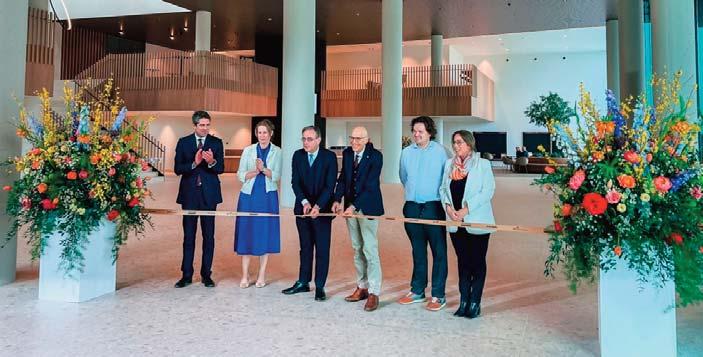
"Our new headquarters provide a work and meeting place for our employees that is pleasant and open – as well as a stylish customer reception area. This investment is necessary for the further growth of our companies -
Picanol, Psicontrol, and Proferro. It also confirms our belief in the future of the Belgian manufacturing industry. By continuing to invest in top technology, automation, and digitalization, we can maintain our prominent, global role as a
weaving machine manufacturer and as a supplier of electronic controllers and cast iron parts," explains CEO Luc Tack.
"In times of international economic turbulence, it is more important than ever that our country and its social fabric are supported by a robust economy. An economy like that of West Flanders is formed of strong, locally-anchored businesses with a long history, such as Picanol Group. This investment by Picanol Group shows that it shares my belief in the future of manufacturing in our country and puts its shoulder to the wheel," says Prime Minister Bart De Wever.
A future-oriented building, with a nod to Picanol's history
Designed by AAVO Architects, the new building has been constructed in the shape of a weaving shuttle – which is architecturally consistent with Picanol's history as a weaving machine manufacturer. The headquarters consists of a basic, two-story structure that includes a spacious lobby, visitor reception areas, meeting rooms, an auditorium, and offices. The three upper oval floors contain offices, meeting rooms, and a company restaurant with a roof terrace that offers spectacular views of Ieper and the surrounding hills. The open, transparent architecture promotes interaction between the various departments. Vehicular access to the new

headquarters is via newly constructed access and exit ramps on the nearby Zuiderring (ring road). Bicycle traffic from the Zuiderring will access the new headquarters via a new bicycle tunnel passing under the vehicular access and exit ramps. The new building will accommodate 450 Picanol Group employees. Worldwide, Picanol Group employs 2,200 people, including more than 1,300 in Ieper. Picanol Group also provides significant employment via its local suppliers.

Construction work began in September 2022 and took some two and a half years to complete. It was carried out by the main contractor, Alheembouw, with the cooperation of numerous, mainly local partners. The building incorporates state-of-the-art technology and materials to make it as sustainable and energy-friendly as possible. This includes using ground heat (via geothermal energy) to heat and cool the building. Rainwater recovery has been maximized and there is also a green roof area. The design of the environment surrounding the building will follow the latest insights into soft nature management.
The stylish new office building incorporates a range of meeting facilities, a company restaurant with a healthy, varied daily menu, showers for after exercise, and several outdoor areas - all in a beautiful setting with spectacular views. This makes Picanol Group even more attractive as a leading employer in the Westhoek region. "The new headquarters offers our people every opportunity to optimize the way we work together. It will also work to our advantage in regard to the recruitment of new talent," said Luc Tack.
With over 125 years of experience in the weaving industry, Stäubli is well known as a leading global manufacturer of high-speed shedding and weaving preparation machinery. Stäubli offers reliable machinery to produce a wide range of fabrics, including denim fabrics, shirting fabrics, and bed linens, without compromising their quality. From cam motions to rotary dobbies and drawingin machines, all Stäubli machines are manufactured to fit the specific needs of weavers in the Pakistani textile market.
The Pakistani textile industry has become one of the world’s highest cotton producers. Hence, the production of garments and home textiles has contributed to its advancement in the textile sector.
In recent years, the Pakistani market has faced multiple supply chain challenges. Due to high energy costs, lack of technological investments, and supply chain disruptions, textile manufacturers battle with inefficiency and unstable demands year-round.
In response to these challenges, Stäubli a renowned global manufacturer of weaving machinery provided its solutions adapted to warp preparation, as well as high-speed shedding solutions to produce high-quality fabrics for home textiles and garment fabrics at a reduced cost.
Efficient drawing-in of yarns for fabric manufacturing
Among its expertise, Stäubli offers its SAFIR series of drawing-in machines for warp preparation. The SAFIR PRO S47 is a high-speed automatic drawing-in system ideal for processing standard fabrics. It meets the highest quality standards for the drawn-in harness helping users save time and cost.
Thanks to the Active Warp Control 2.0 Double End Detection, manufacturers benefit from the faultlessly drawn-in harness to produce innovative,
outstanding, and unique designs for denim fabrics, shirting fabrics, and home textiles such as upholstery, bed and table linen.
This cuttingedge technology enables automatic detection of yarns and easy adaptation of warp sheets, for the weaving process. Stäubli works precisely with each customer to ease their needs. With automated systems, the production of quality materials at reduced time and cost is ensured. Weaving mills access reduced operational costs by minimizing


errors and waste as this machine offers very high and error-free drawing-in rates, and quick and easy style change without affecting the fabric quality.
weaving solutions for high productivity
Manufacturers in the textile sector need flexible and reliable machinery that will not only help reduce costs but also keep the quality of their products. Stäubli provides a wide range of reliable weaving systems, including cam motions and rotary dobbies. The S3280 rotary dobby is an ultra-high-speed operation machine with minimal vibration, suitable for producing all types of patterned fabrics.
This machine can be suitable for air-jet applications and is customized according to the required performance and parameters of the weaving machine. This dobby is equipped with up to 16 levers and can be used with the new maintenance-free harness motion e32/e33 offering high performance at its peak. Its fully integrated cooling system and a new lubrication system, ensure an optimized regulation of the machine and provide users with low maintenance operations, making it ideal for weaving mills to reach high productivity and high return on investment in the long run.
MyStäubli platform for efficient machine use and maintenance
Stäubli offers innovative machinery as well as the required support that ensures their optimal use. In the process of easing customers’ pain points, Stäubli offers its customers a full package of support to guarantee the durability and use of their machines throughout their lifespan. MyStäubli is a versatile and complete web app that makes it easy to take care of your machinery, optimally train your team, complete your knowledge, and easily purchase spare parts.
Following the customer’s needs, the platform offers access to technical documentation, tutorials, maintenance follow-up, and support services, either live or remote. Weaving mills can now tackle the complexity involved in the use of machines, by accessing real-time data analysis and predictive maintenance of machines, ensuring effective equipment management and minimised downtime.


Saurer recently exhibited at IGATEX Pakistan 2025 that took place from 2426 April in Karachi. As a global leader in spinning technology, Saurer presented innovative solutions "From bale to yarn" to support the evolving needs of Pakistan's dynamic textile industry.
Live demonstrations
Visitors were able to see the Autocoro 11, Saurer's fully automated rotorspinning machine, in action. It offers 10% more energy savings than the previous generation and, thanks to Synchropiecing60, can efficiently process even the shortest recycled fibres. Belcoro is the brand name for Autocoro's highquality yarns. Also on show was the Autoairo, Saurer's high-speed air-spinning machine that produces Belairo yarns with extremely low hairiness, ideal for towels, polo shirts, and knitwear.
Comprehensive spinning solutions
Saurer offers a complete range for spinning preparation and final spinning, including the Autocard SC7, the Zinser 51 ring and compact spinning machine, and the efficient BD 8 semi-automatic rotor-

spinning machine – now enhanced with the energy saving Twinsuction system.
Saurer Twisting Solutions – setting new industry standards
Saurer Twisting Solutions provides intelligent, cost-effective machines for diverse applications such as tire cord, carpet, staple fibre, glass filament and industrial yarns. With decades of experience, Saurer's Two-for-One twisting machines for staple fibre yarns lead in terms of yarn quality, flexibility, energy efficiency and space-saving design. Built for durability and easy maintenance, they help spinning mills to
produce twists productively and efficiently.
Small components for a big impact
Texparts presented high-performance components, such as drafting arms and Eshape spindles, which improve yarn quality and can deliver energy savings of up to 6%.
Sun – Service Unlimited
Saurer supports customers with lifetime service, upgrades, and retrofits such as the Autocoro rX Fibre beard support for recycling.

Jeanologia sets the course toward 5.Zero textile production in Pakistan
The Karachi Expo Center hosted a new edition of IGATEX, Pakistan’s leading textile industry trade fair. At a decisive moment for the region’s manufacturing sector, Jeanologia presented its proposal for technological integration to drive modernization through automation, sustainability, and productivity.
With nearly two decades of presence in Pakistan, Jeanologia has helped transform the local production landscape by promoting competitive models based on cutting-edge technologies such as laser, ozone, e-Flow, and water-recycling systems like H2Zero. Designed to be accessible to both small workshops and large corporations, these solutions have enabled more sustainable and efficient denim production—reducing water consumption by up to 85%, minimizing chemical use, and ensuring safer processes for workers.
At this year’s IGATEX, Jeanologia highlighted the potential of its laser technology to automate processes and optimize marking quality and speed— critical factors for boosting productivity and lowering cost per garment. It unveiled Compact Super, the fastest laser machine on the market, as part of its portfolio of high-productivity solutions built on intelligence, speed, and precision—elements essential for the future of the textile sector, especially denim.
All these innovations converge in the Laundry 5.Zero model, the first denimfinishing plant to guarantee zero pollution. Already operational in Pakistan, this solution represented the evolution from traditional factories to fully digital, scalable production systems with a neutral cost balance.
“Hyper-automation is not only a way to reduce costs; it is also a key tool for sustainable, traceable production
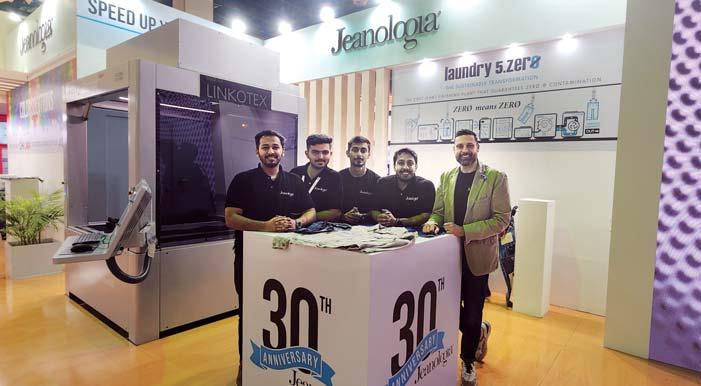
that meets the market’s new challenges,” says Umer Khan, Jeanologia’s Area Manager for Pakistan. “With Laundry 5.Zero, we have shown that it is possible to scale up sustainable production without sacrificing profitability. Our goal is for Pakistan to continue leading the global denim market from a position of eco-efficiency and advance automation.”
With 8.5% of its GDP tied to textiles, Pakistan has established itself as a key
node in the new global manufacturing map. Its favorable cost structure and robust production facilities make it a strategic destination for global textile operators.
Jeanologia works closely with local mills, brands, and exporters to accelerate this transformation and reinforce the country’s leadership in the sustainable denim era.
“We have supported the sector through its evolution, helping manufacturers and brands integrate technology to maximize productivity, reduce environmental impact, and deliver a globally competitive product,” adds Umer Khan.
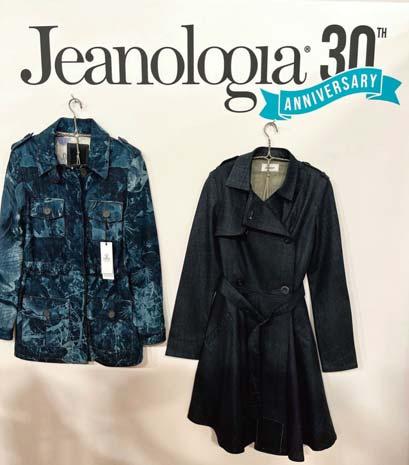
With over 35% of the world’s five billion annual jeans produced using its technologies, the Spanish company consolidates its position as a strategic partner for brands, manufacturers, and exporters worldwide reaffirming its mission to transform the textile industry through innovation and sustainability.
By participating in IGATEX 2025, Jeanologia underscores that the future of textile manufacturing lies in digitalization, automation, and sustainability—recognizing Pakistan as a pivotal hub in this transformative process.

Zhejiang Rifa textile machinery co., ltd. is founded in 1993. The company is a China national key high-tech enterprise. Zhejiang Rifa Textile Machinery Co., Ltd. is committed to the "digital technology" of the mechanical and electrical industry, is a well-known textile machinery manufacturer in China, and now it holds three subsidiaries: Shandong Rifa Textile Machinery Co., Ltd., Anhui Rifa Textile Machinery Co., Ltd., Zhejiang Rifa Textile Machinery Tech Co., Ltd.
Blow-room machinery is a set of machines used in the textile industry for the initial processing of raw cotton or other fibers. The primary function of this machinery is to clean, open, and blend the fibers to prepare them for further processing. The process involves several stages, including opening the bales of raw material, removing impurities and dust, blending different types of fibers for uniformity, and finally, creating a

consistent sheet or lap of material. This machinery plays a crucial role in ensuring the quality and consistency of the final textile product, making it an essential part of any textile production line.
RS51 rotor spinning machine adopts single spindle take-up yarn technology which is a product with simple operation and advanced automation. It has the characteristics of more rotor no., high speed, multiple varieties, and high efficiency.
The MK8 Carding Machine from Rifa is developed from the original technology
of Crosrol in the United Kingdom. Thanks to the powerful technology research and development platform of Rifa Textile Machinery, through continuous technological innovation, it dares to innovate and gradually form full-process pre-spinning equipment with core competitiveness. Rifa is committed to providing customers with excellent intelligent solutions.
Zhejiang Rifa Textile Machinery Co., Ltd. together with its Pakistani agent Akhtar Industries exhibited at IGATEX Pakistan 2025.
Picanol together with their agent Madhani Associates showcased their latest innovation at IGATEX Pakistan 2025
For more than eighty years, Picanol has played a pioneering role in the global textile industry and it is currently the world’s leading weaving machine manufacturer. Picanol develops, manufactures, and sells high-tech weaving machines based on airjet and rapier technology. Picanol offers upgrade kits, spare parts, training, troubleshooting services and also digital services for its weaving machines through PicConnect. Picanol has its headquarters in Ieper (Belgium) and it employs more than 1,200 people worldwide.
“We are delighted to have participated in IGATEX, which is an important date on the calendar of the
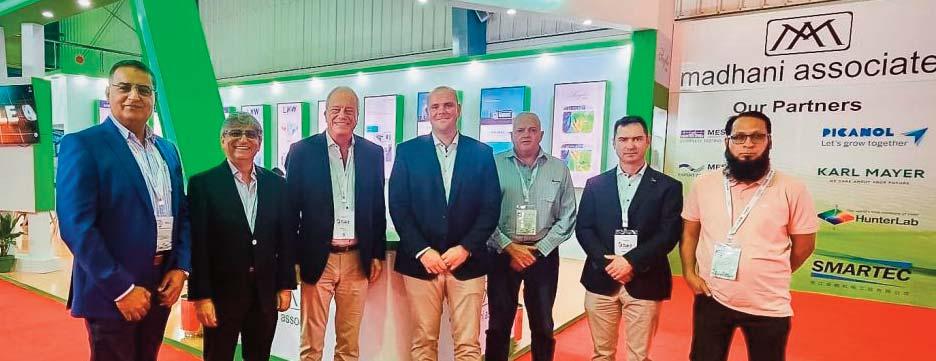
Pakistani textile industry. During the exhibition, our guests had the opportunity to explore and learn about our rapier and airjet machines. Pakistan remains one of the most important and largest markets for us.
In addition toour training center, we continuously invest in service to guarantee our customers fast and efficient technical support. A strong team of 11 engineers, headed by the
experienced Service Engineer, Clinton Blackler, is serving the Pakistani market with dedication and professionalism. Installations, troubleshooting, and training sessions are the daily commitments they make to our valued weavers. The best performing machines in combination with the best team really make the difference and are key for success!” explains Bruno Caffieri, Sales Manager, Picanol.





